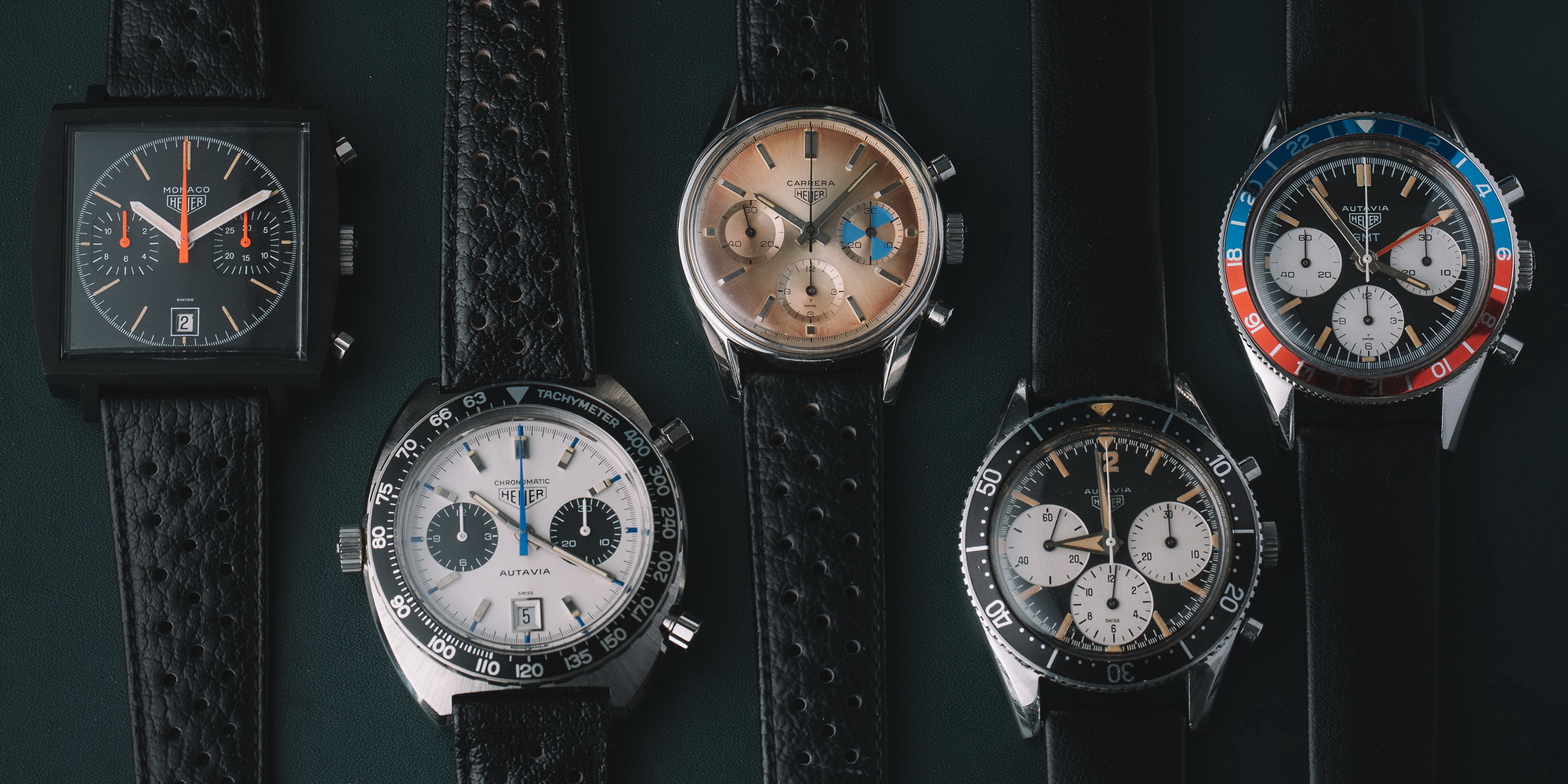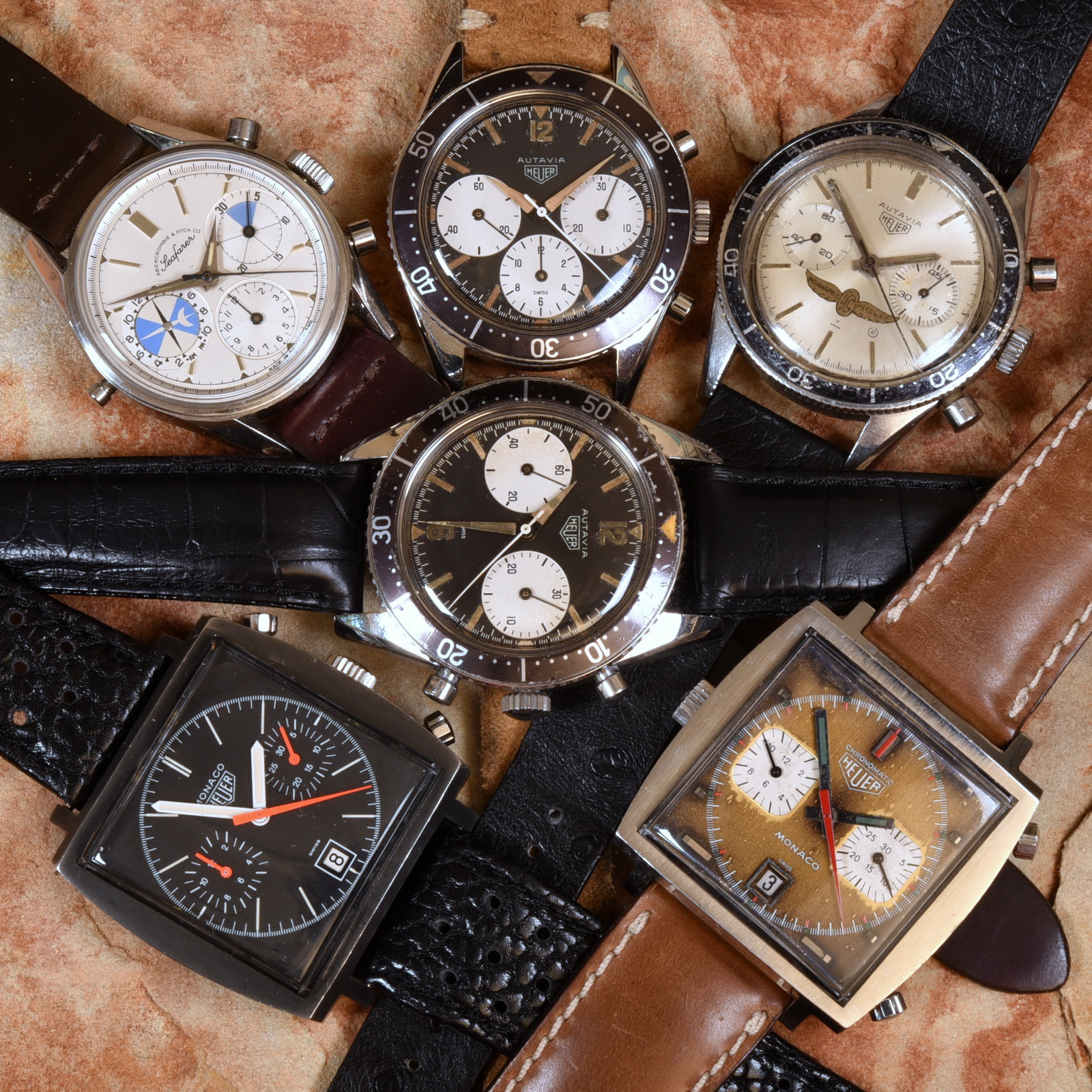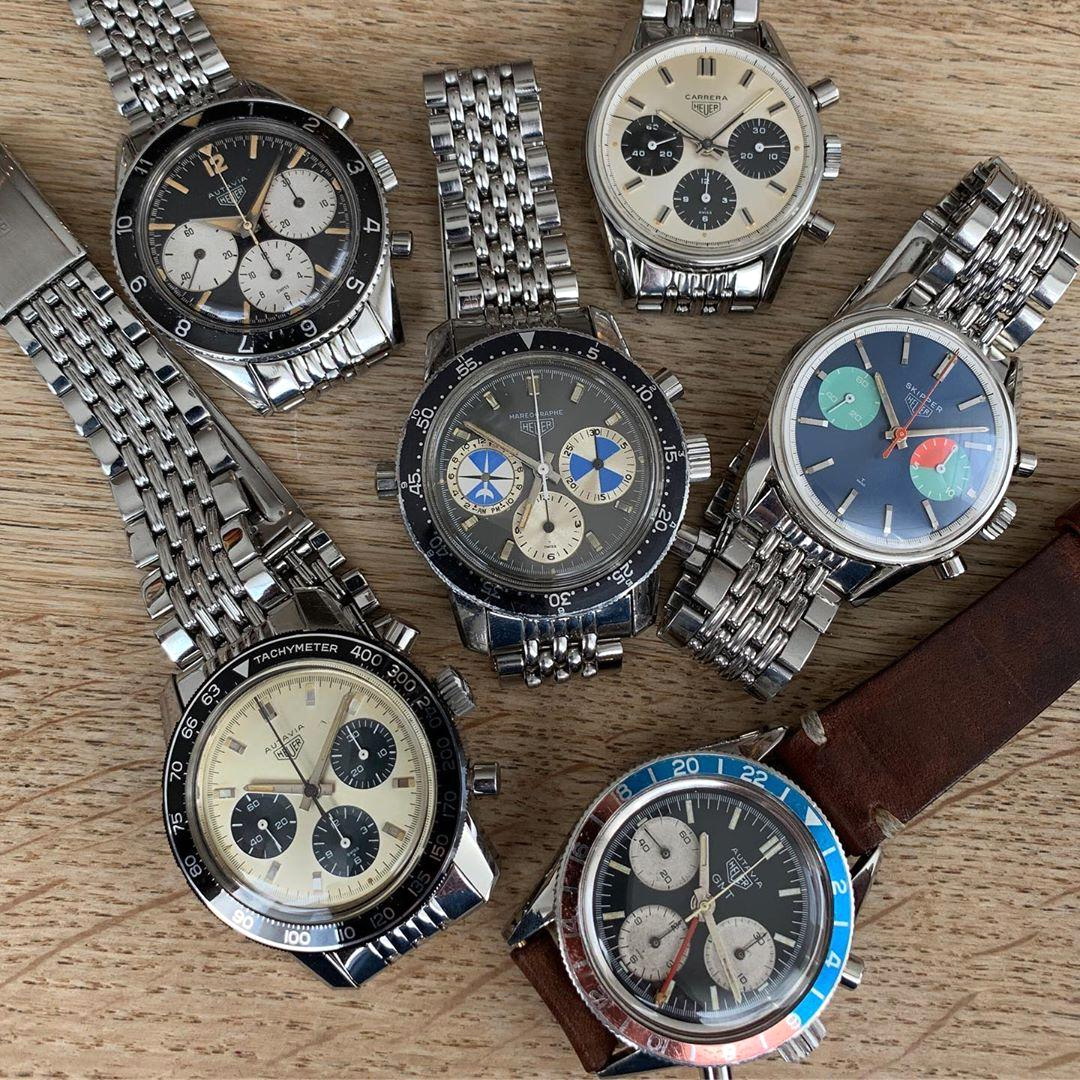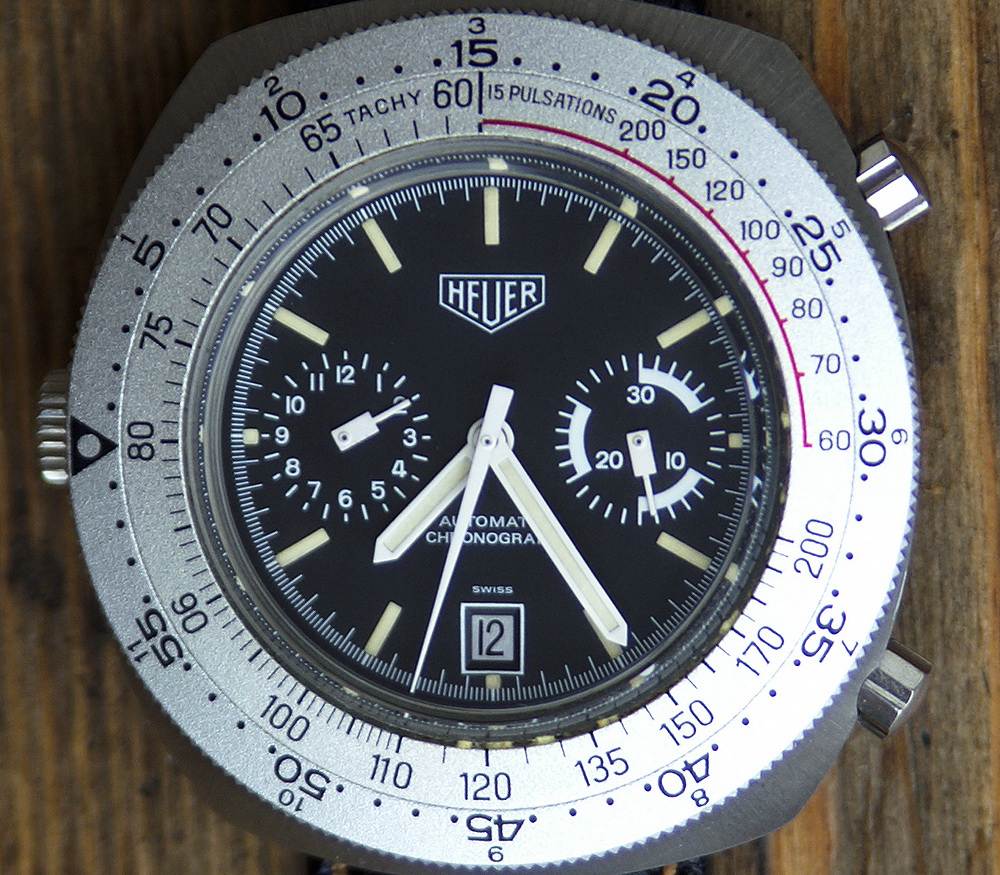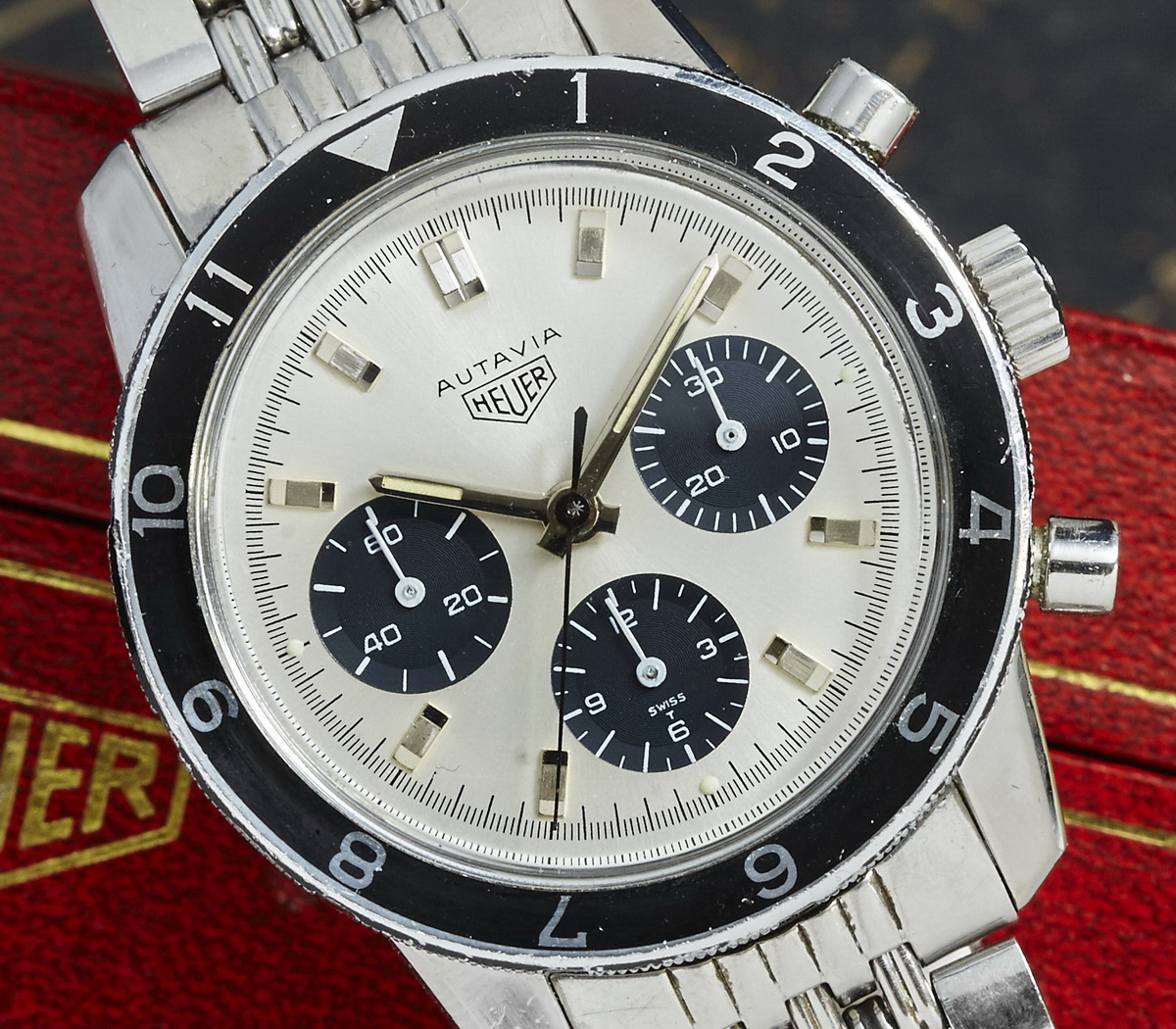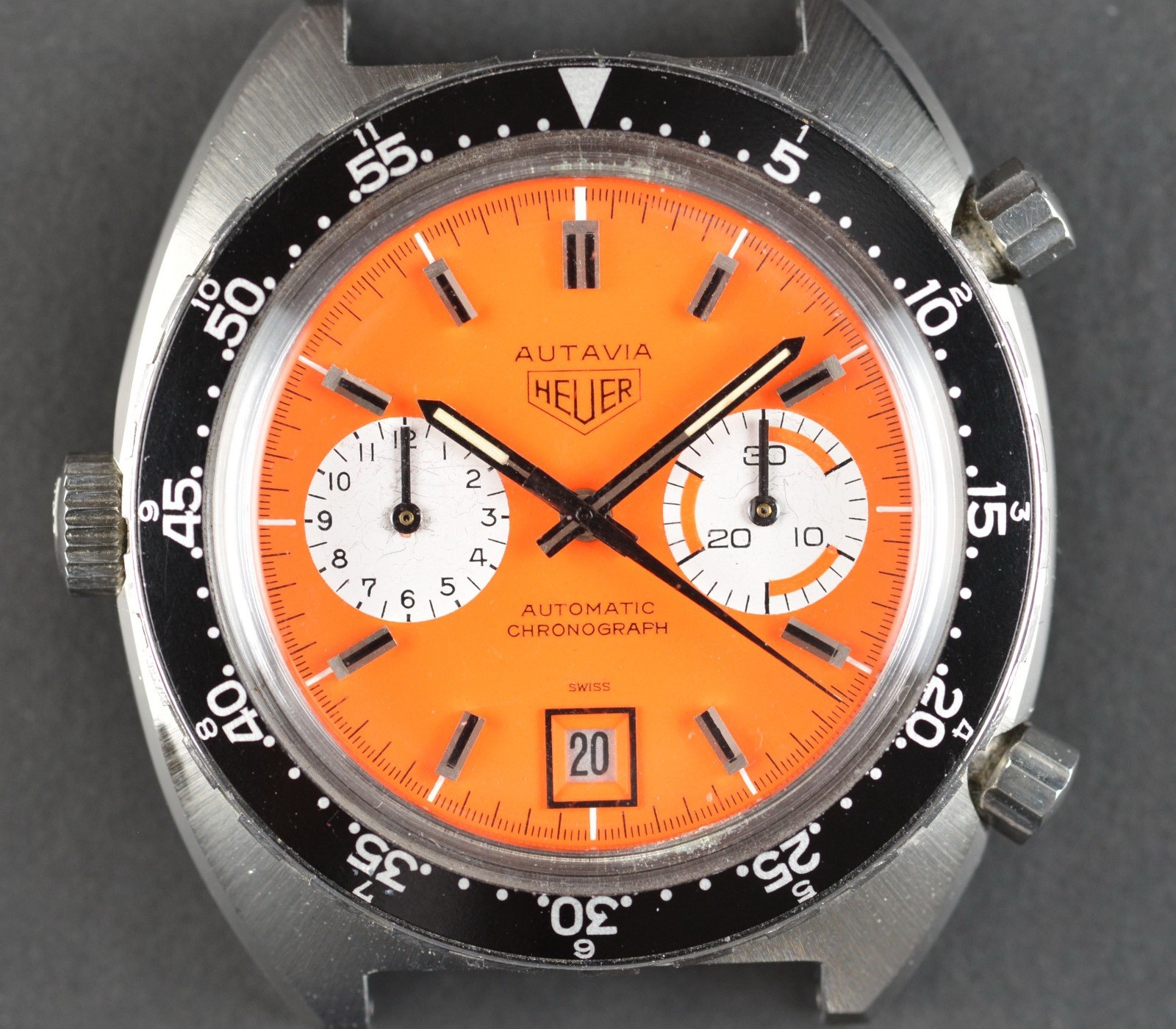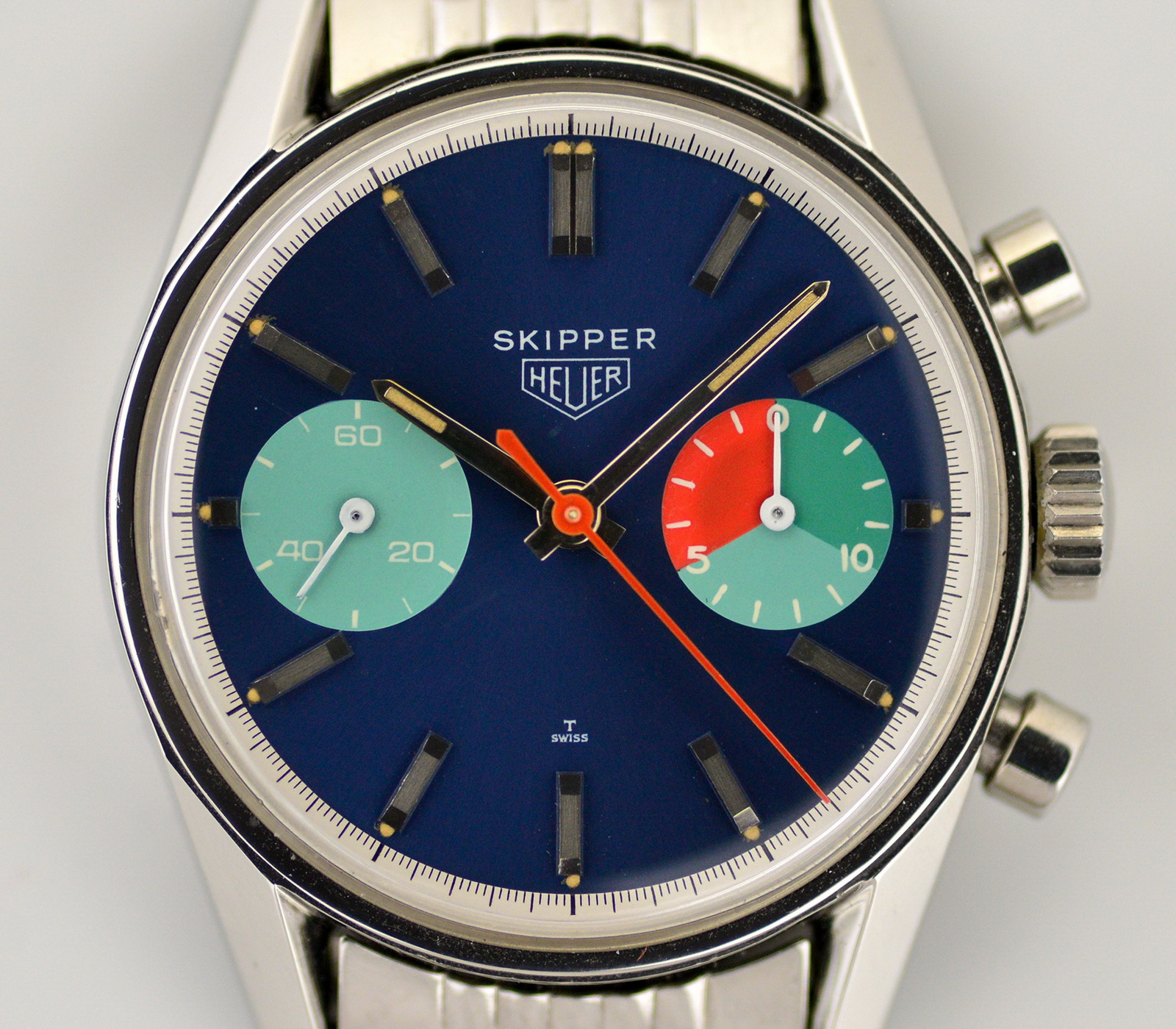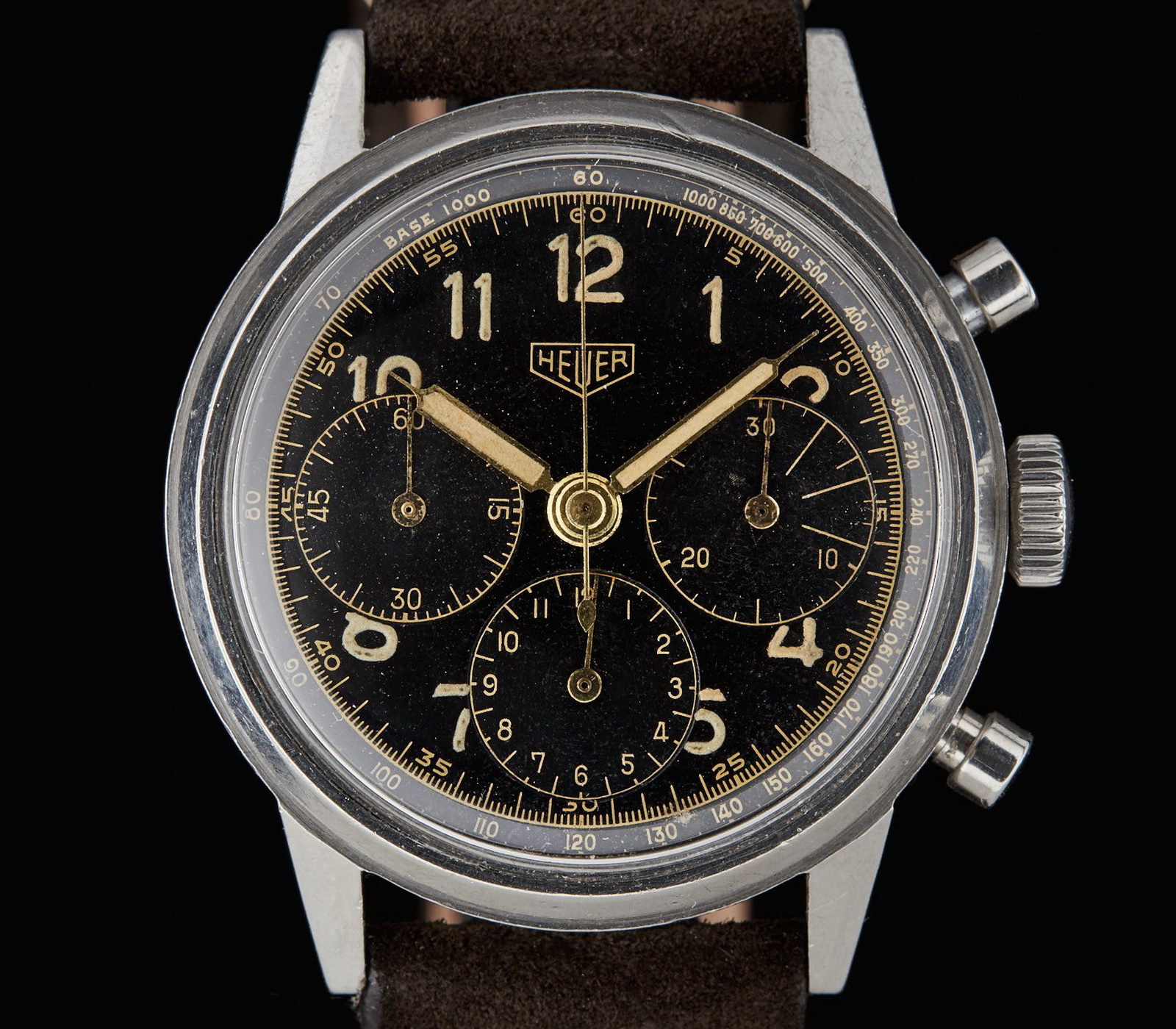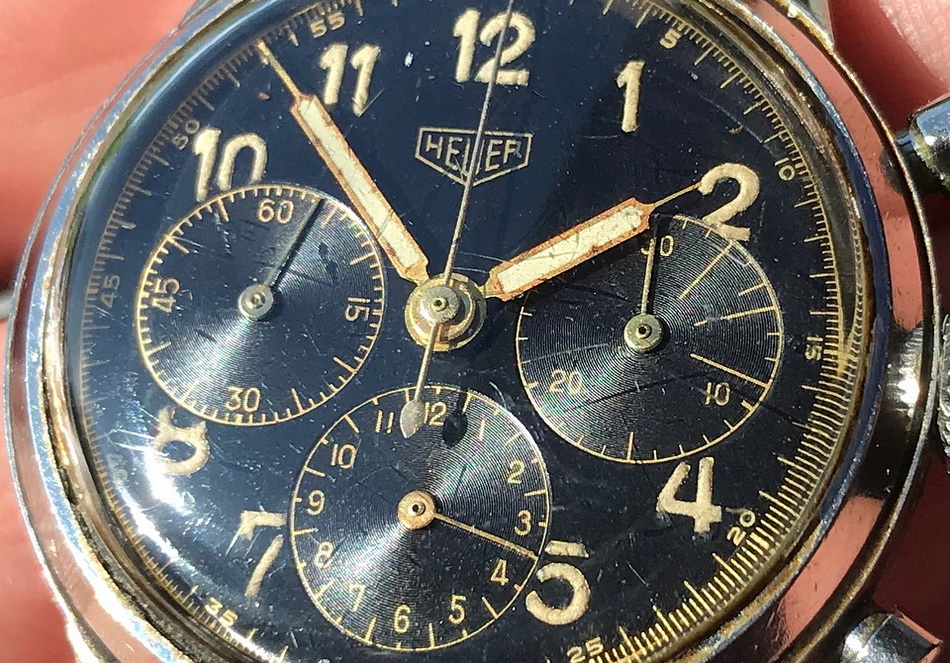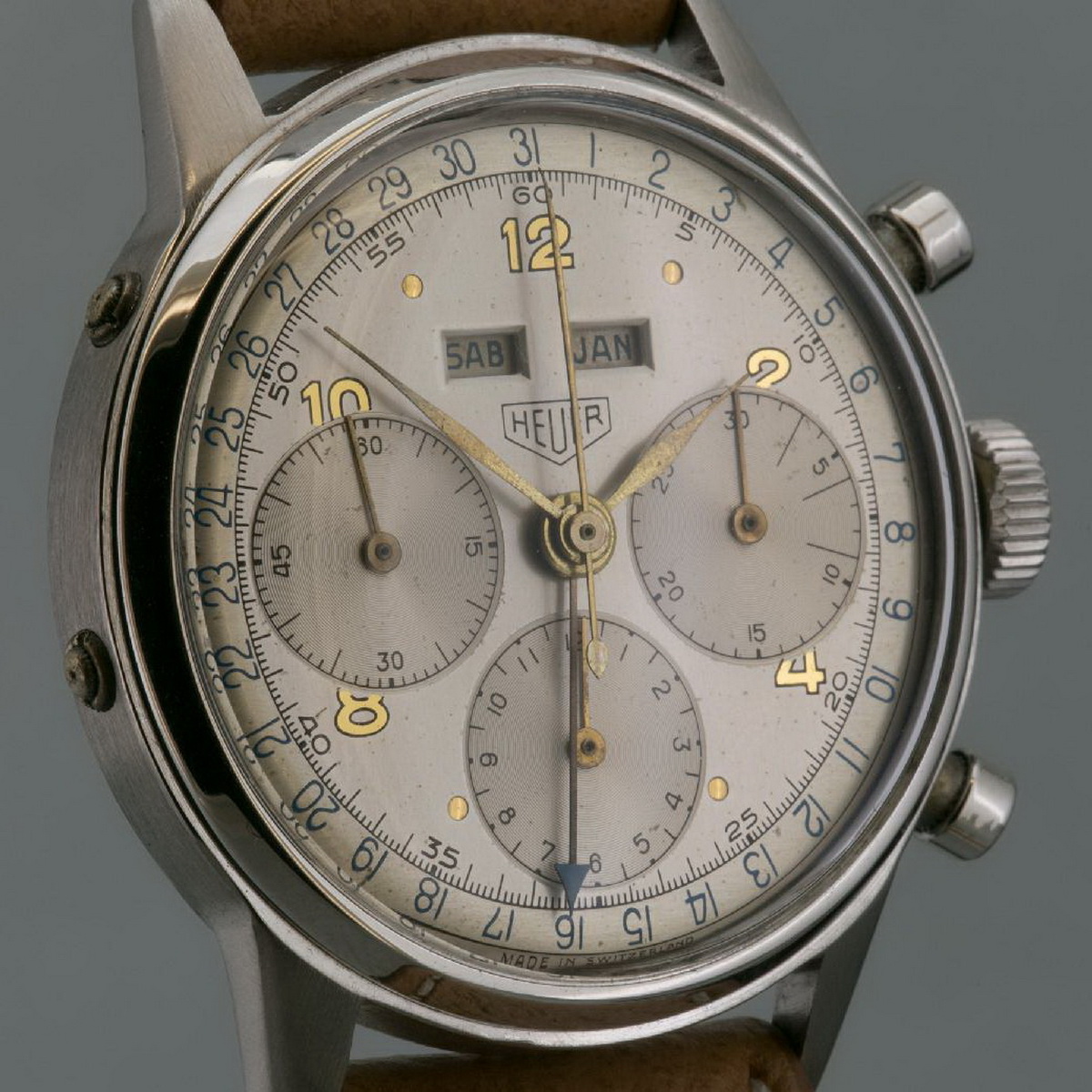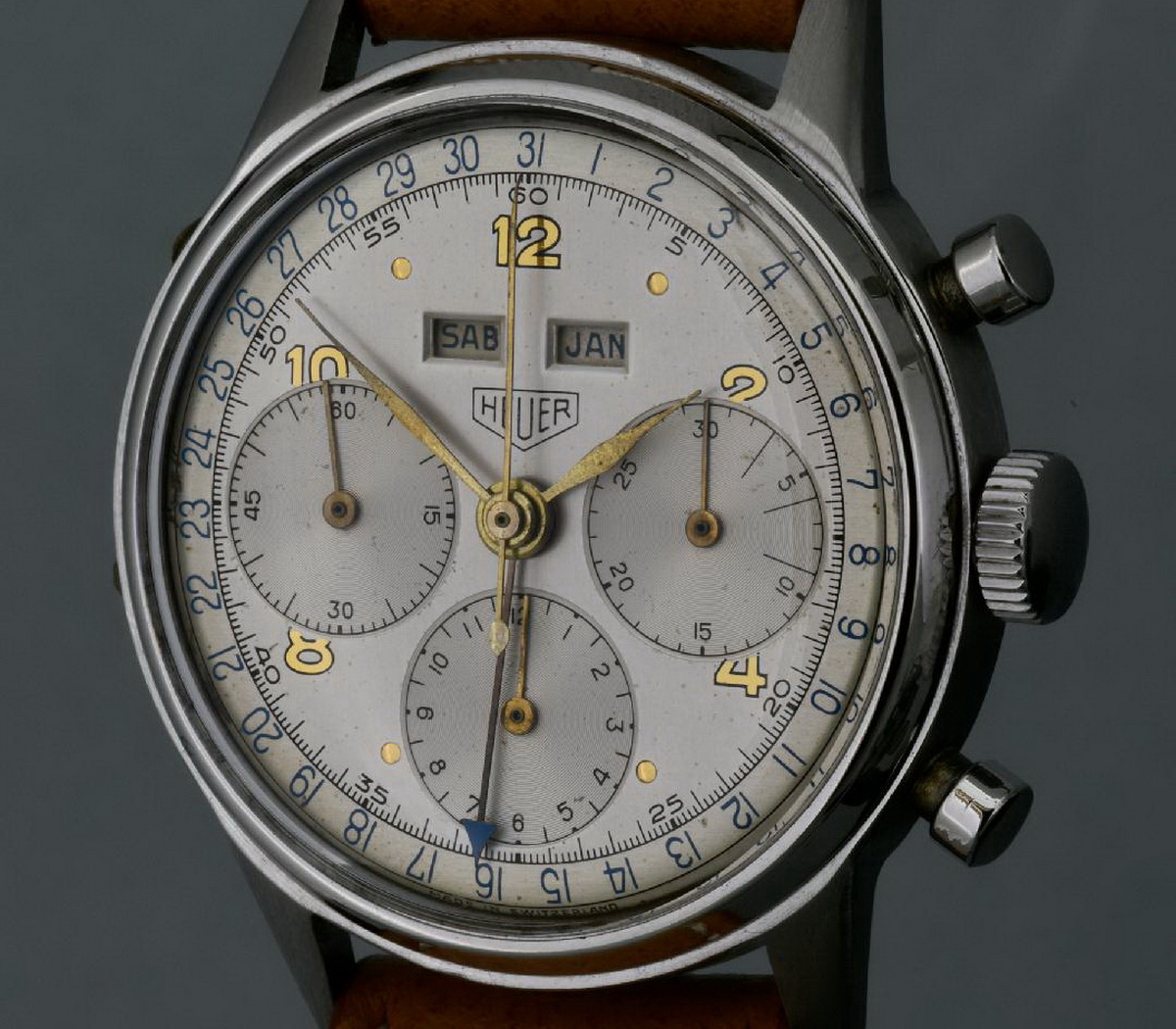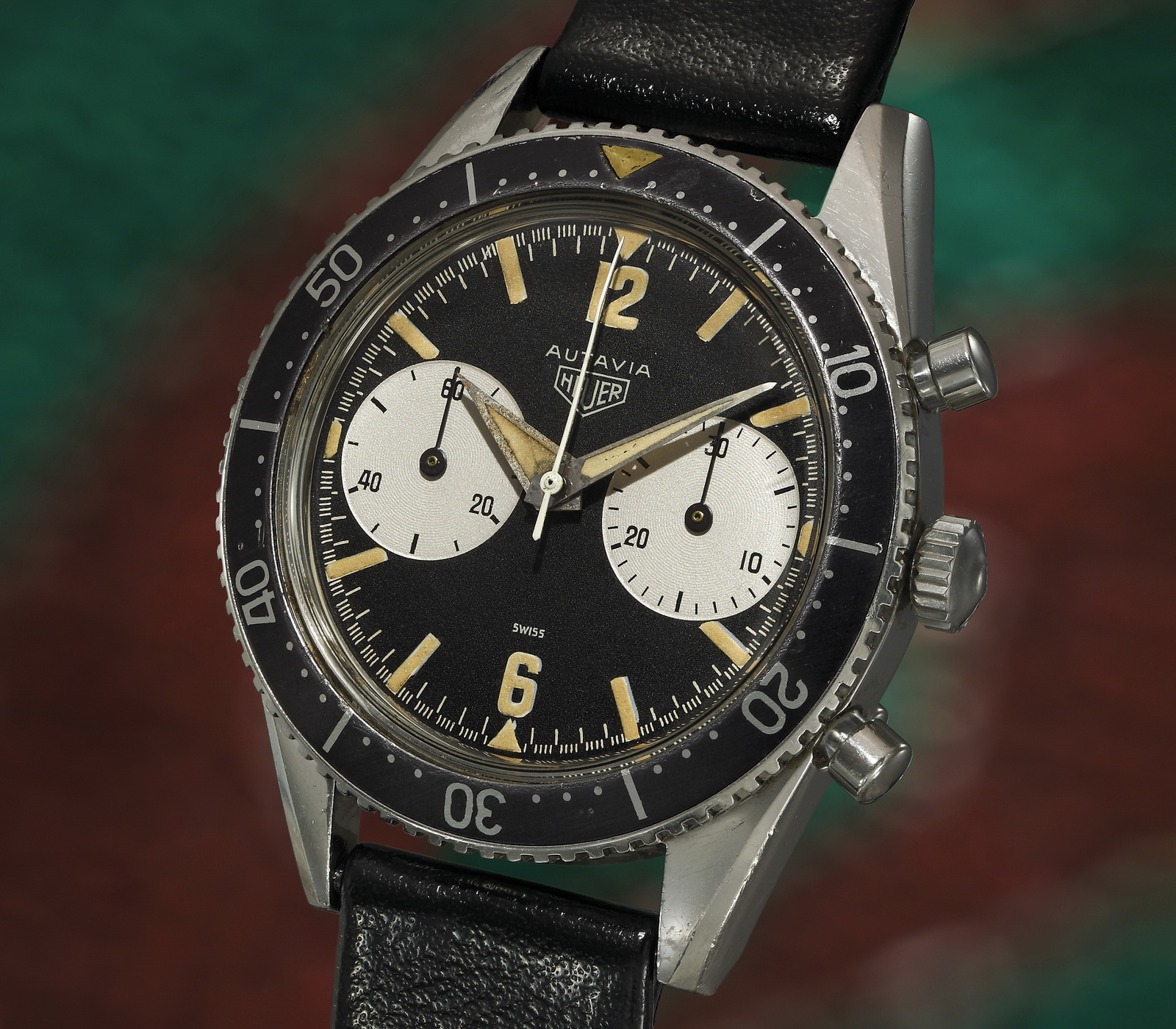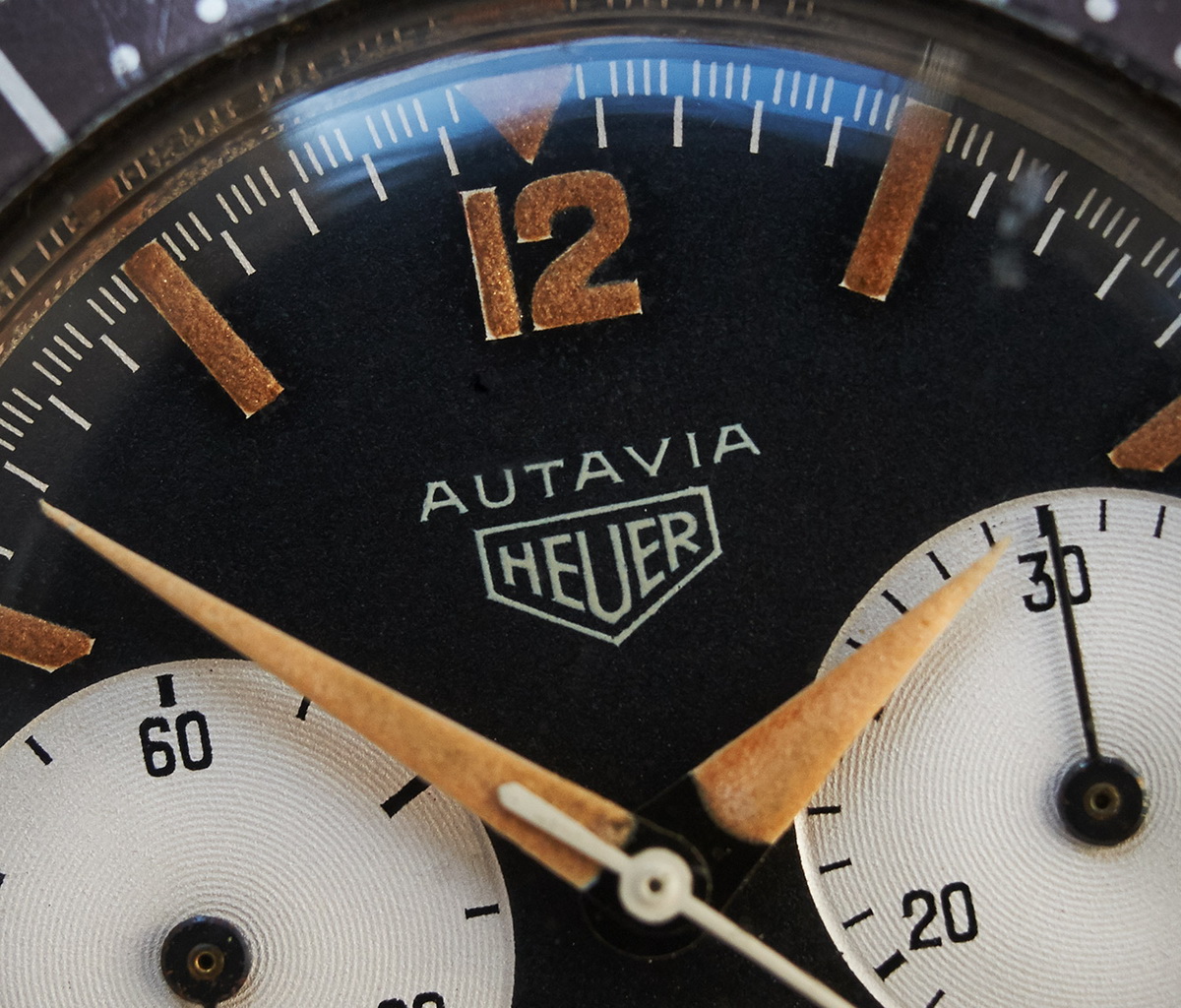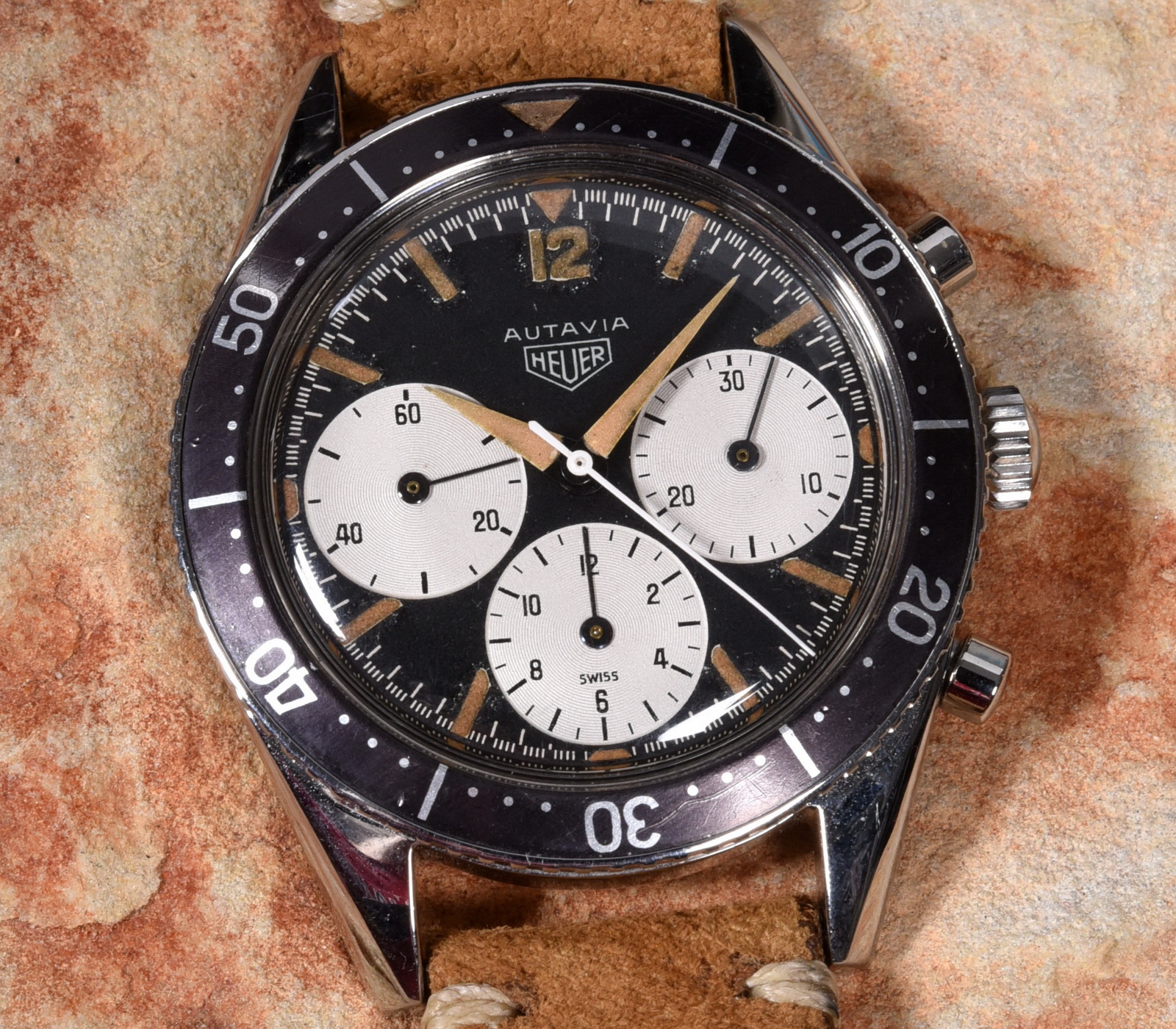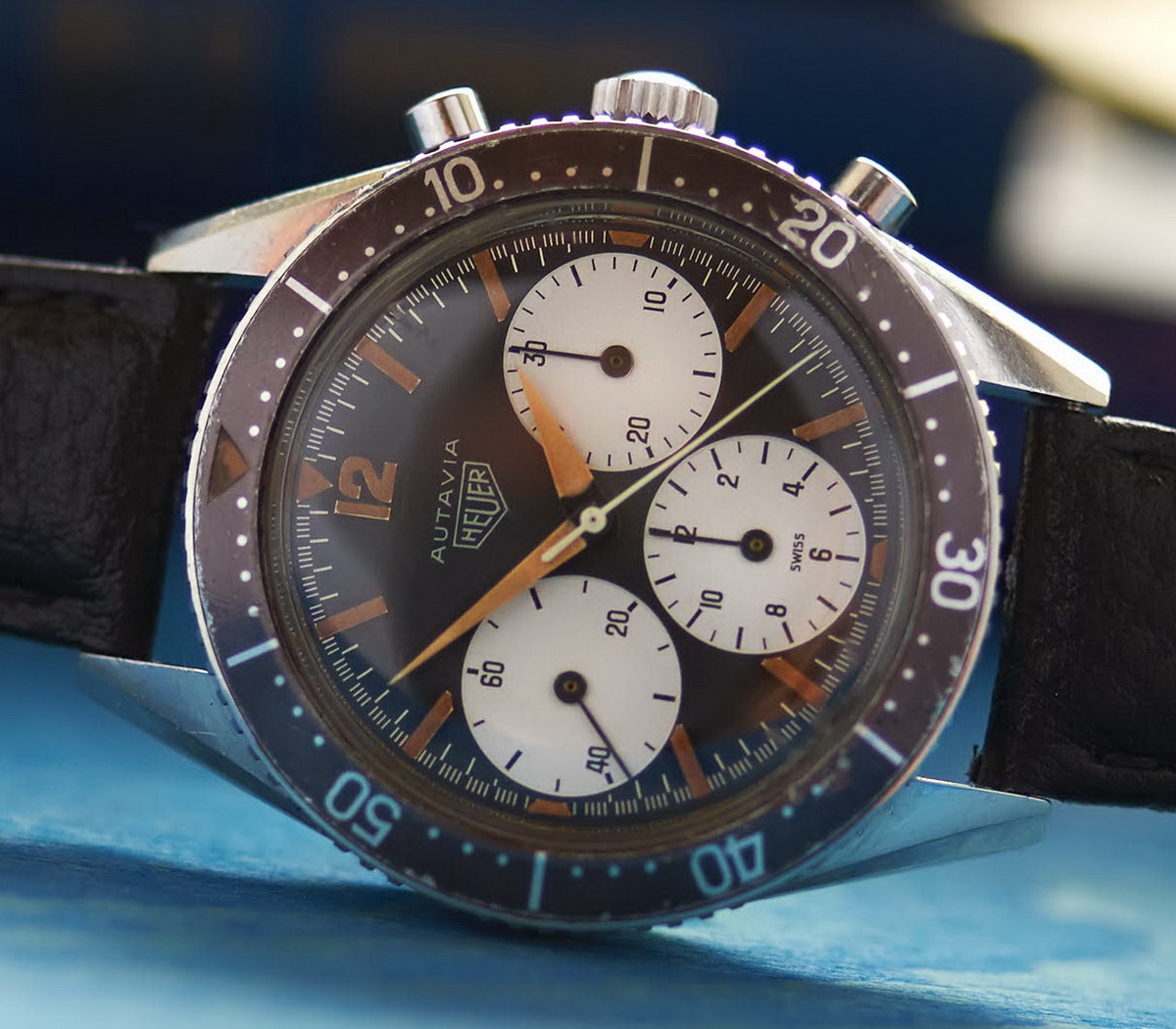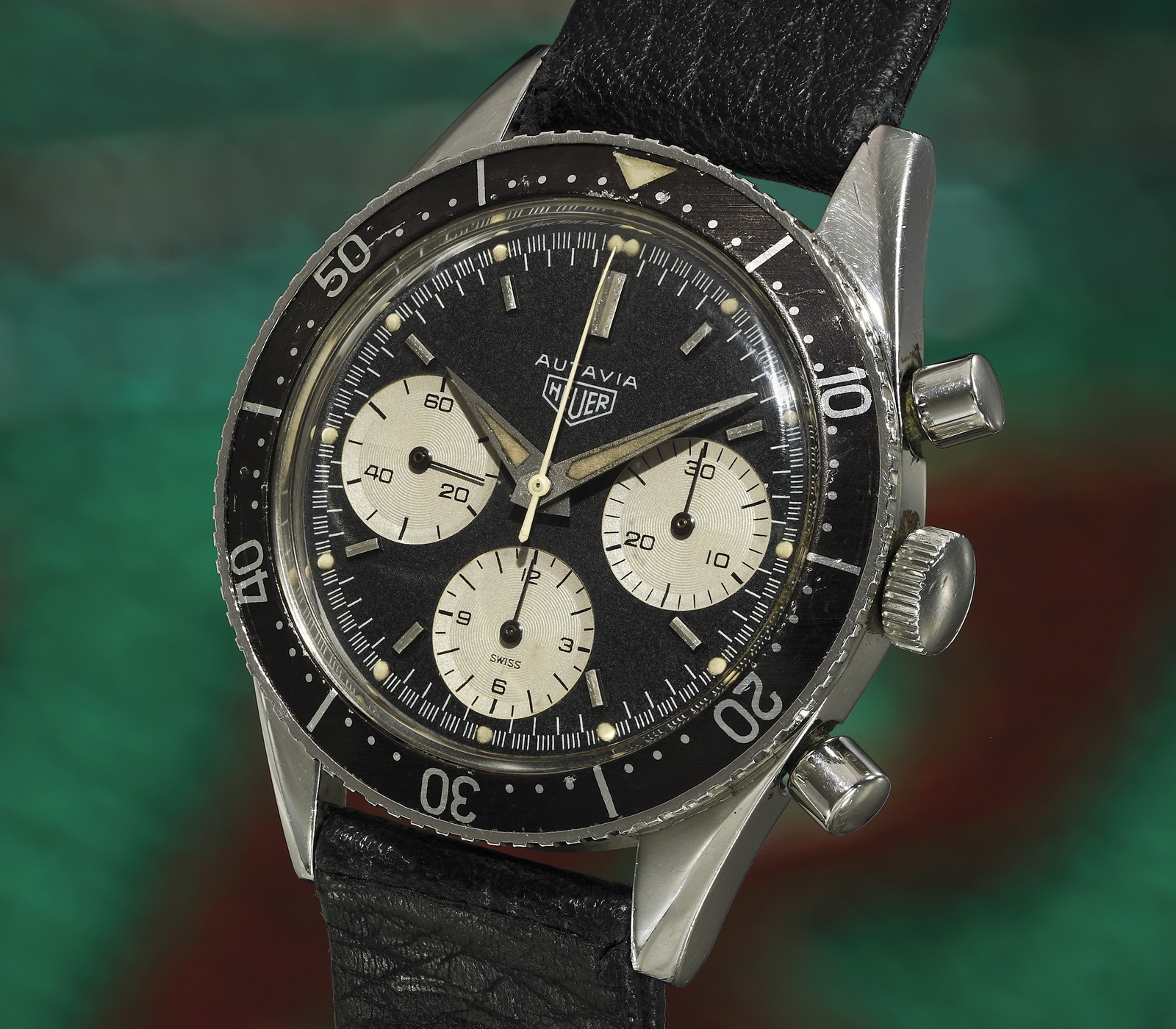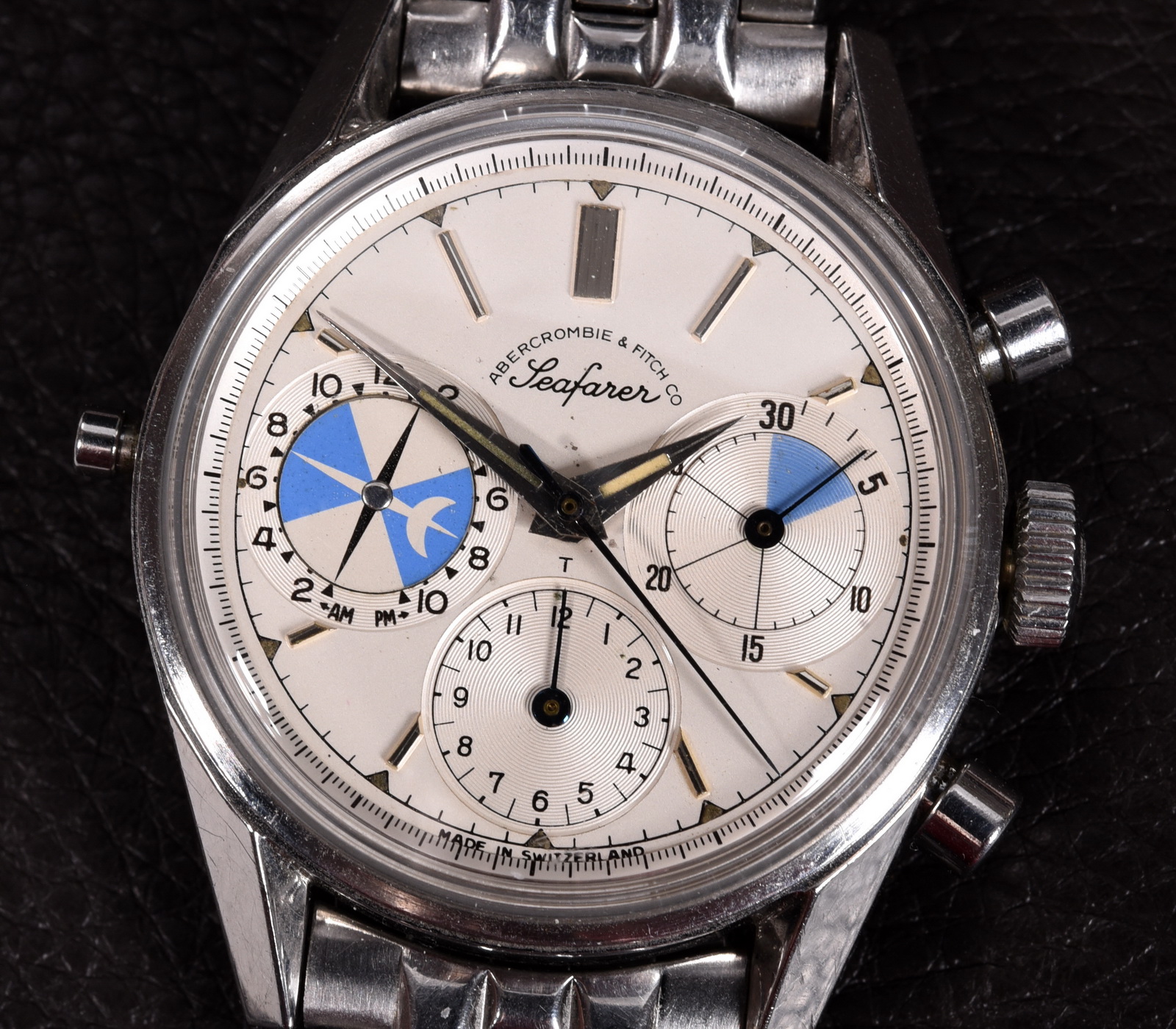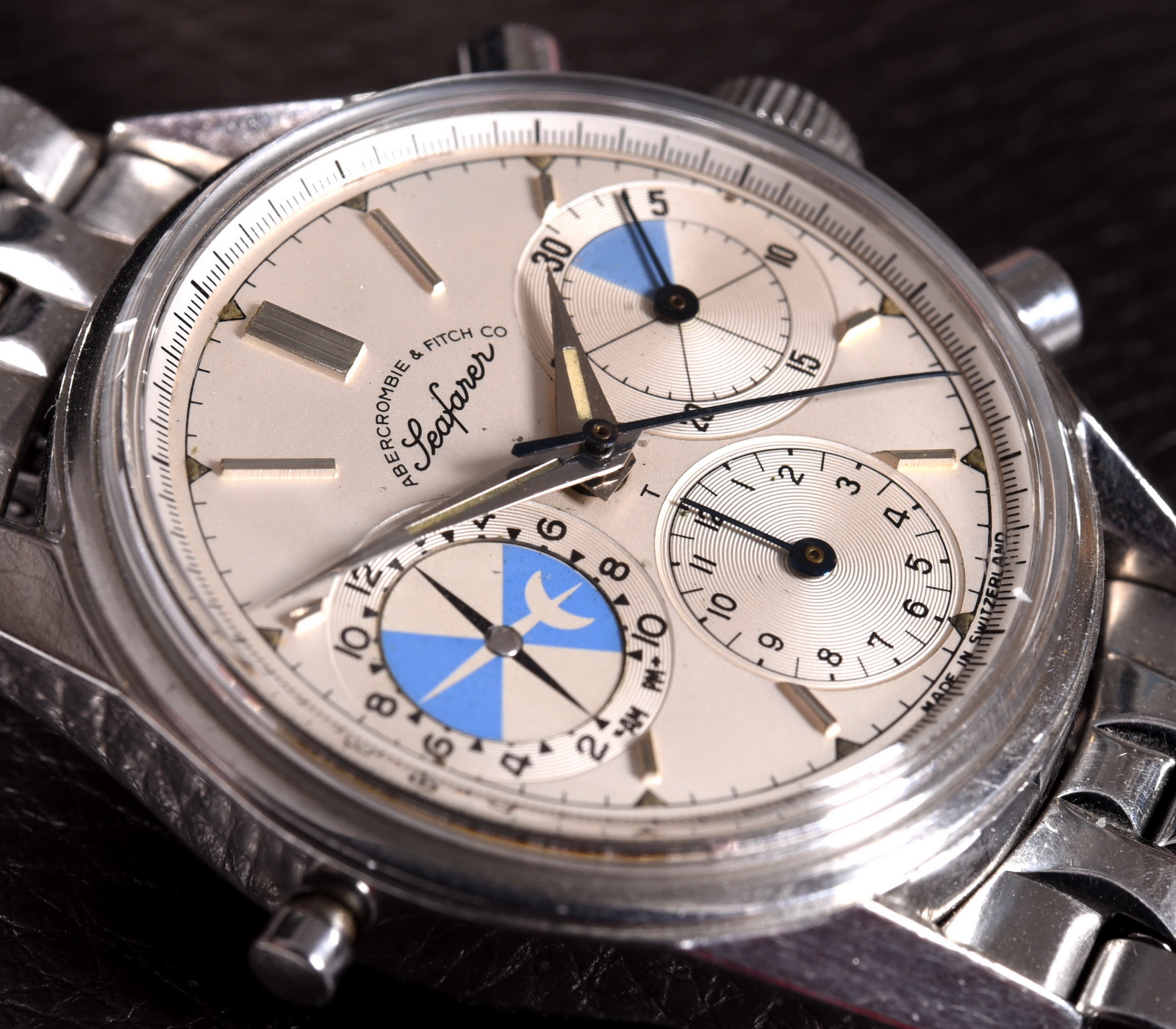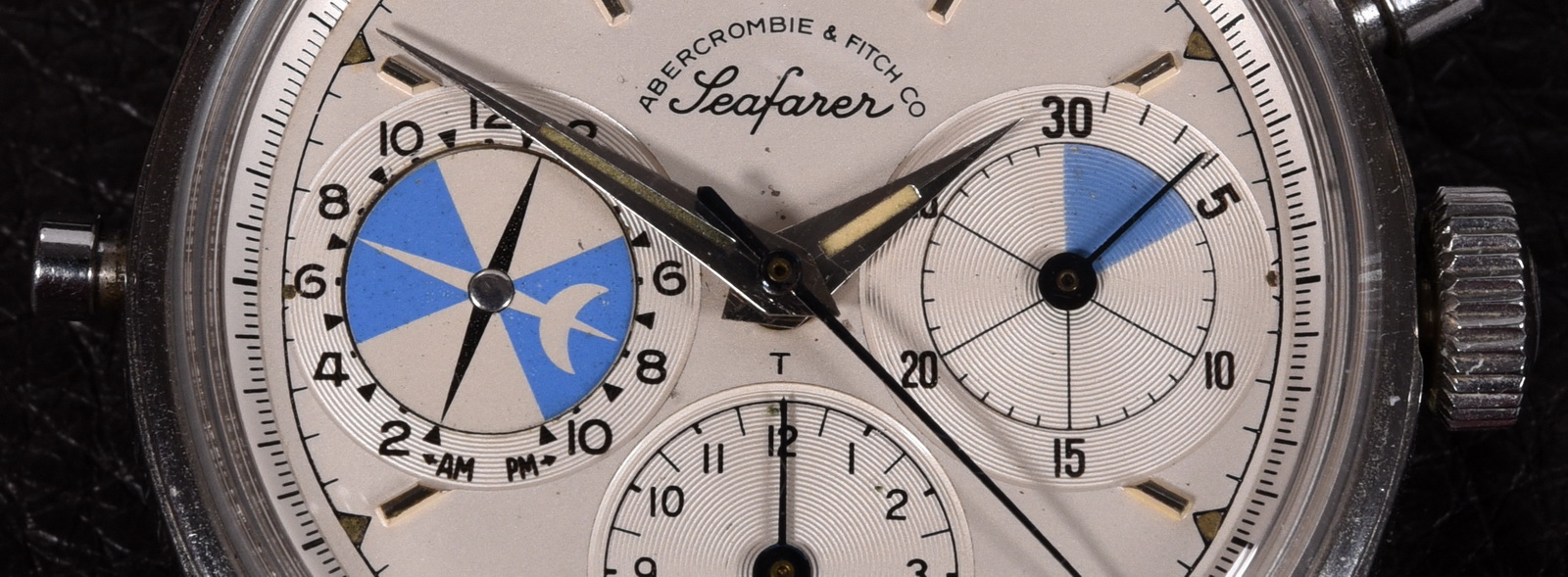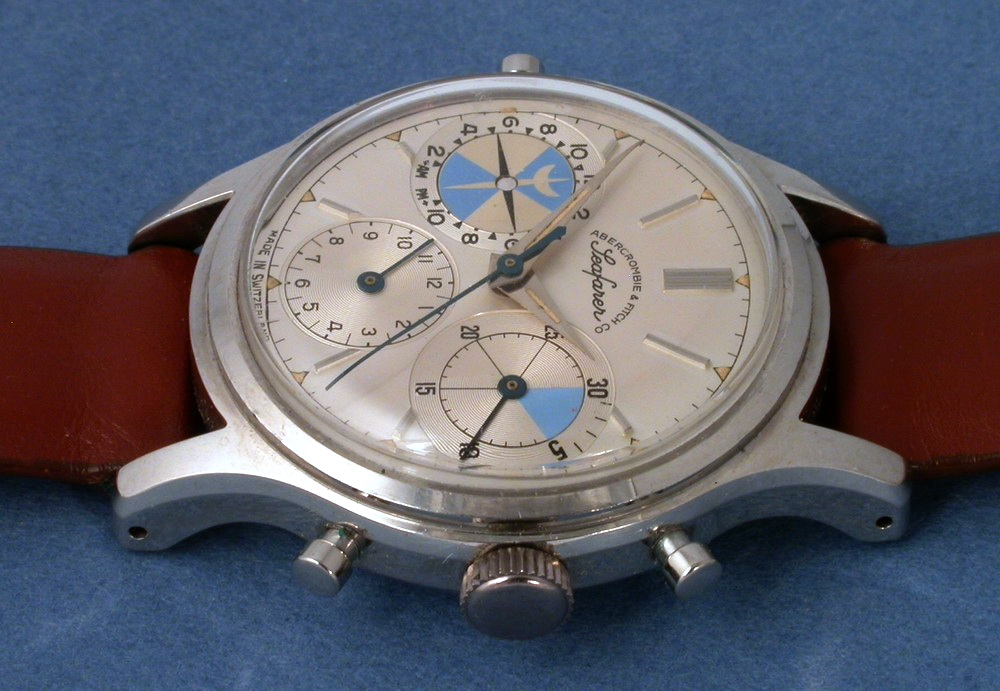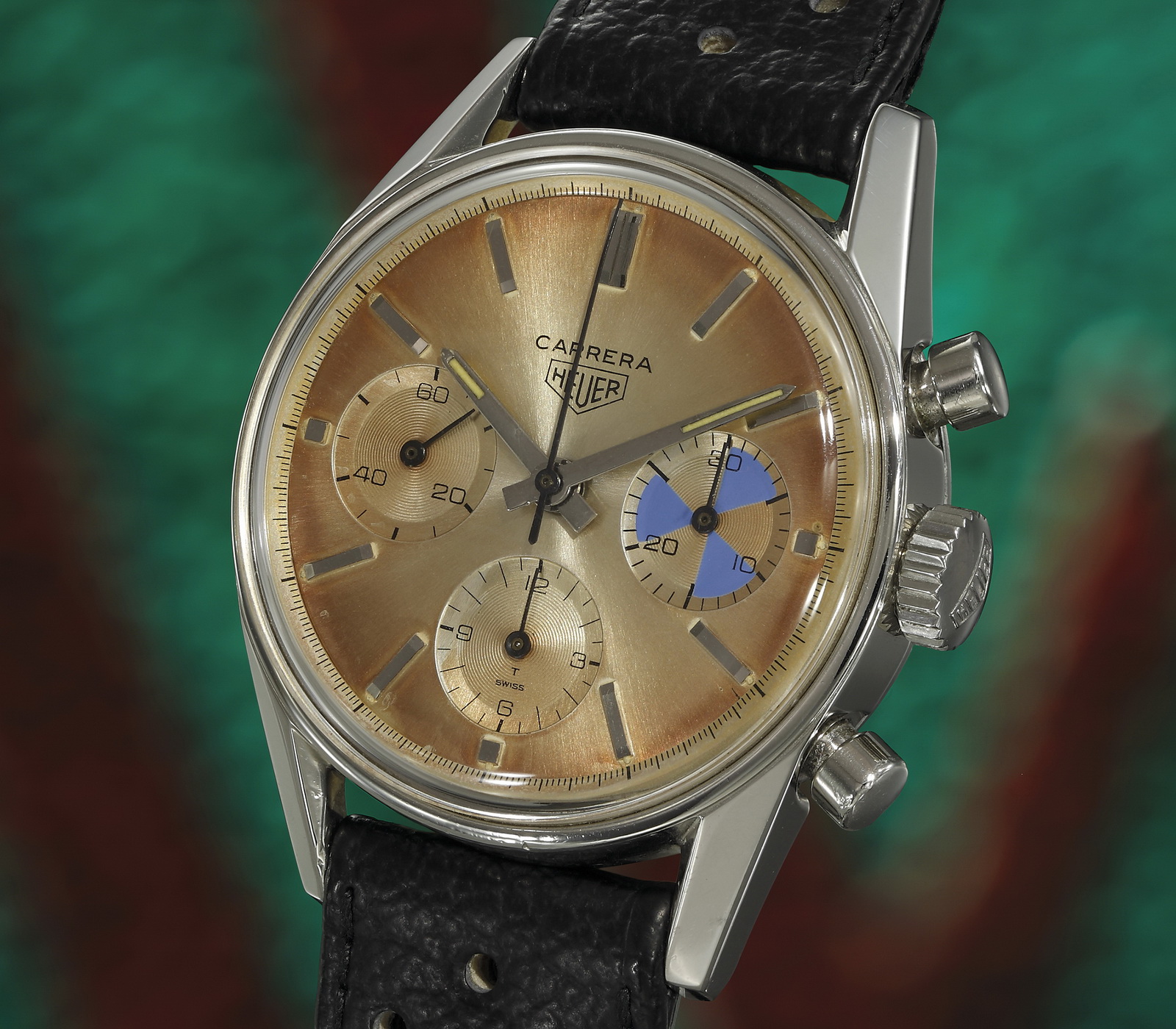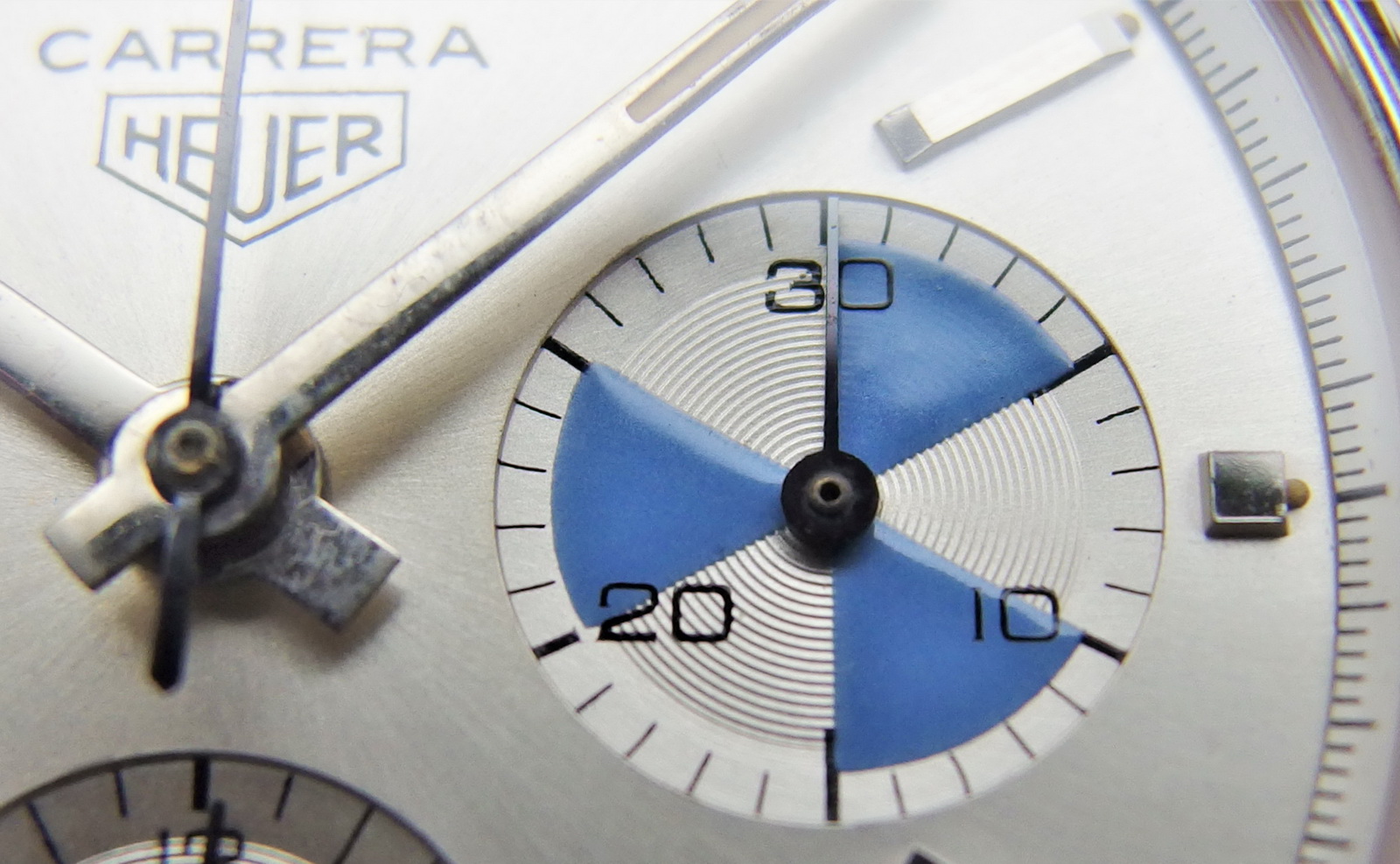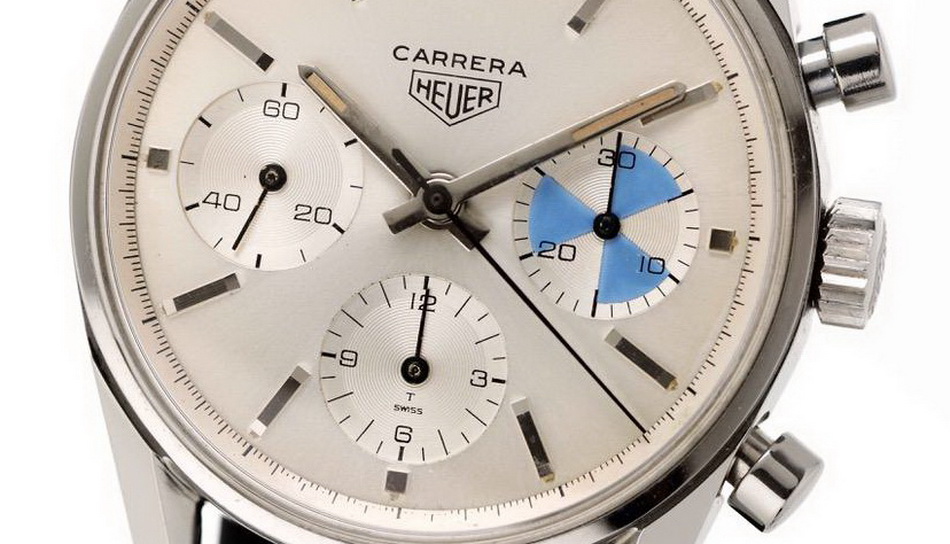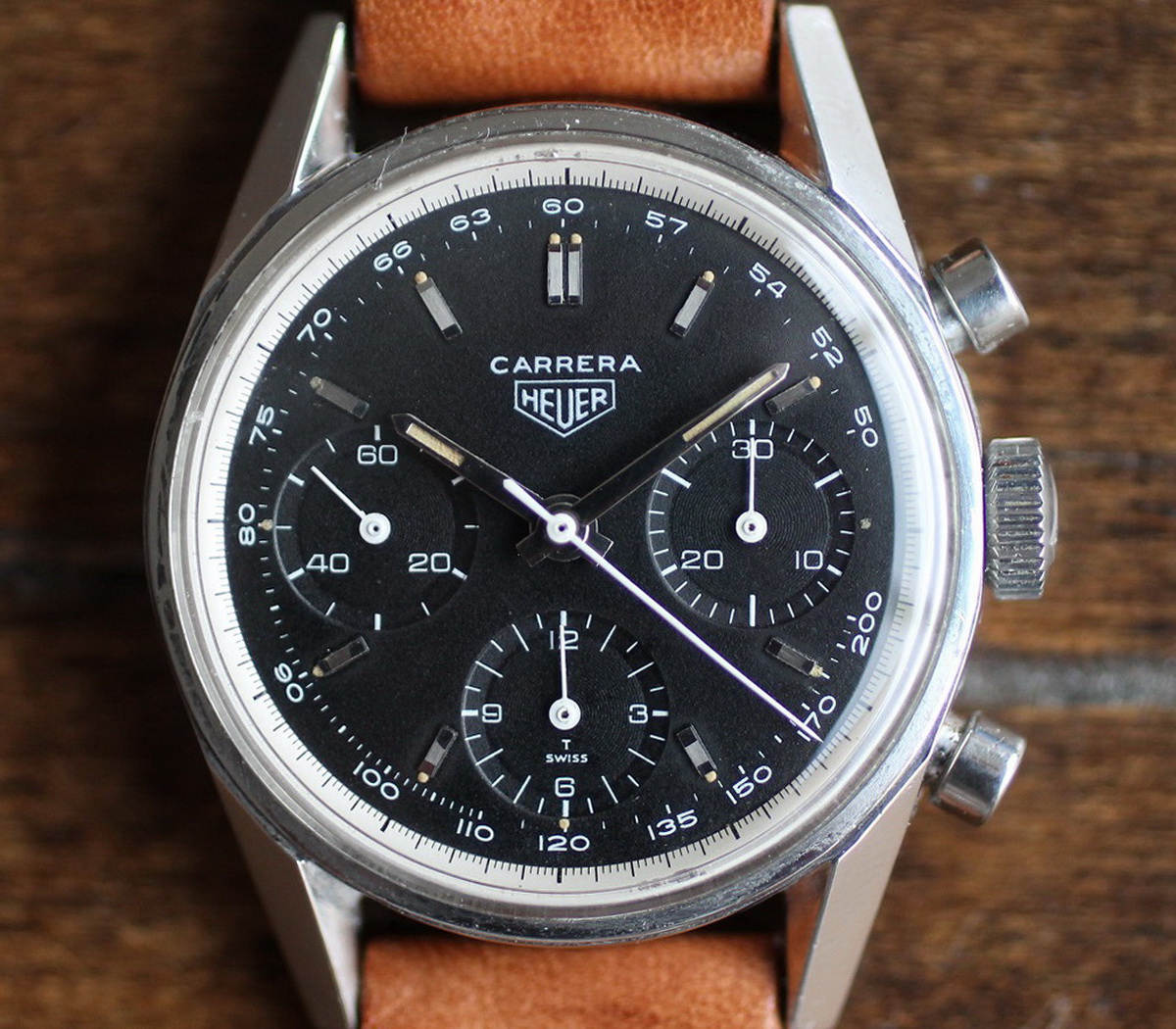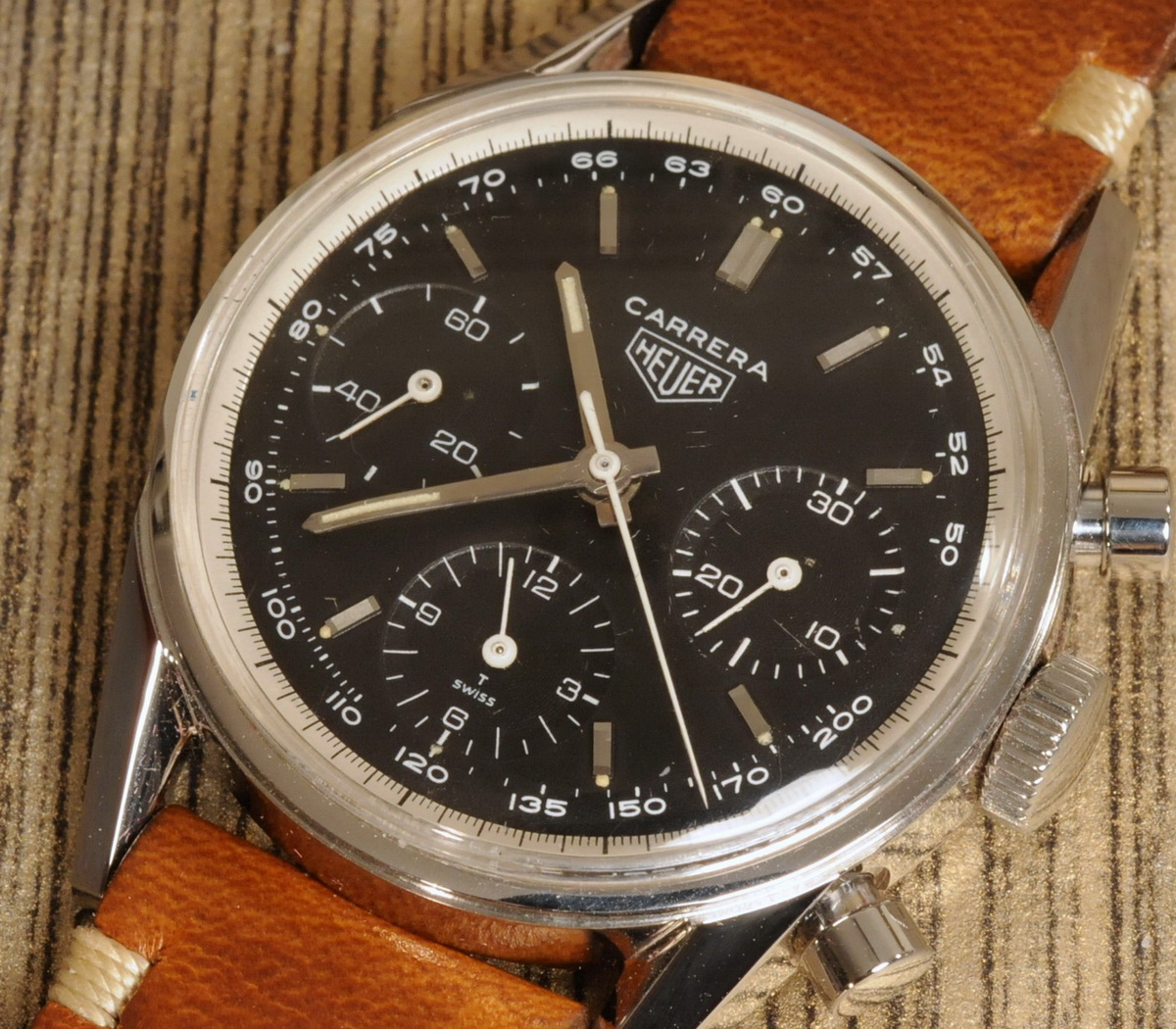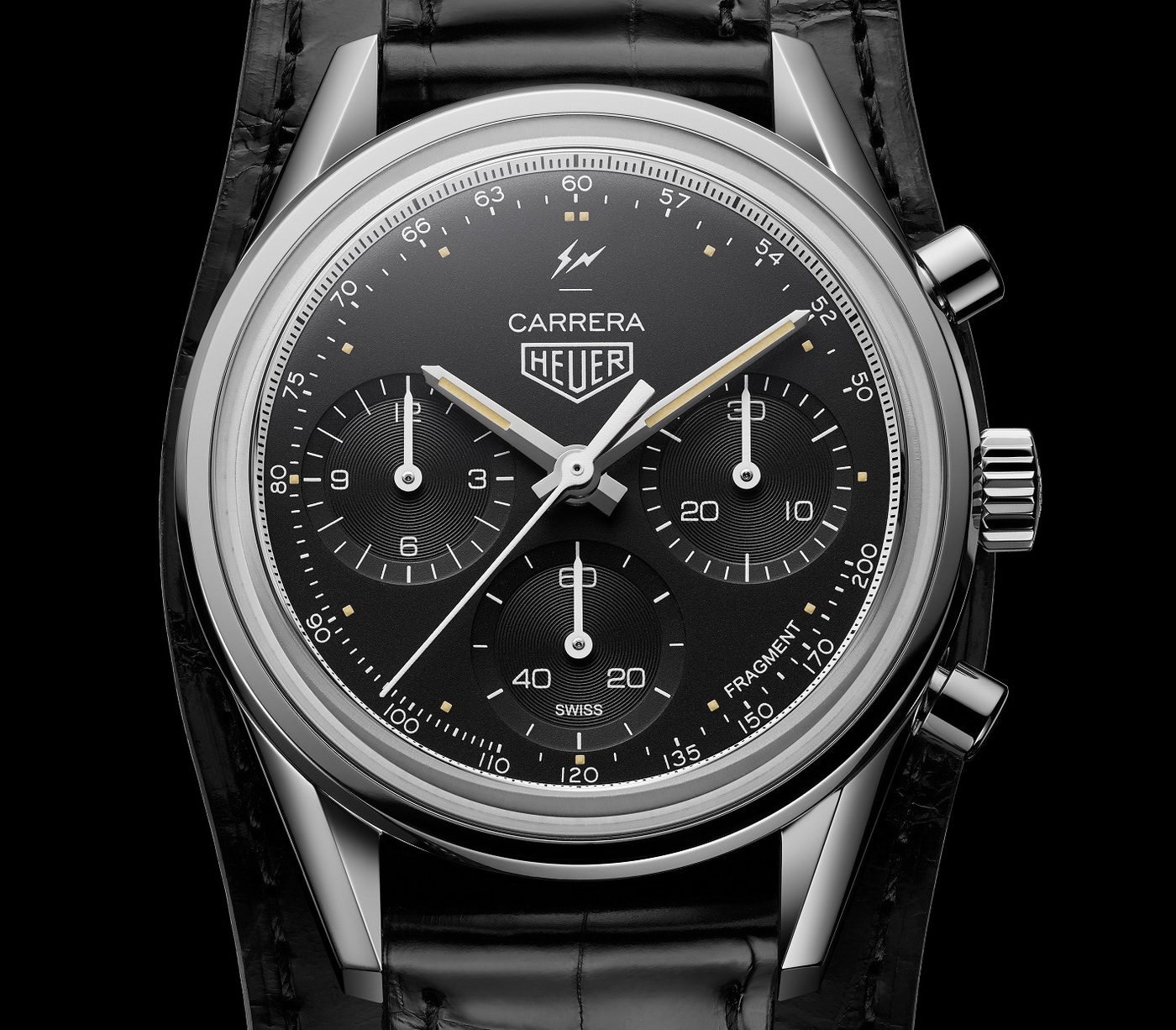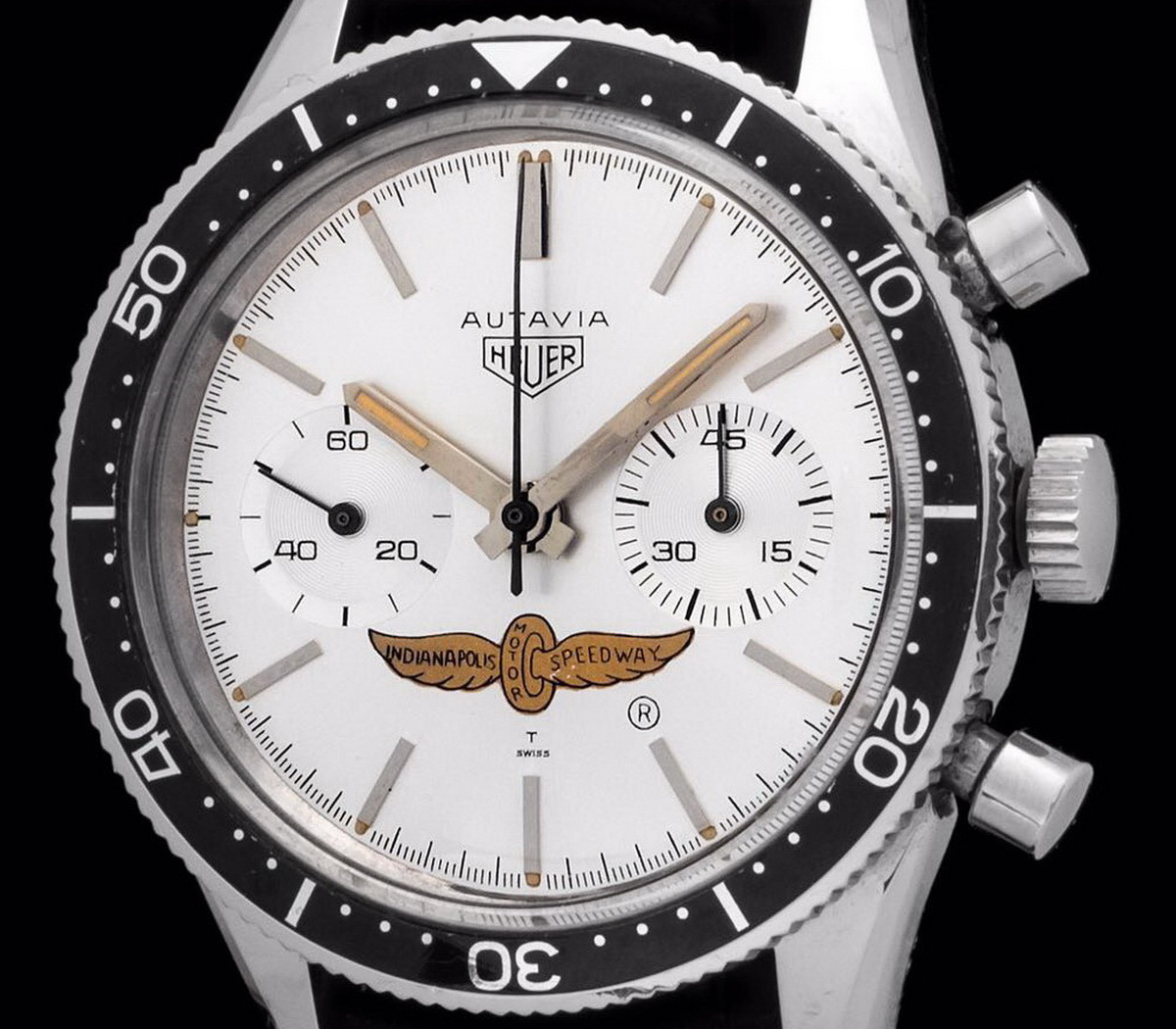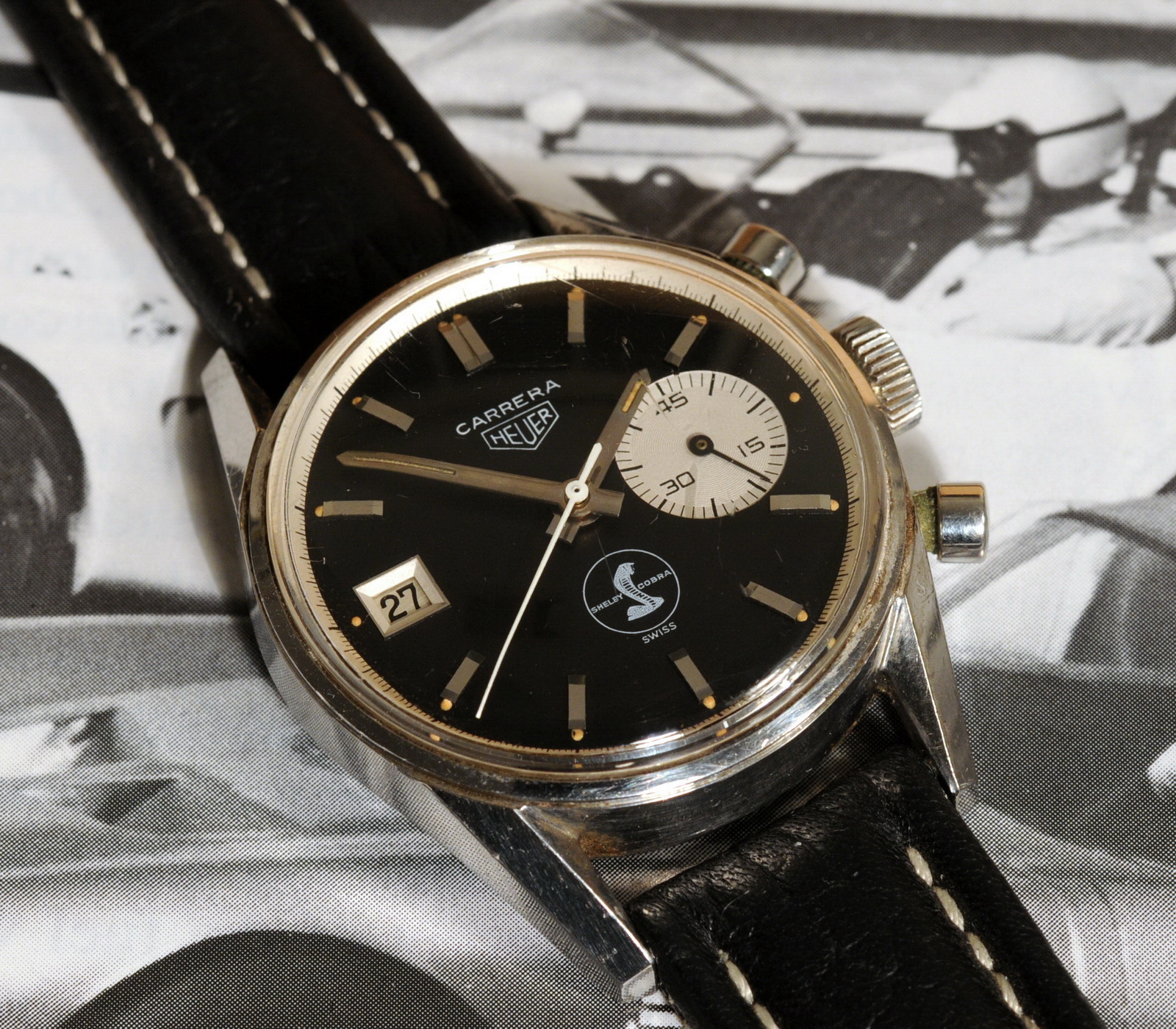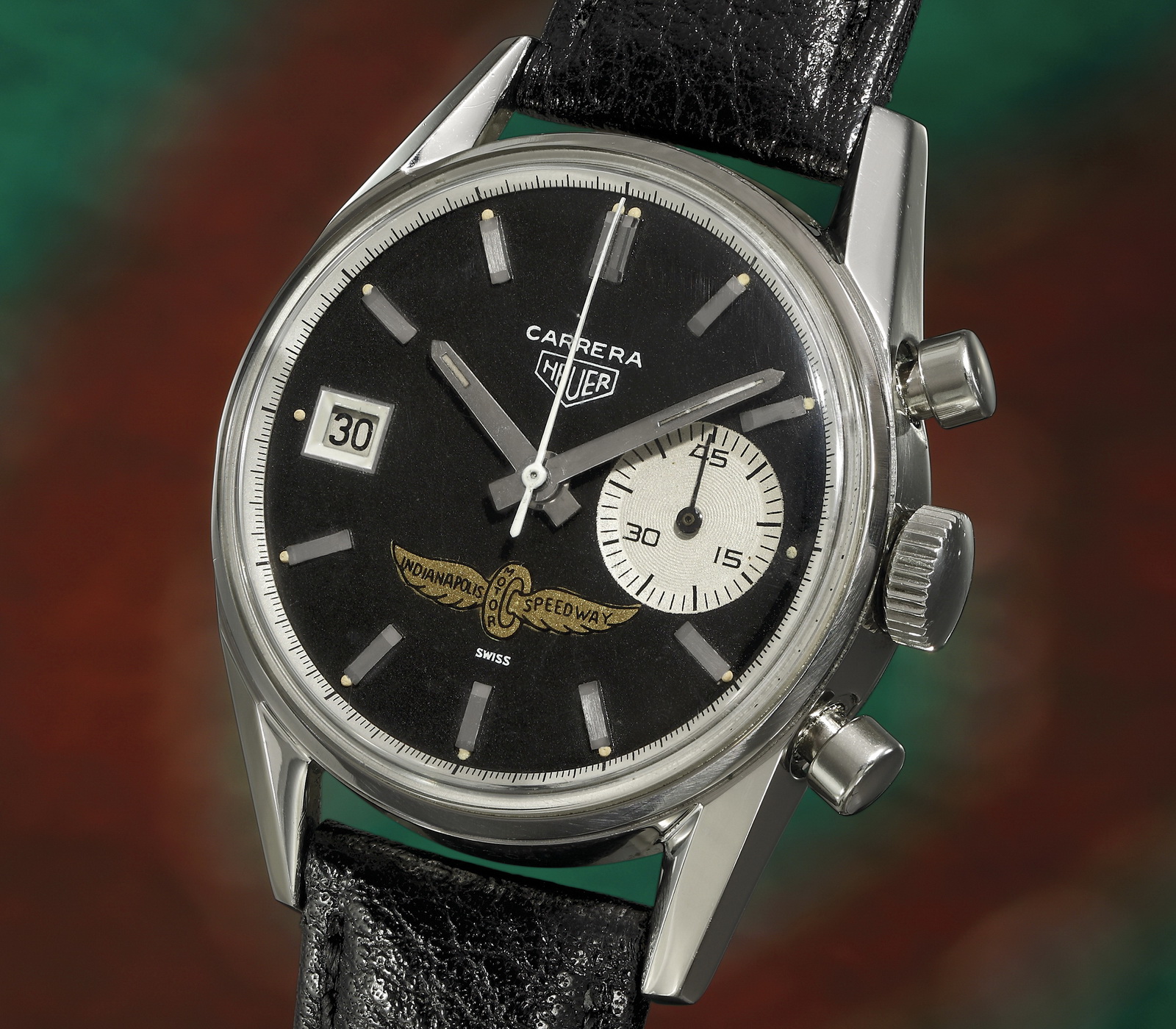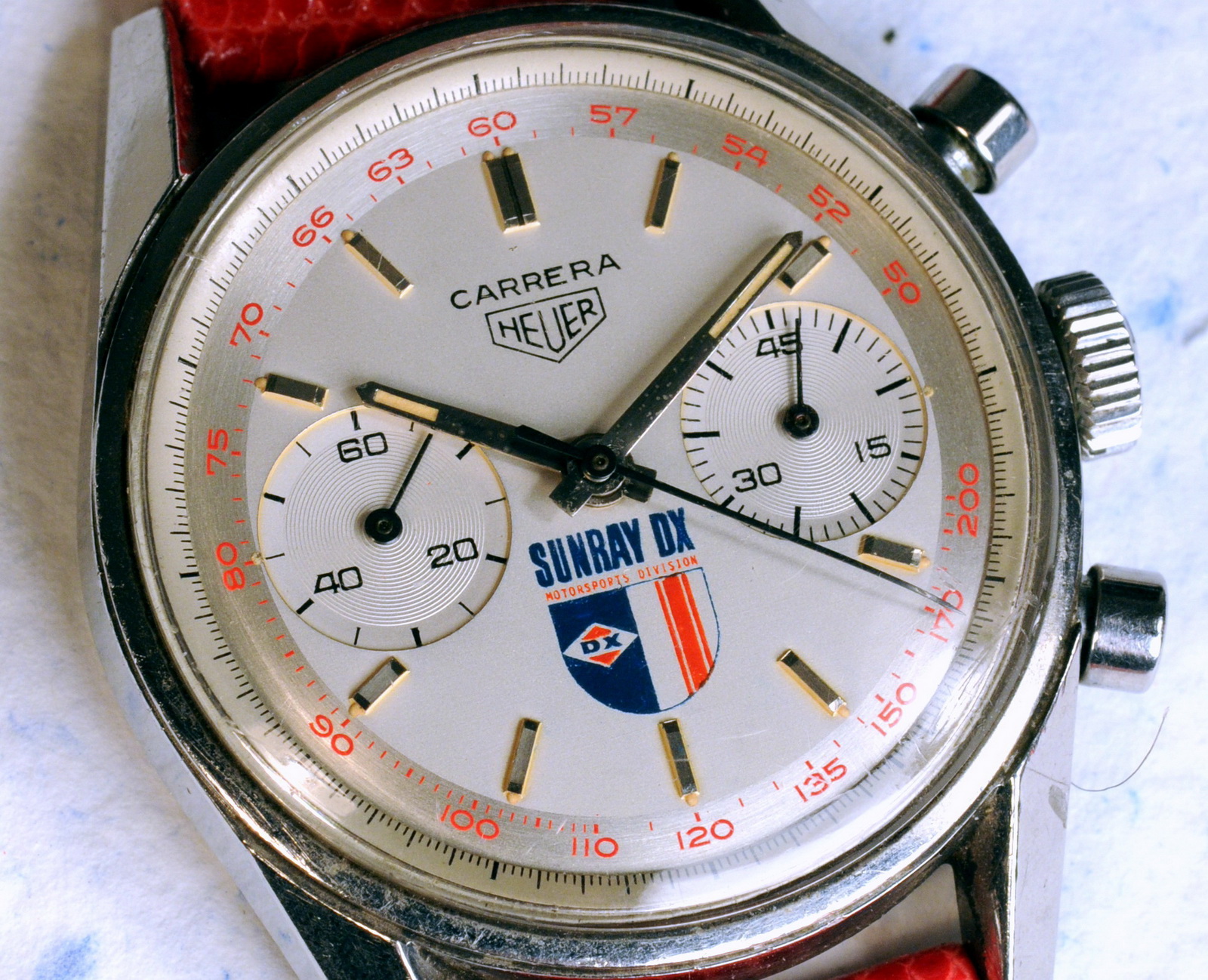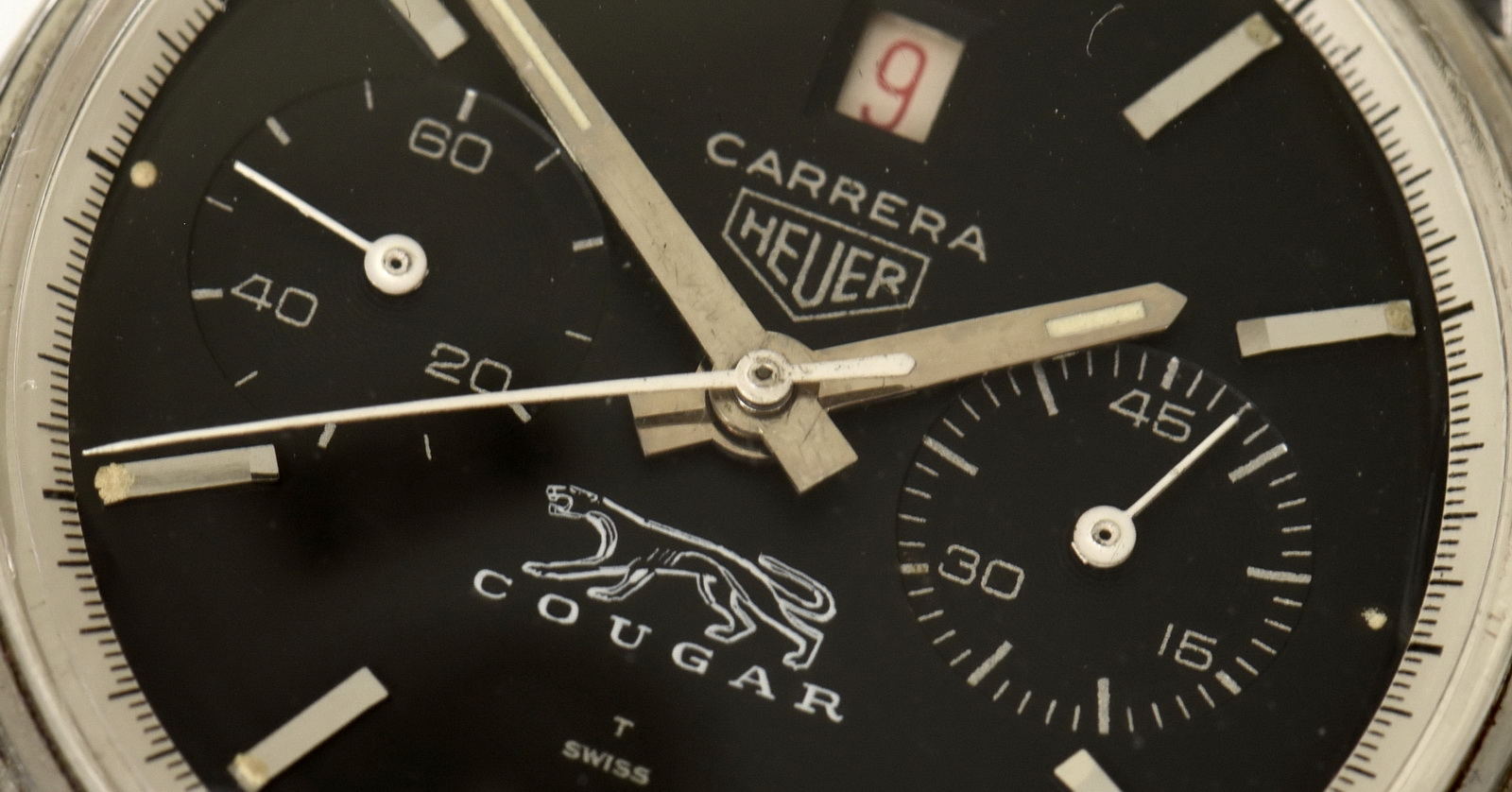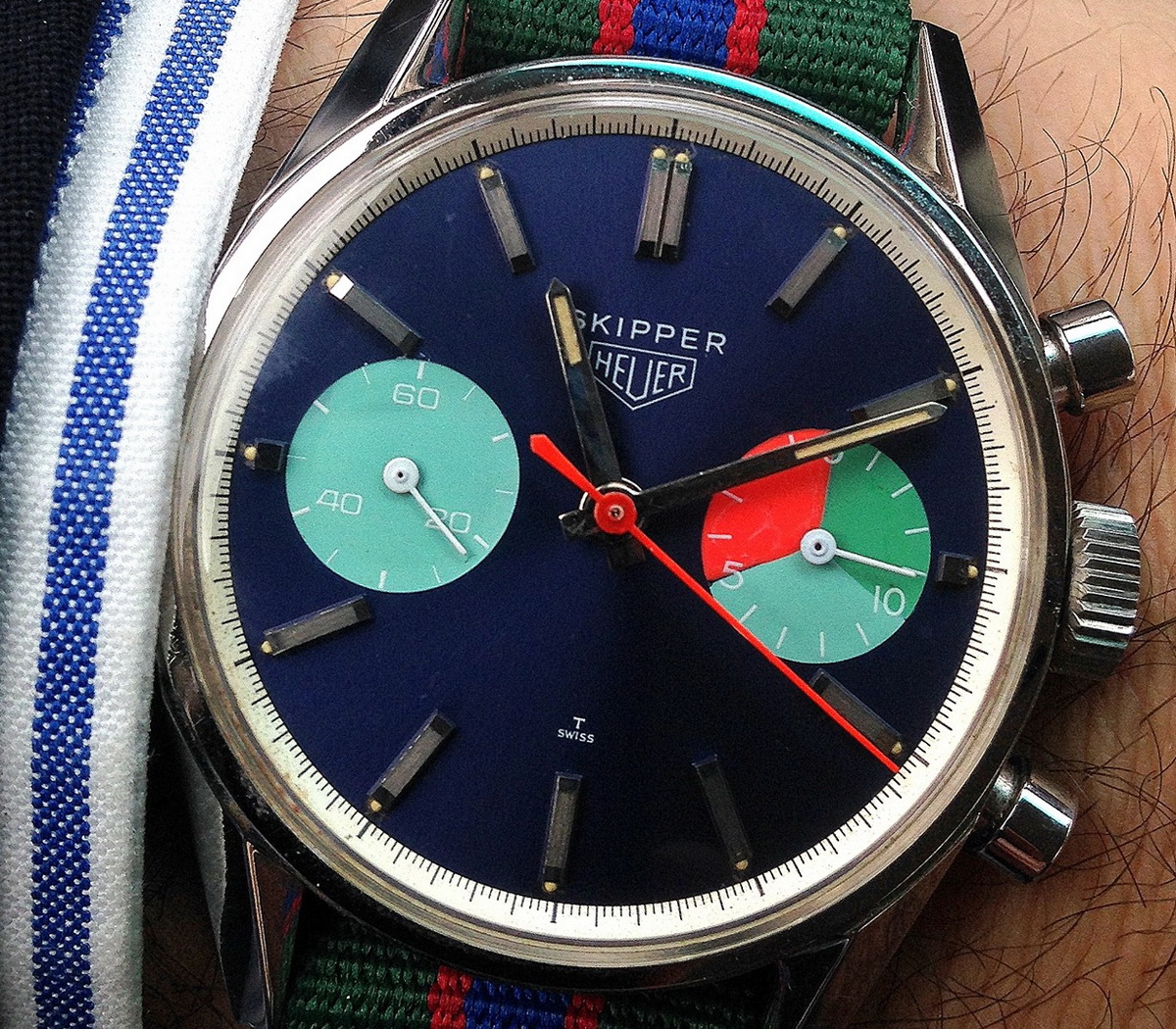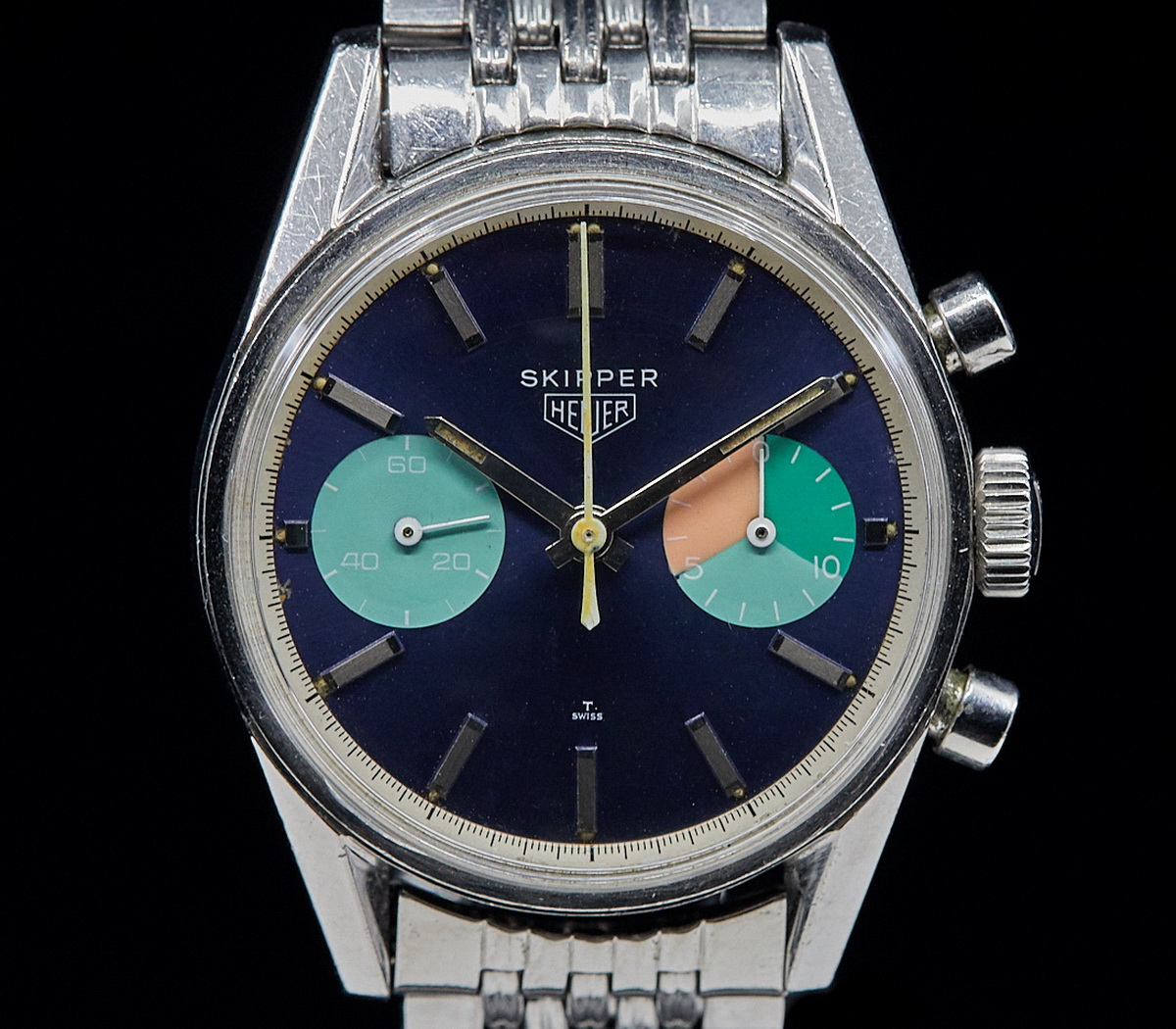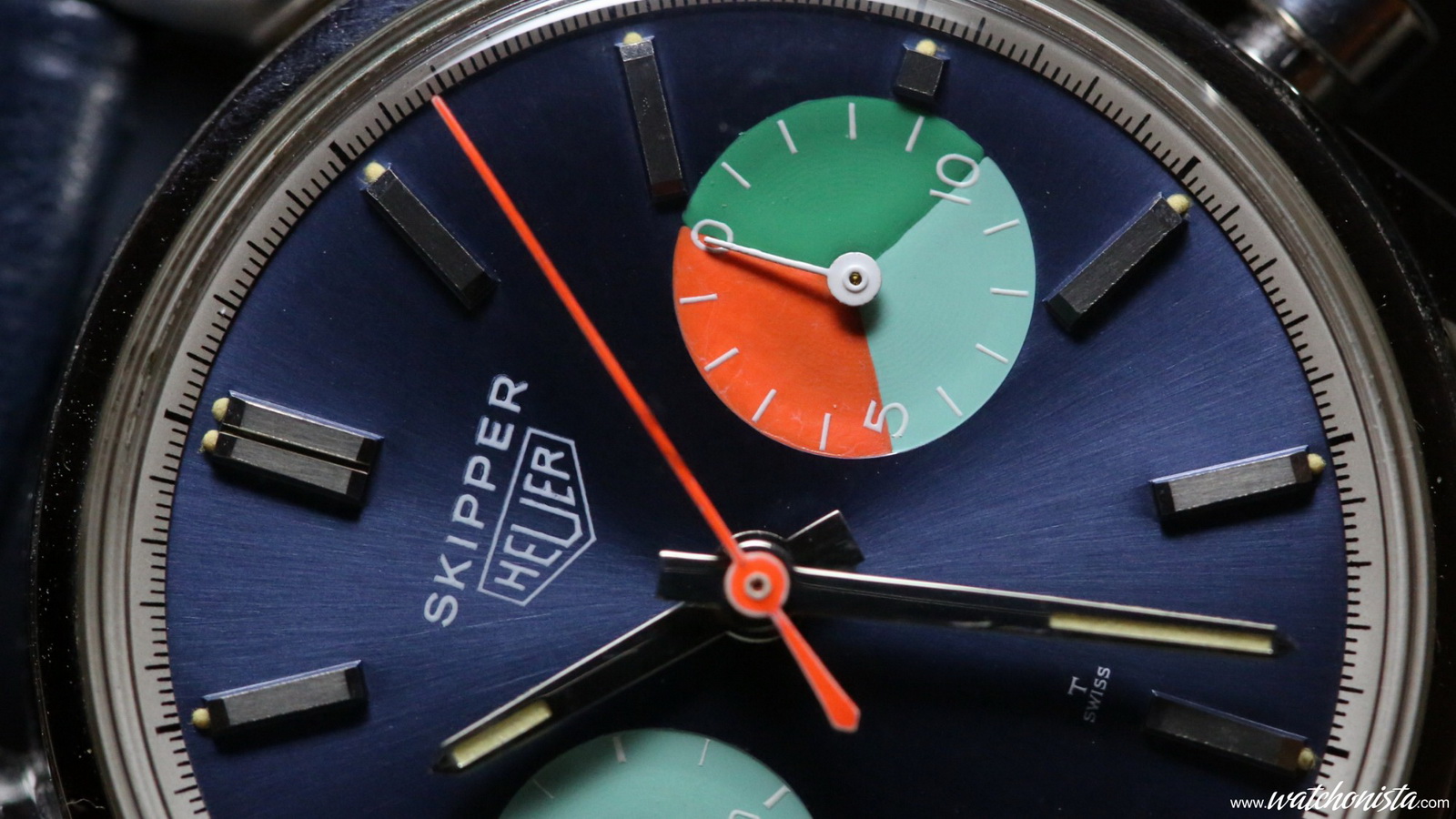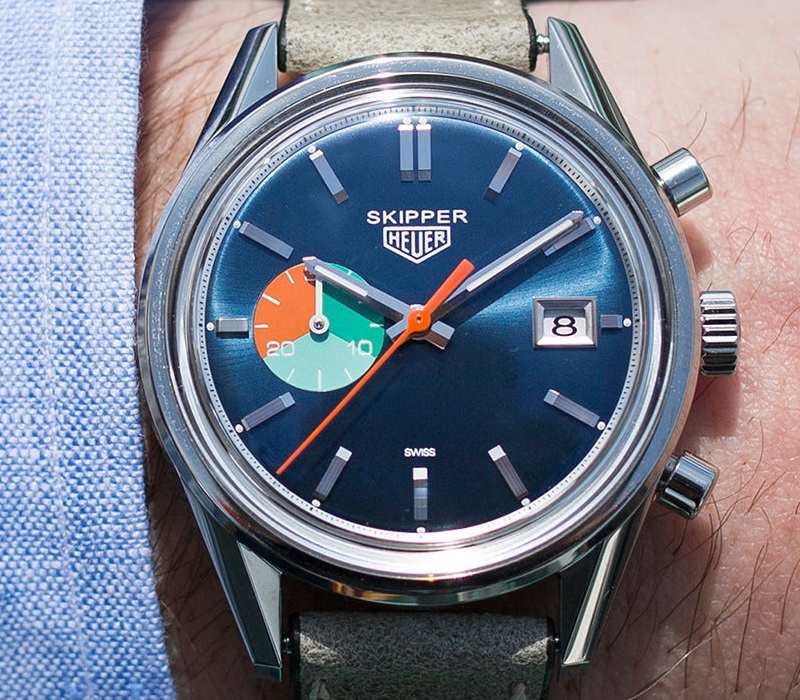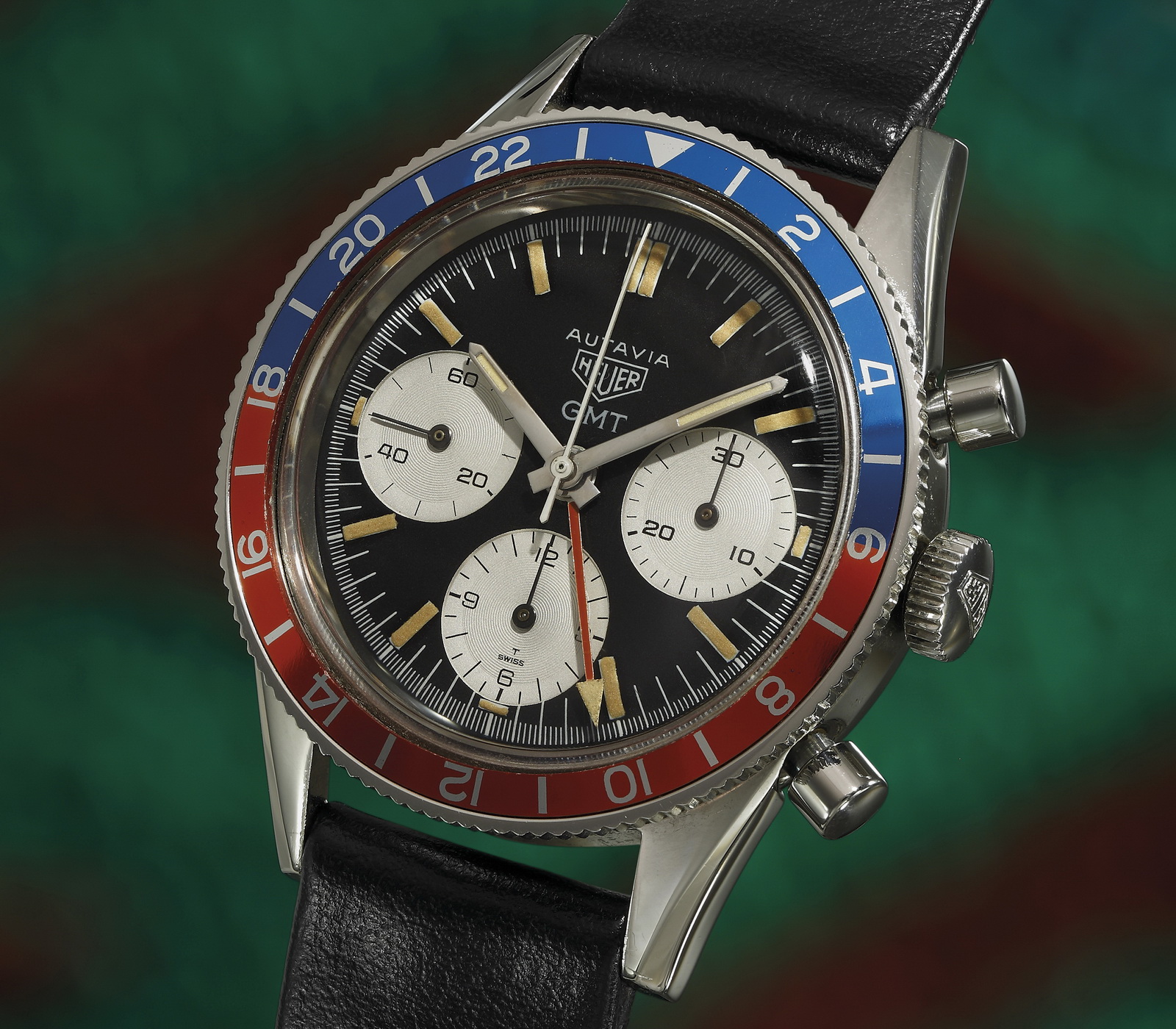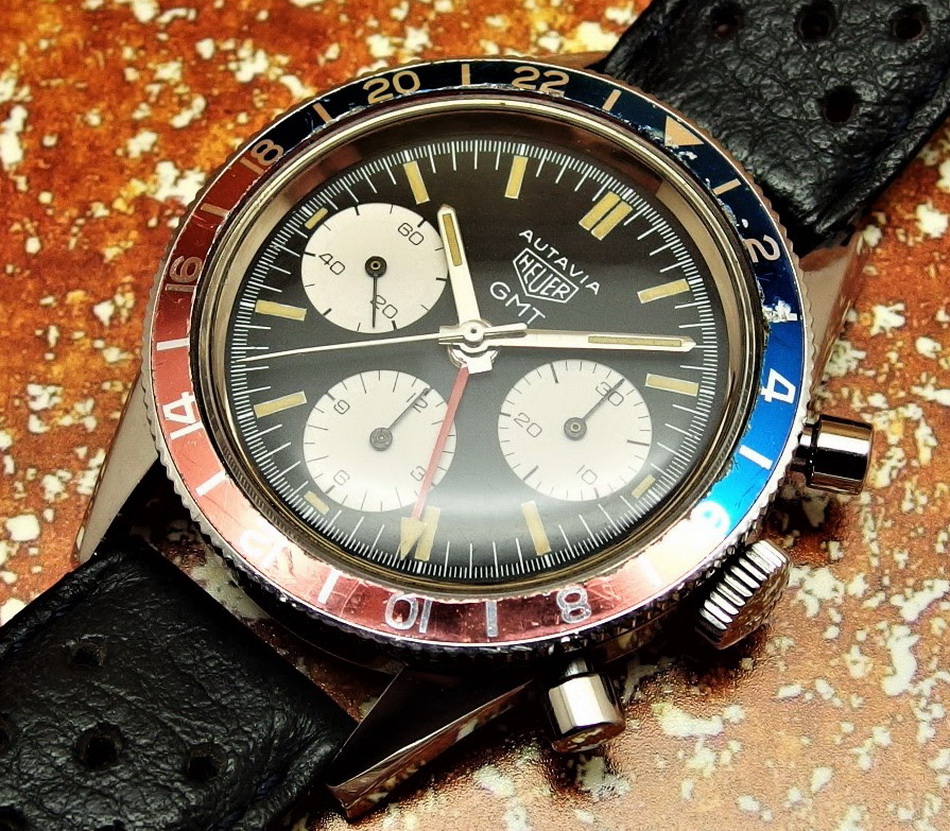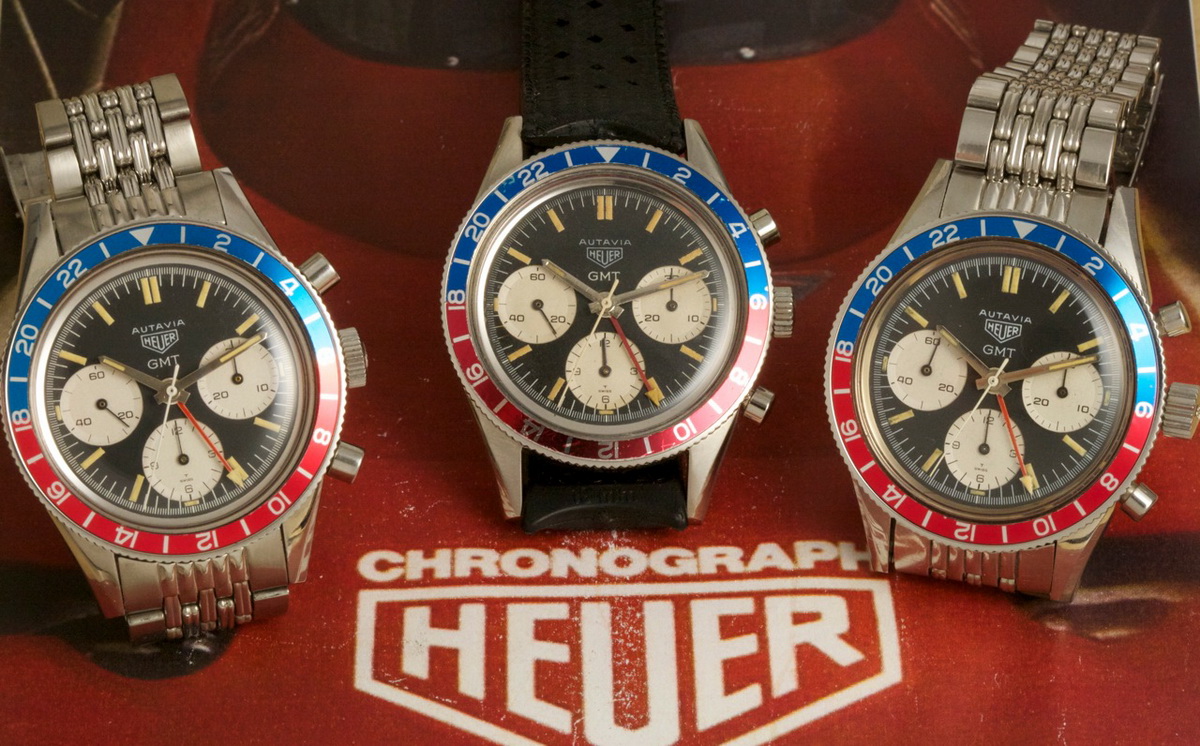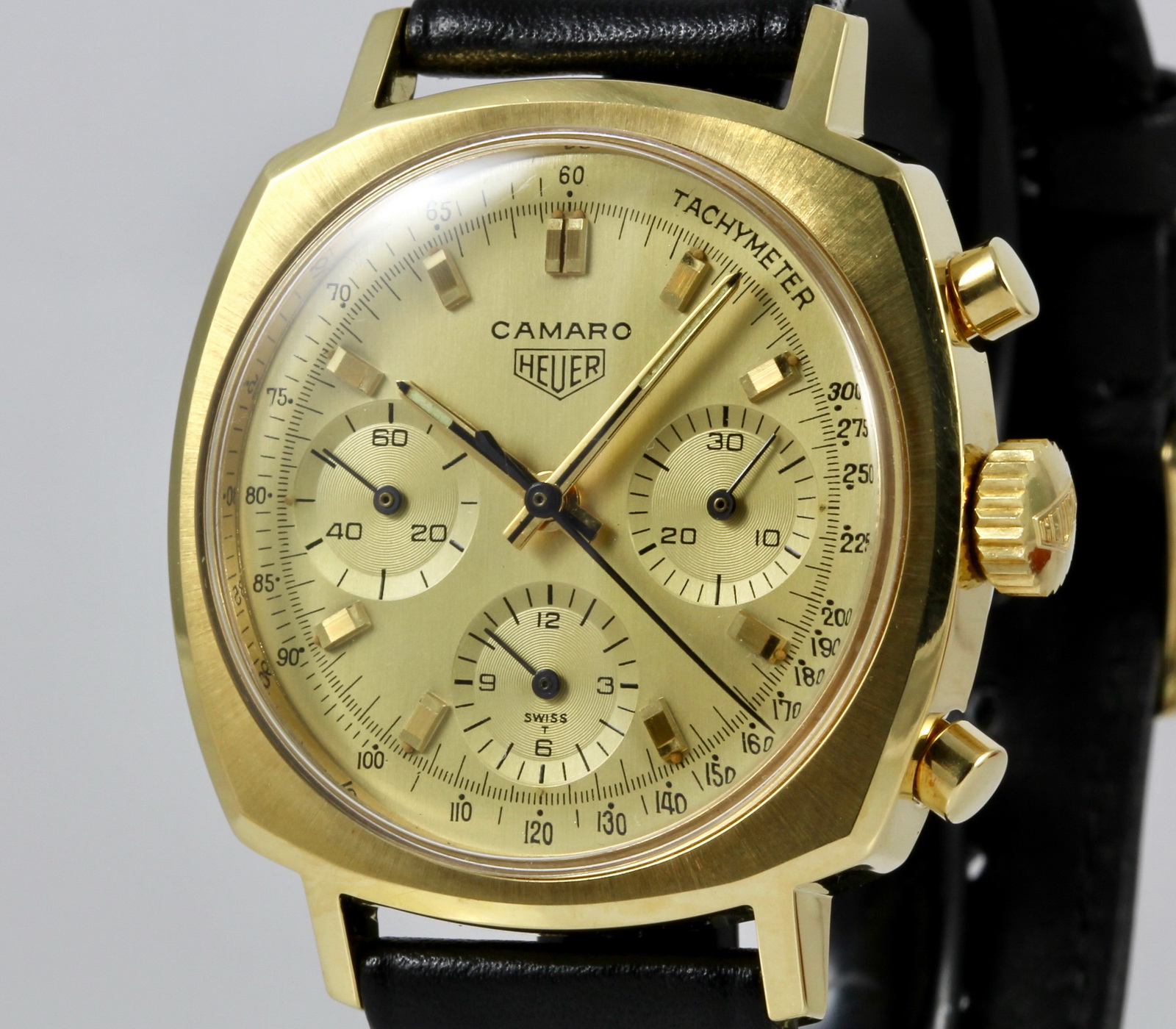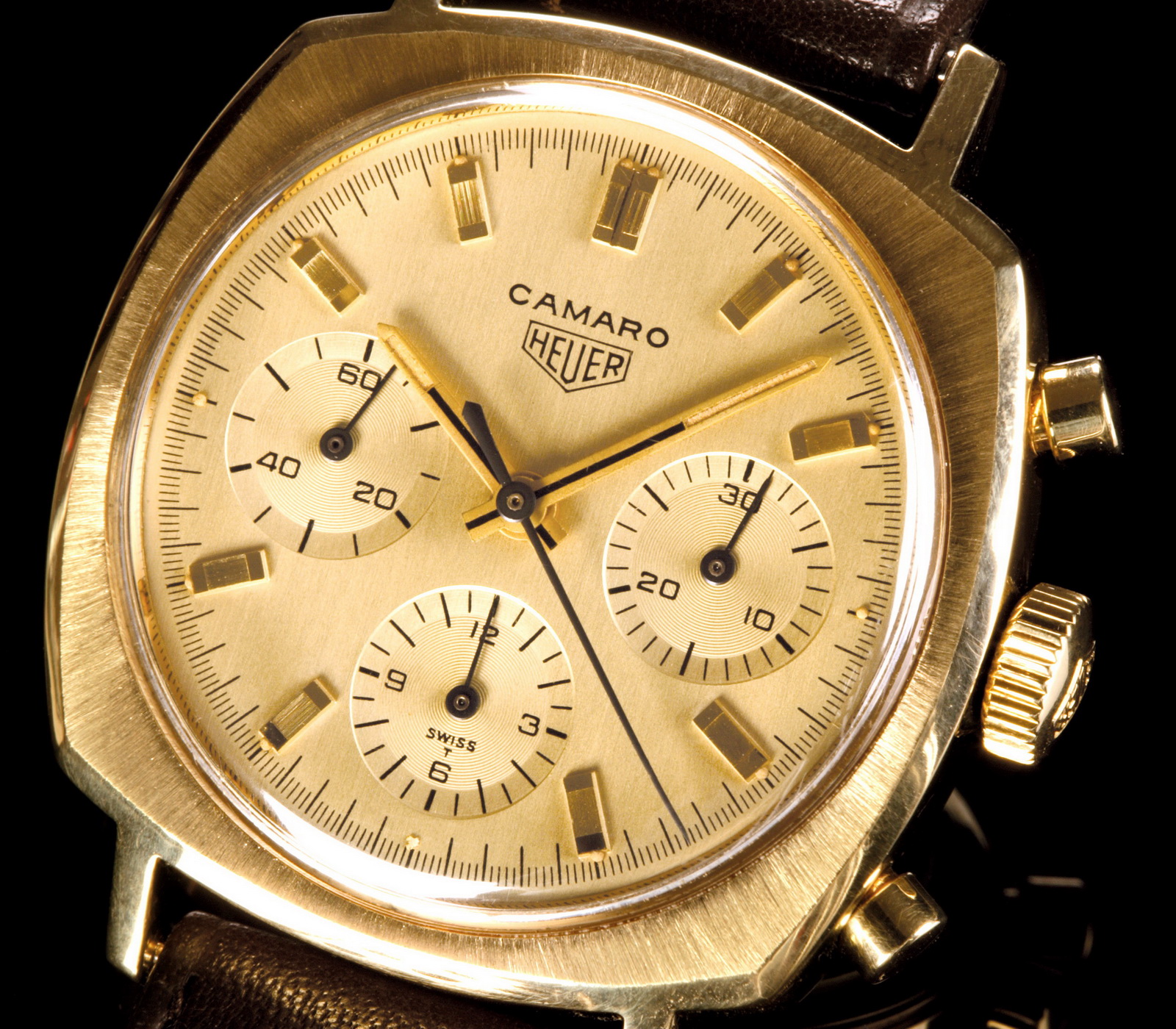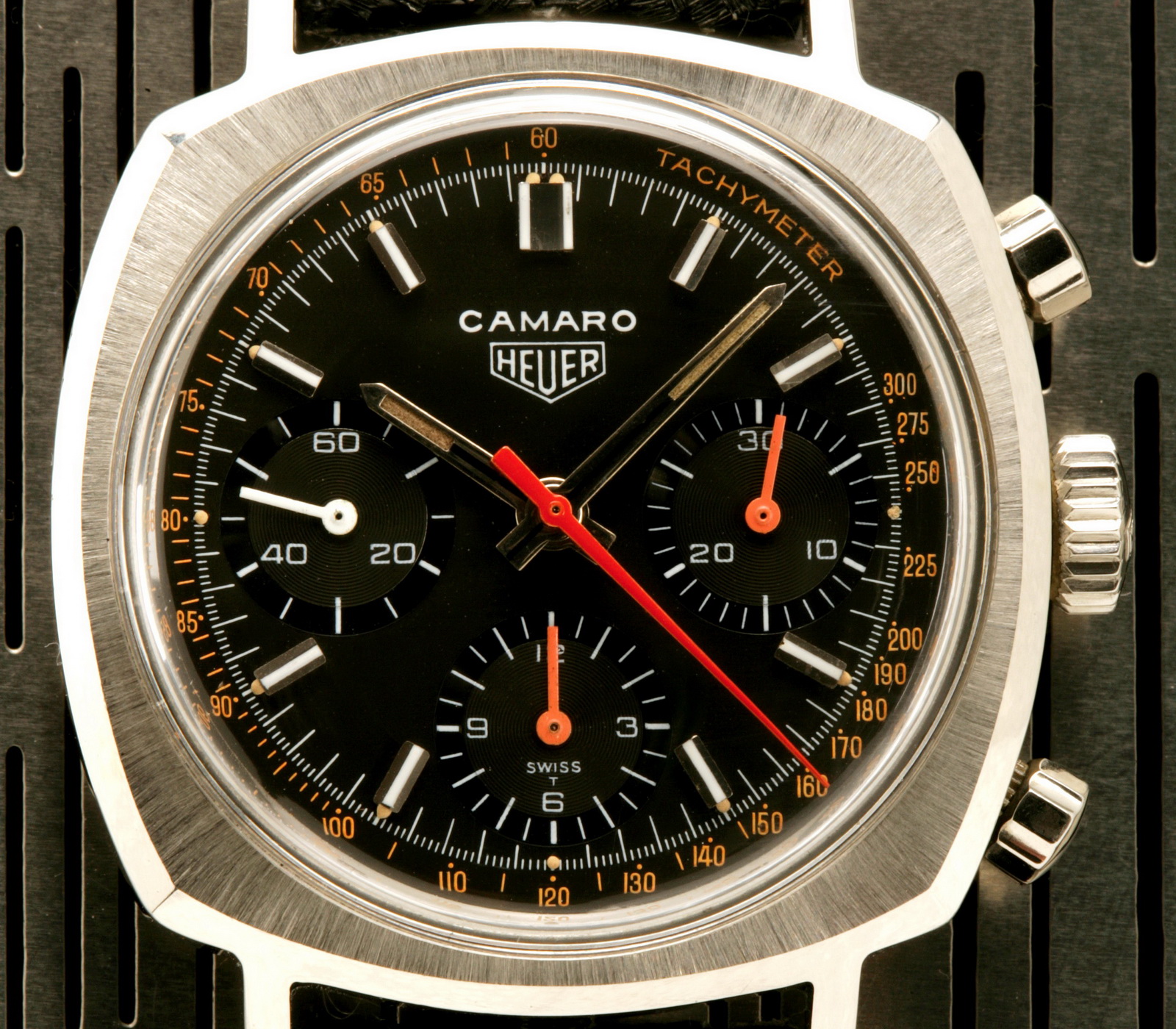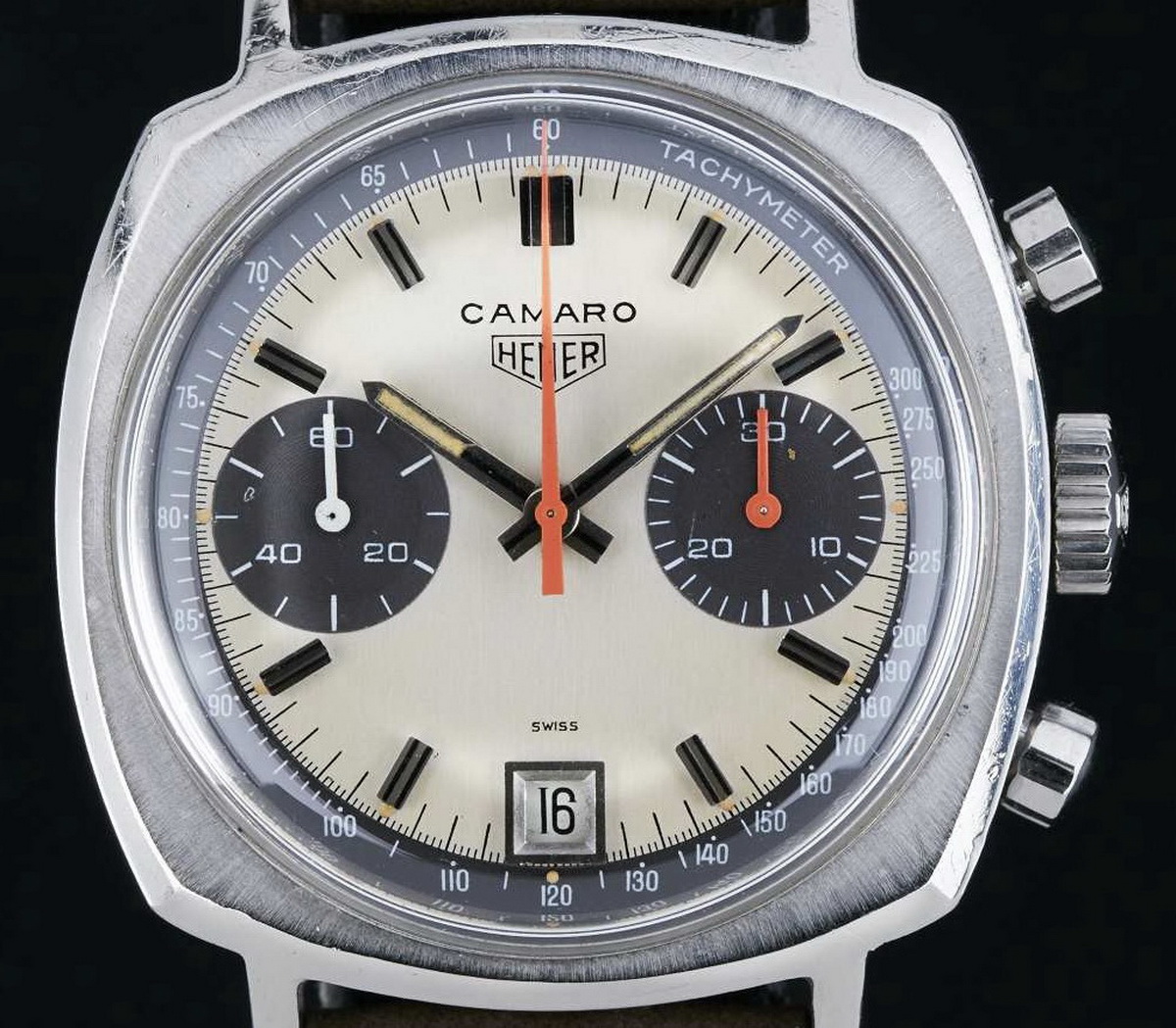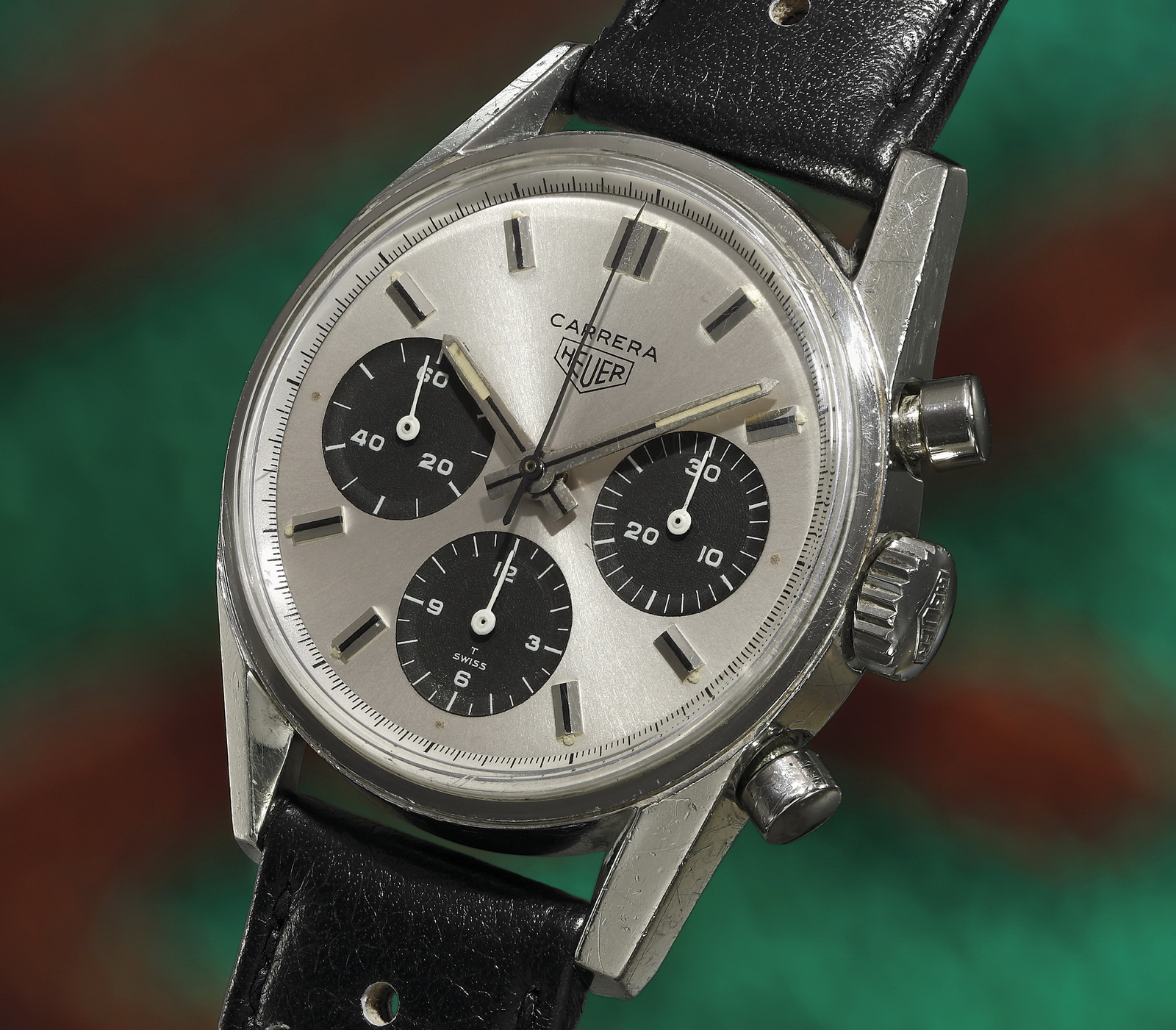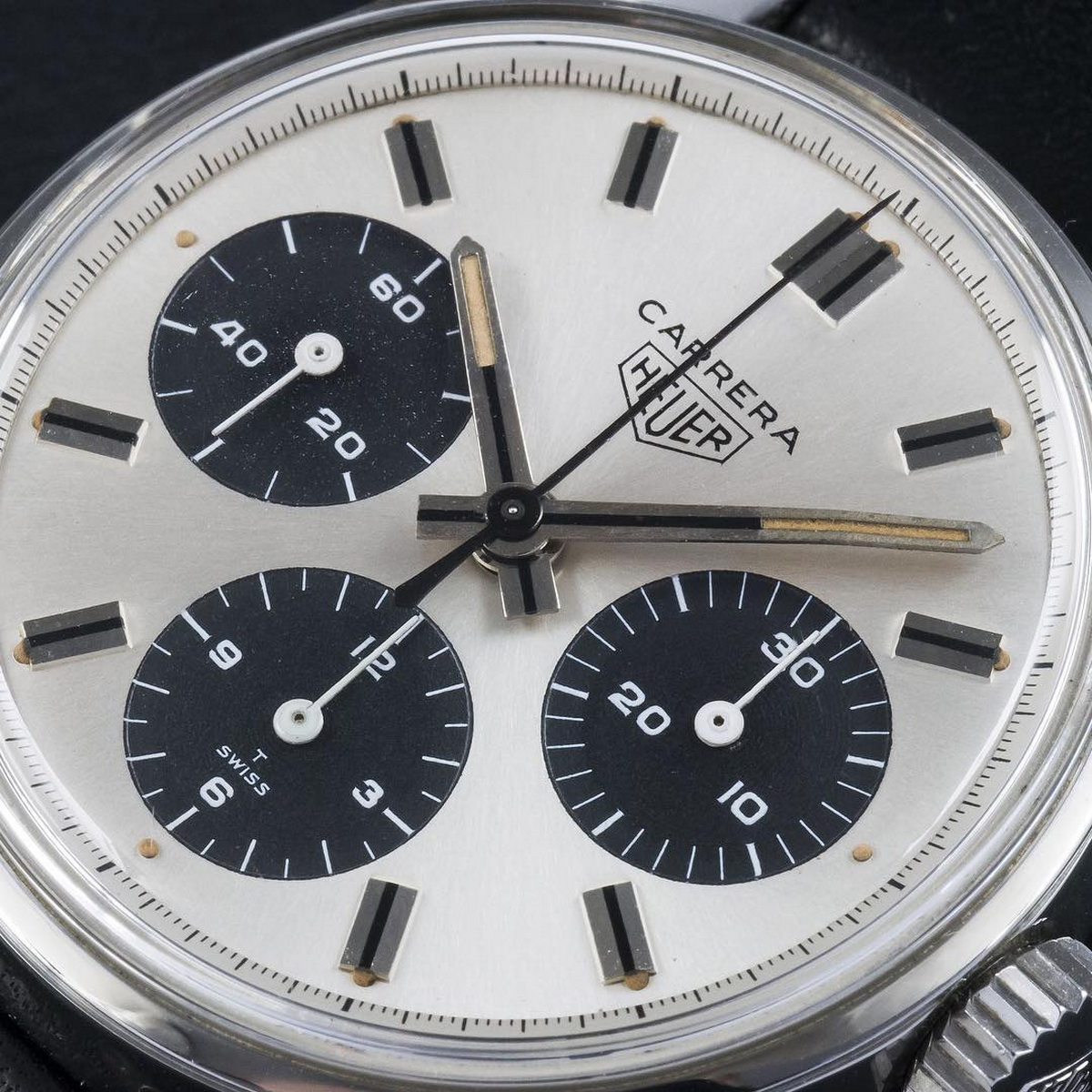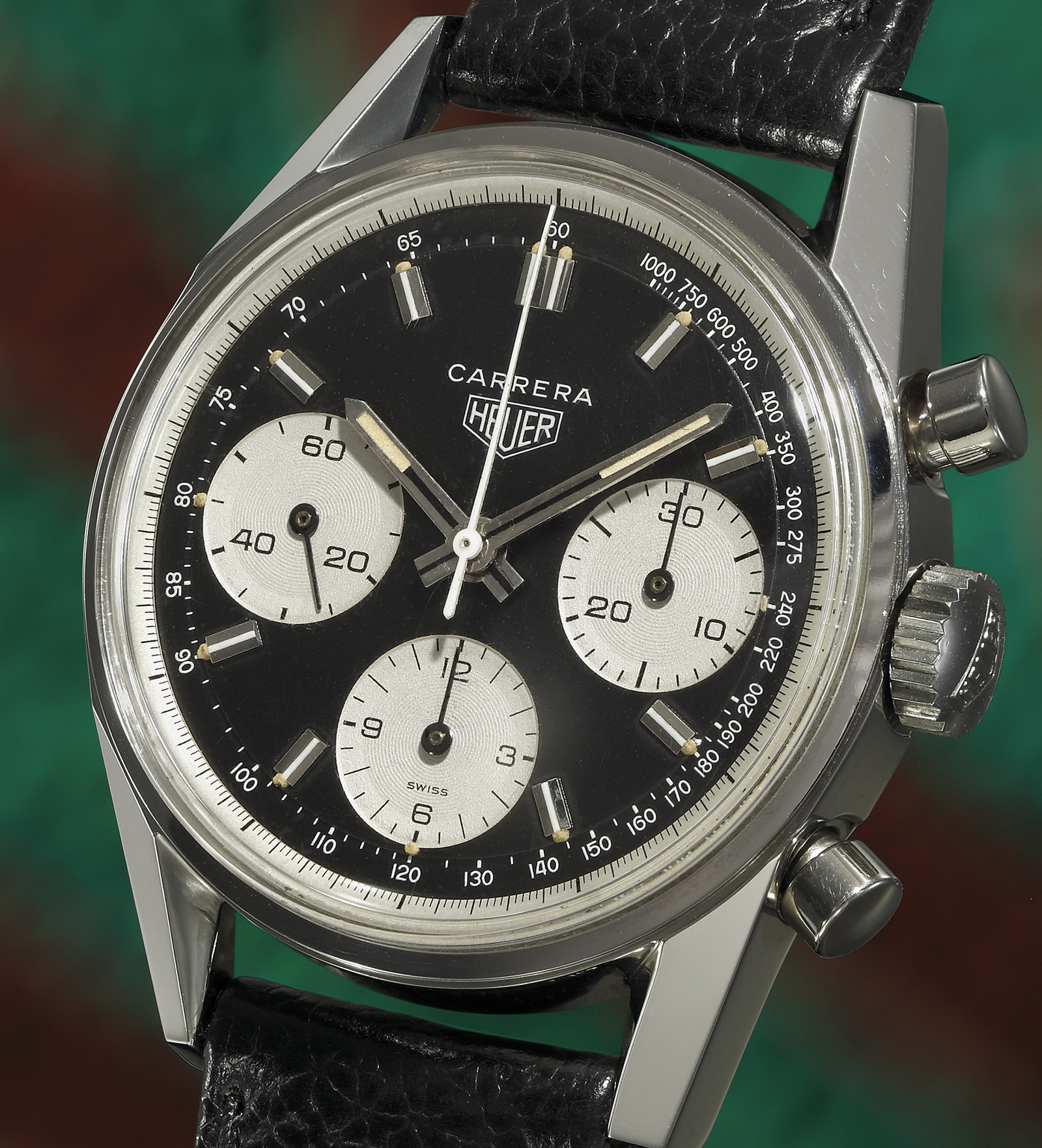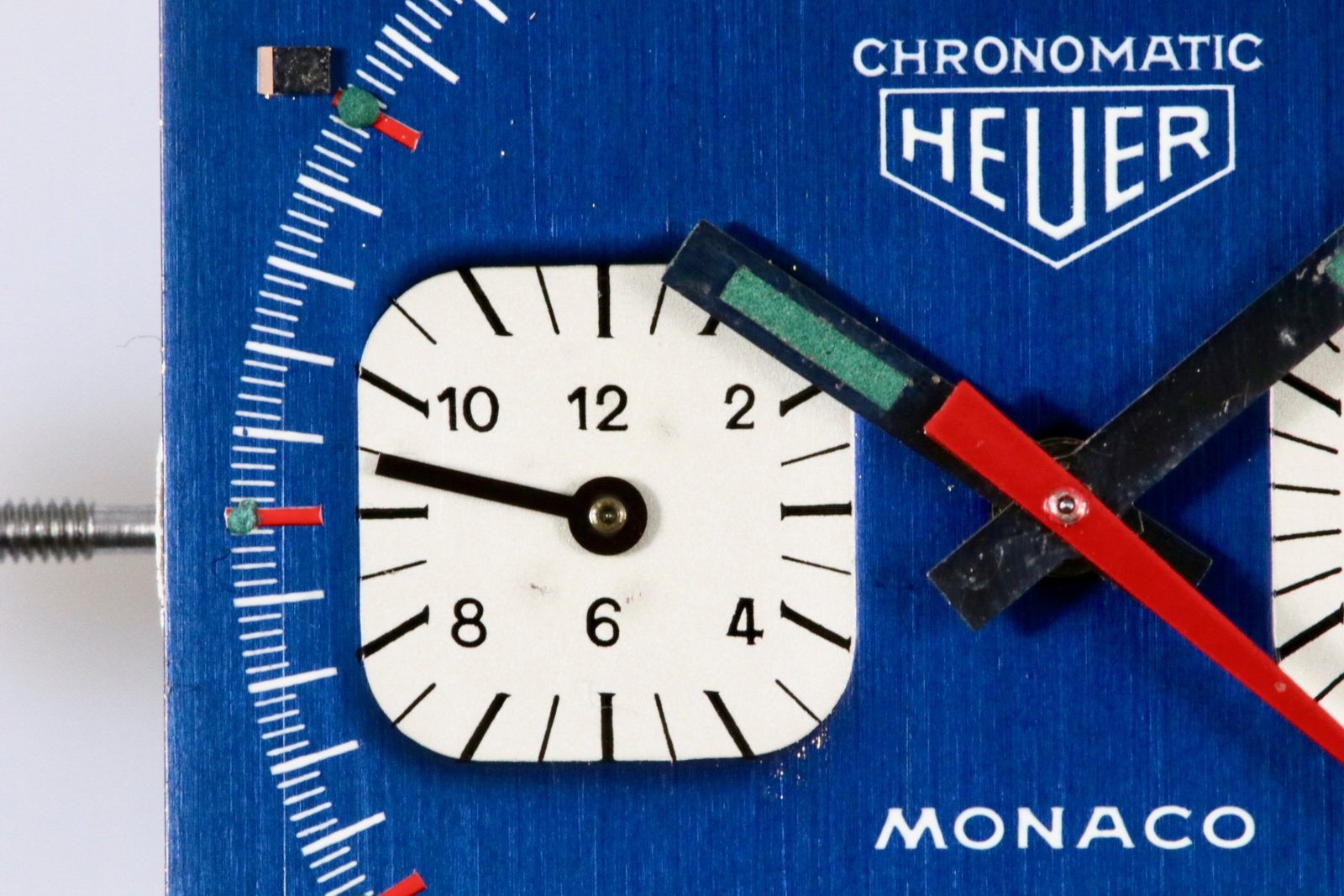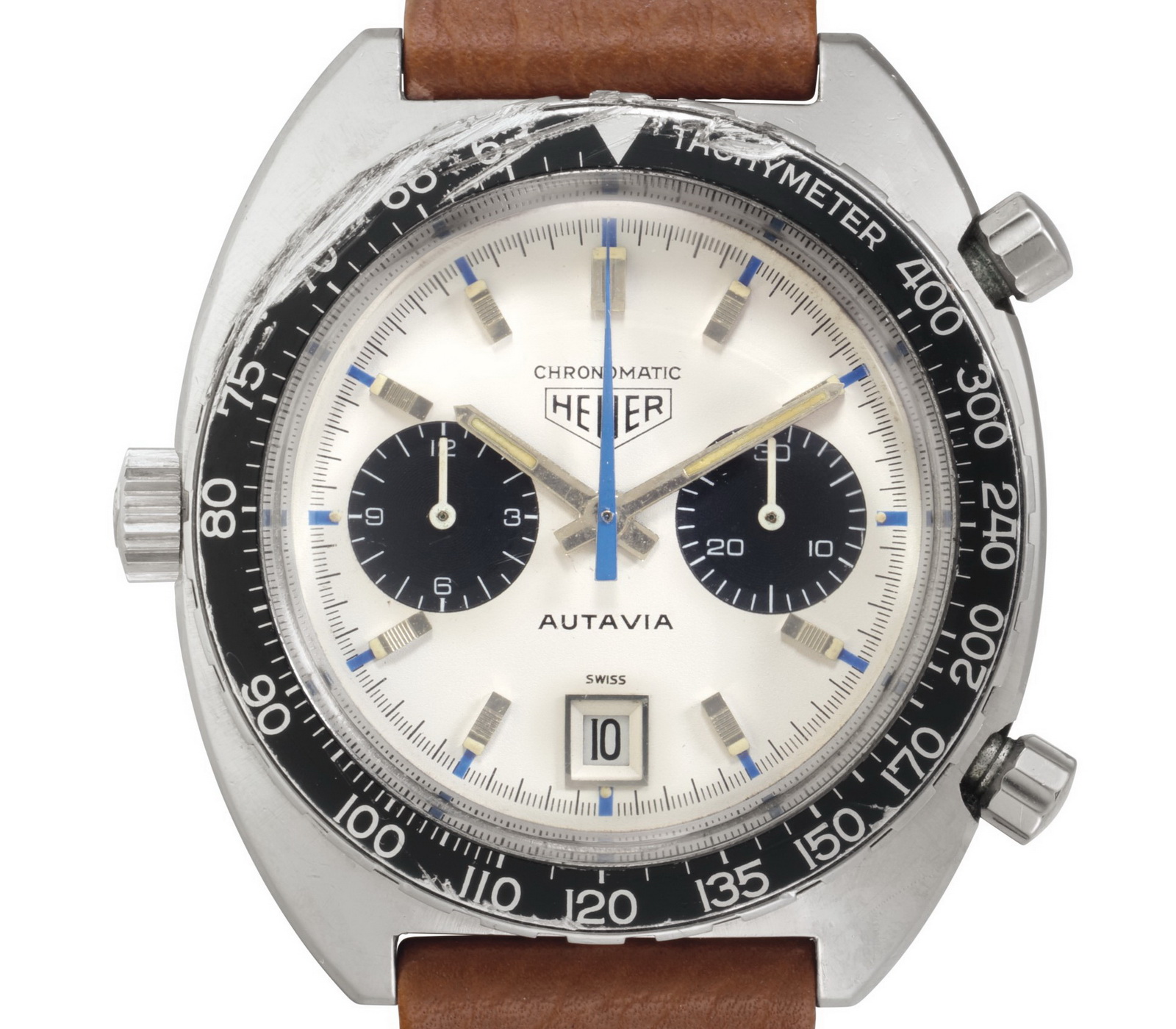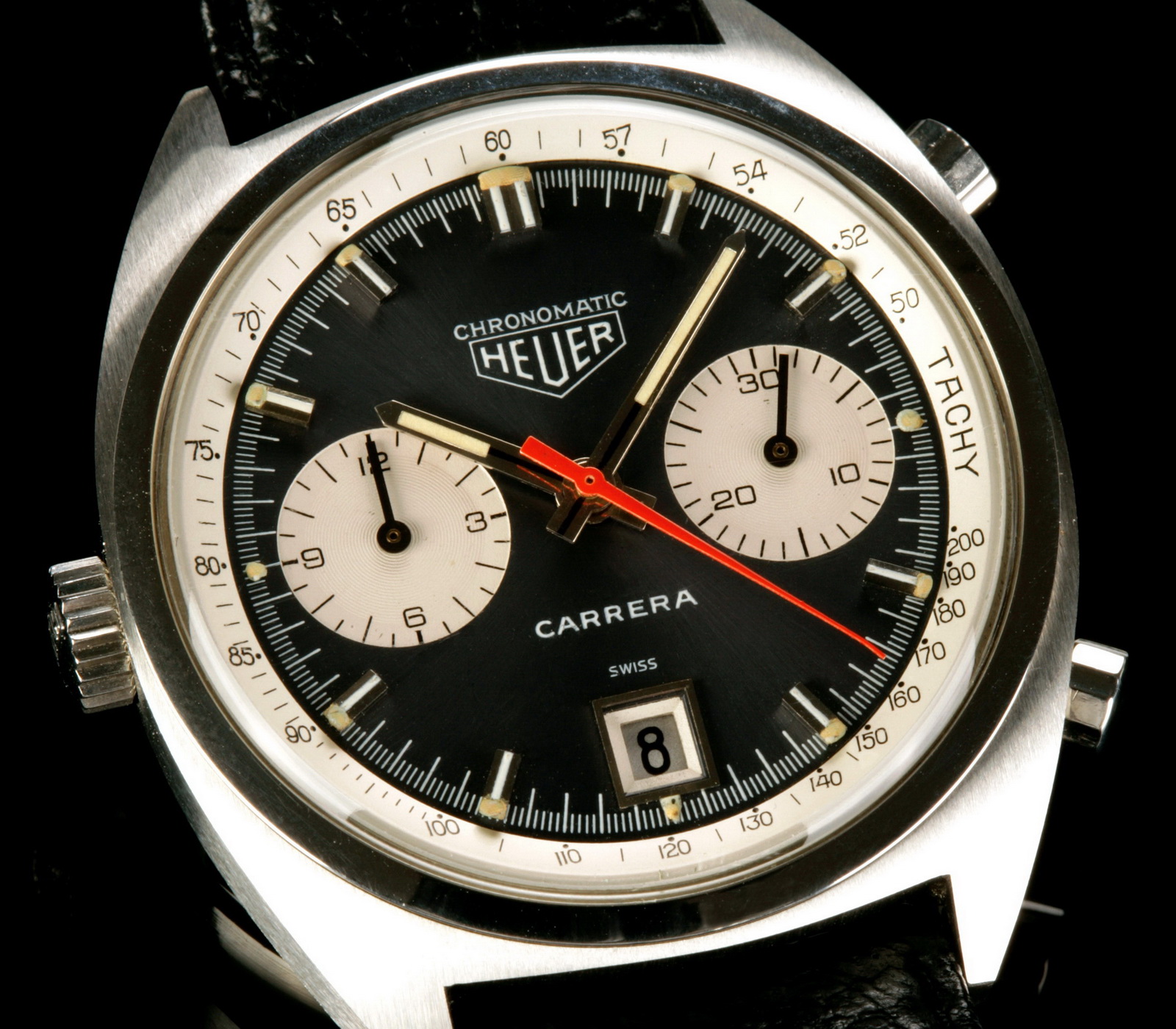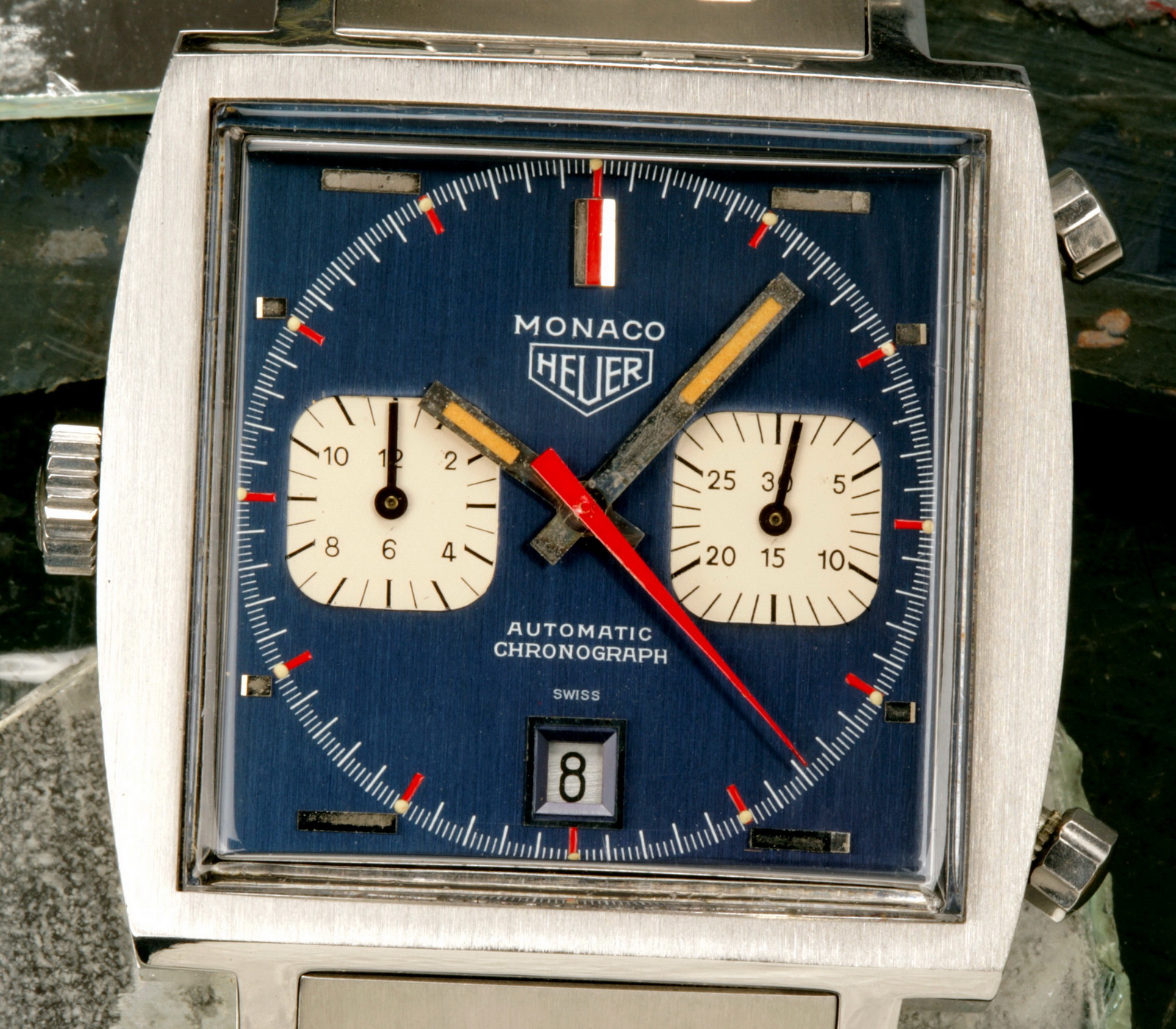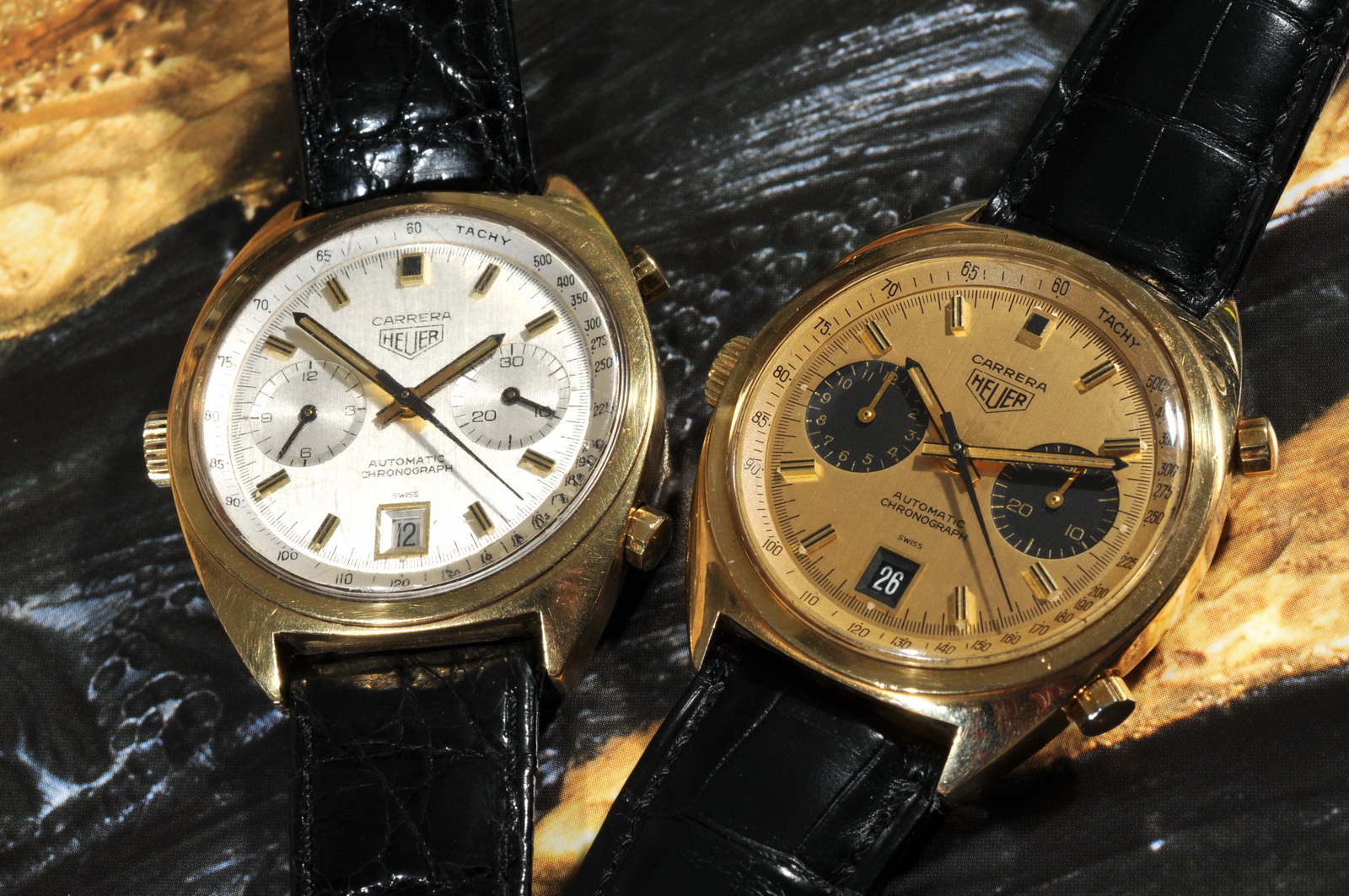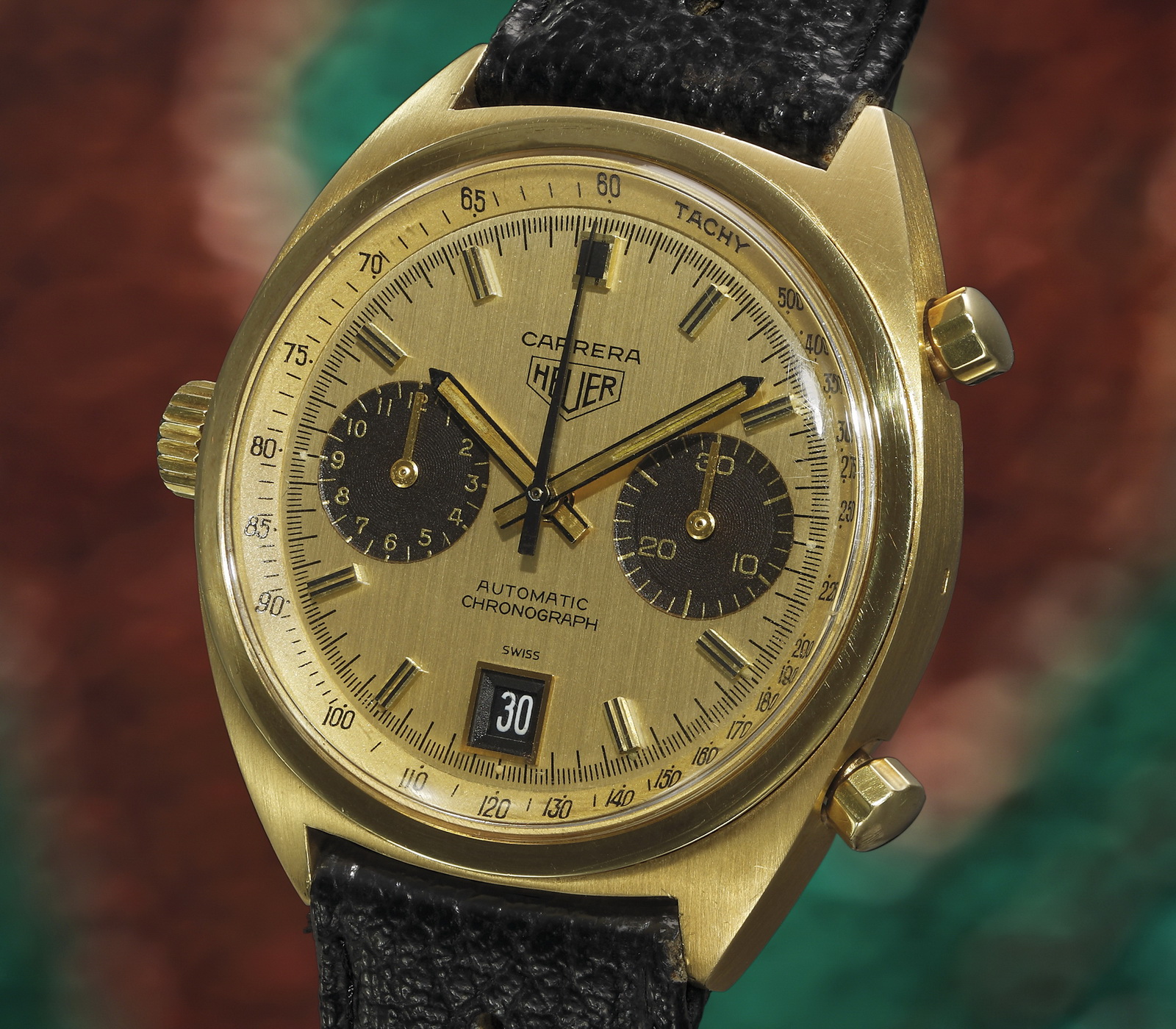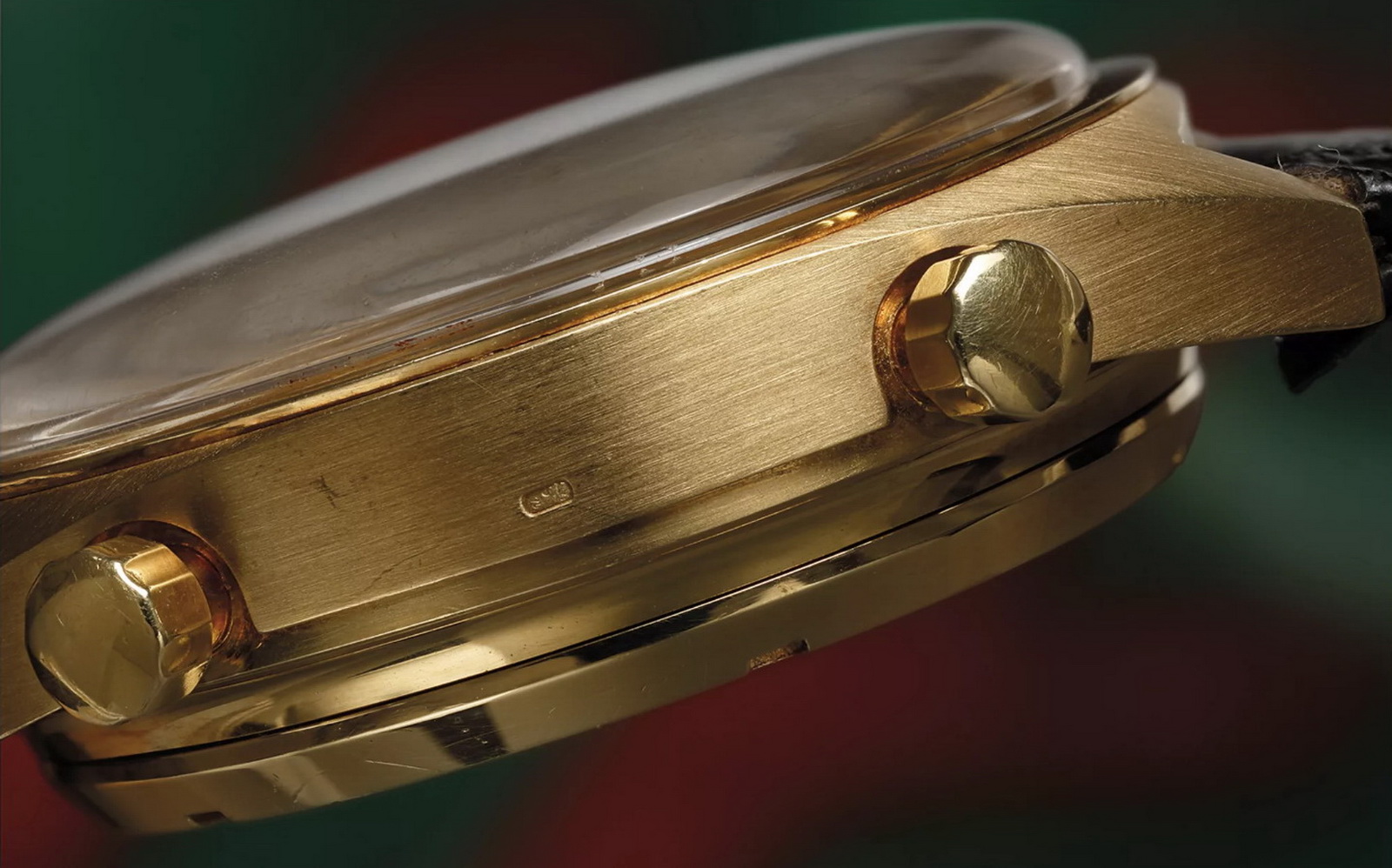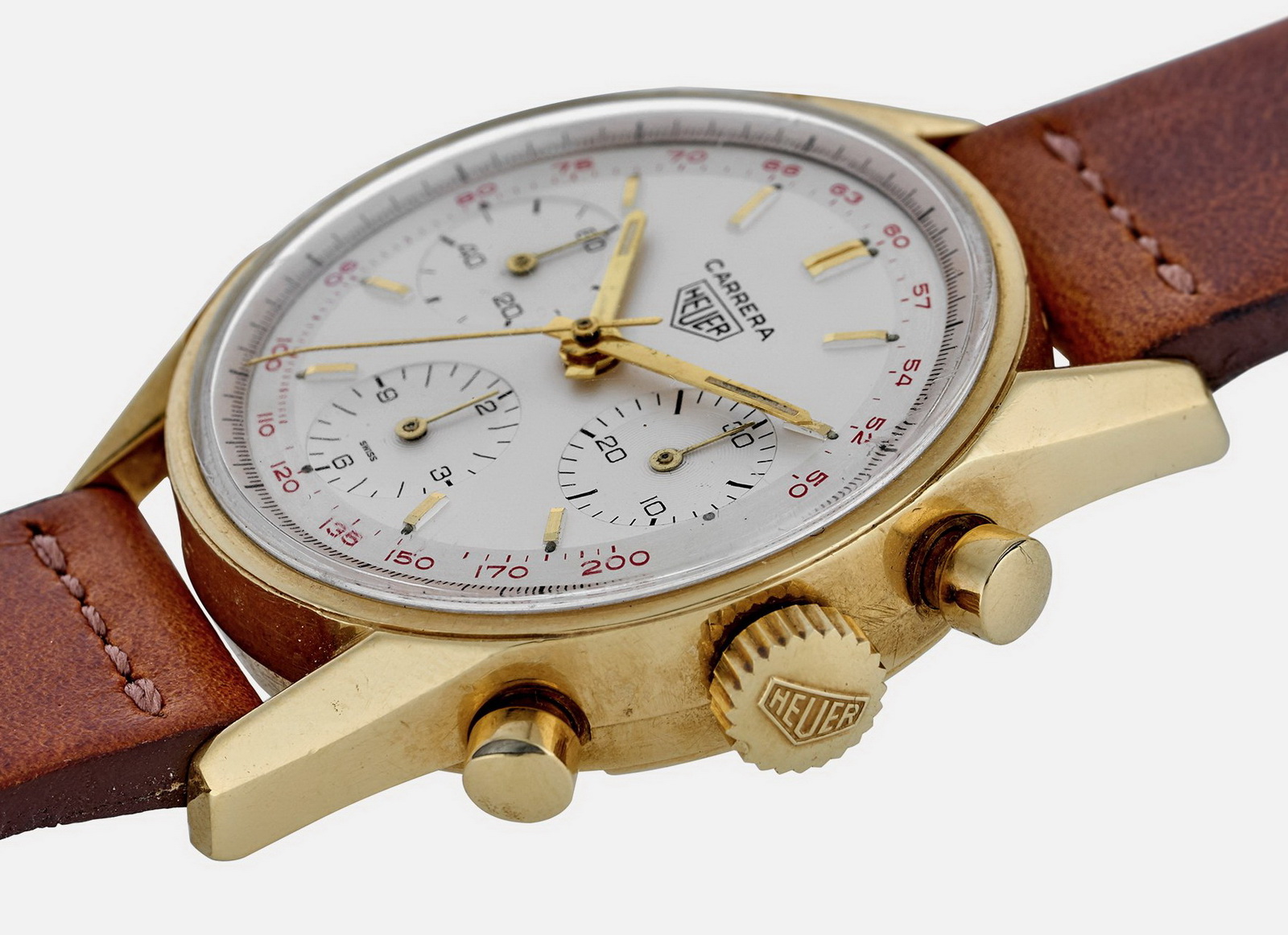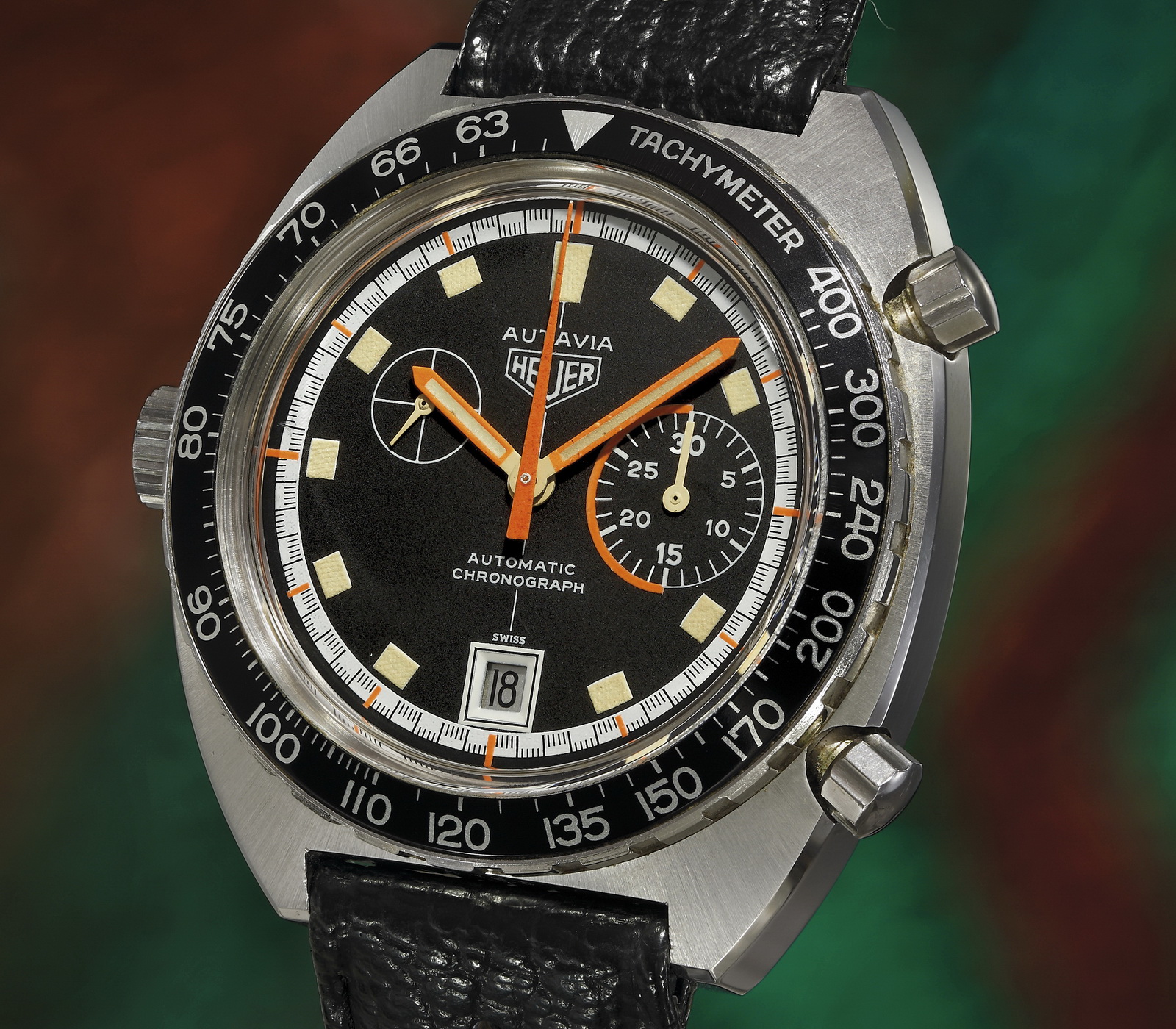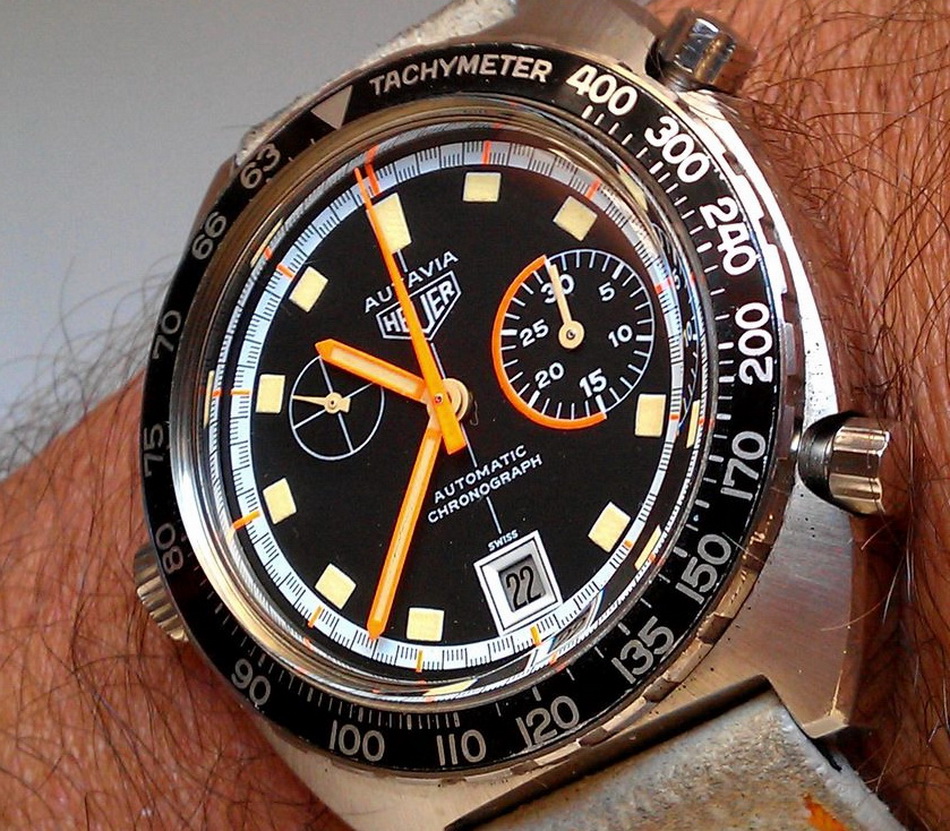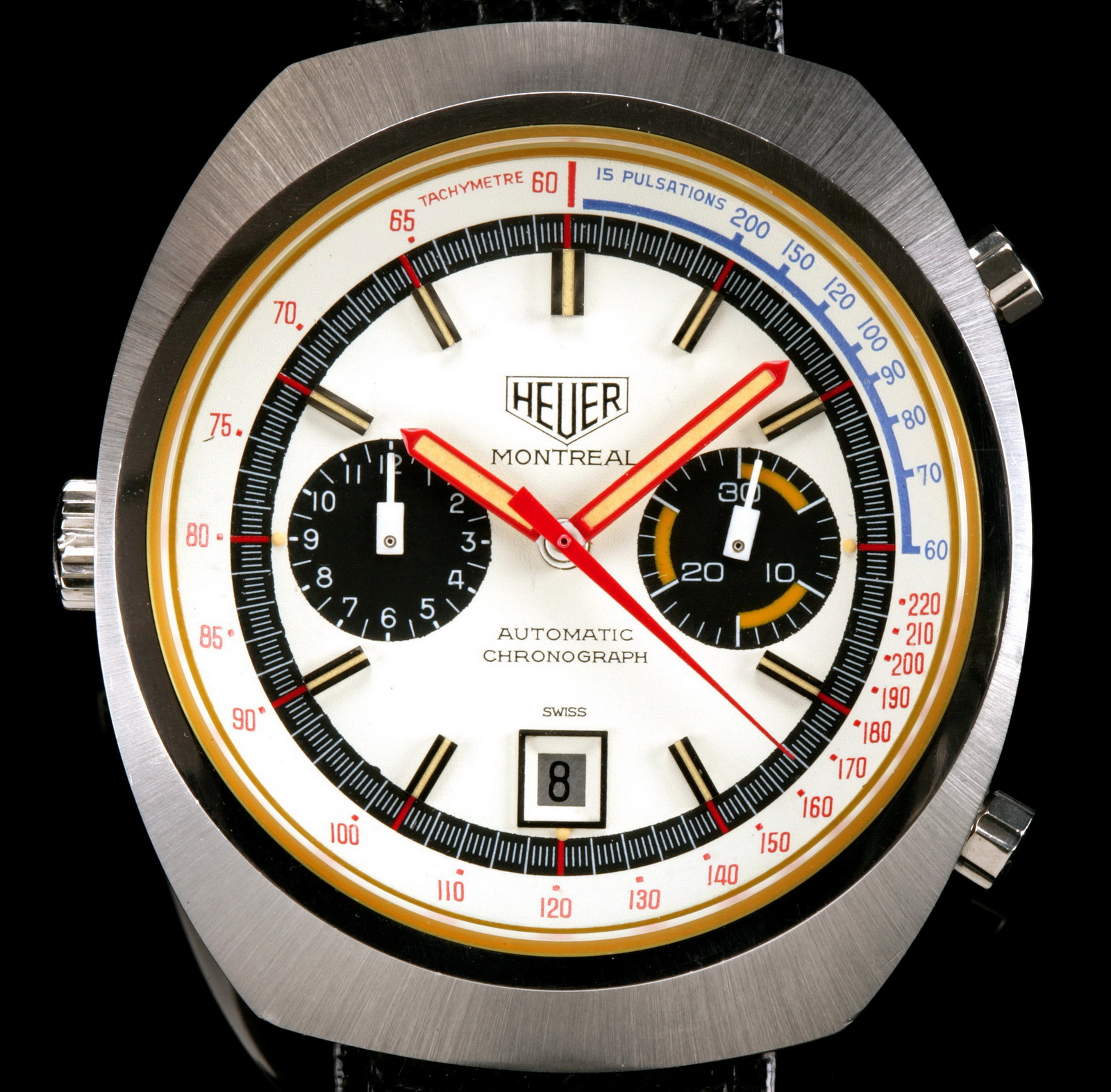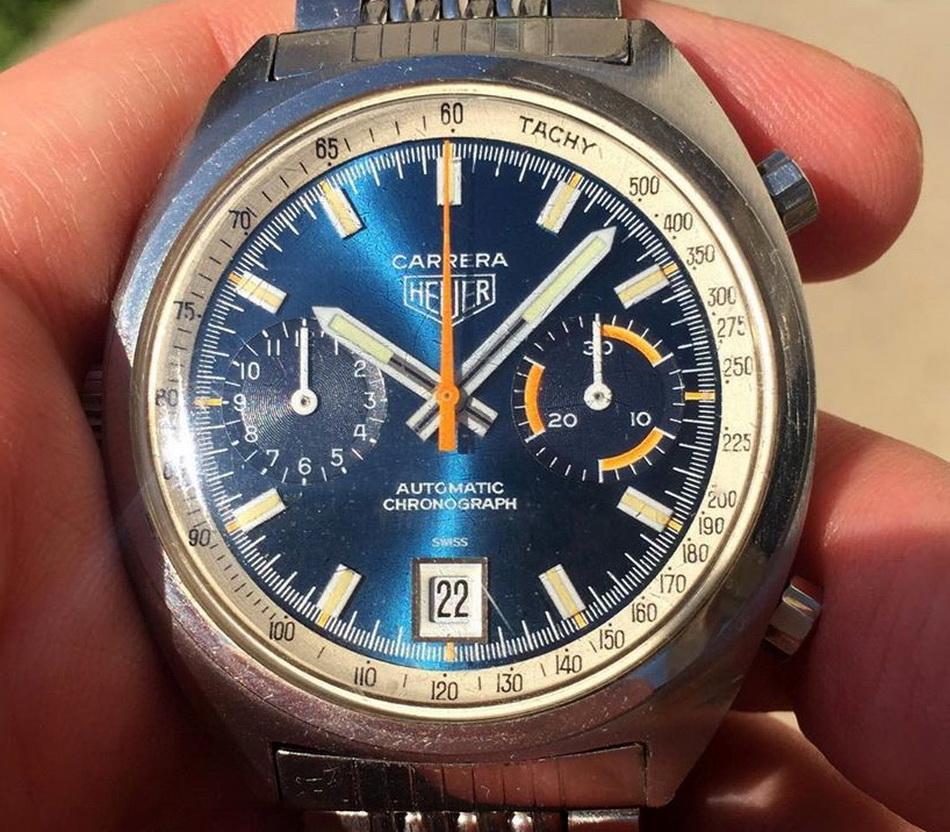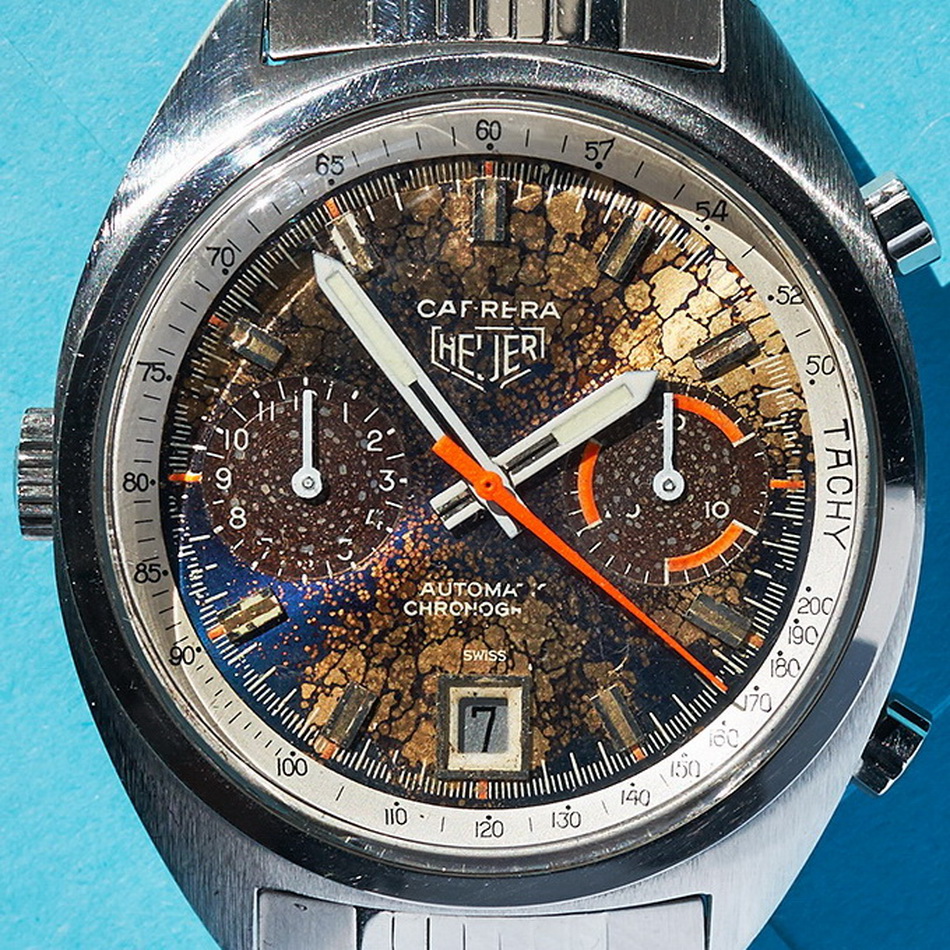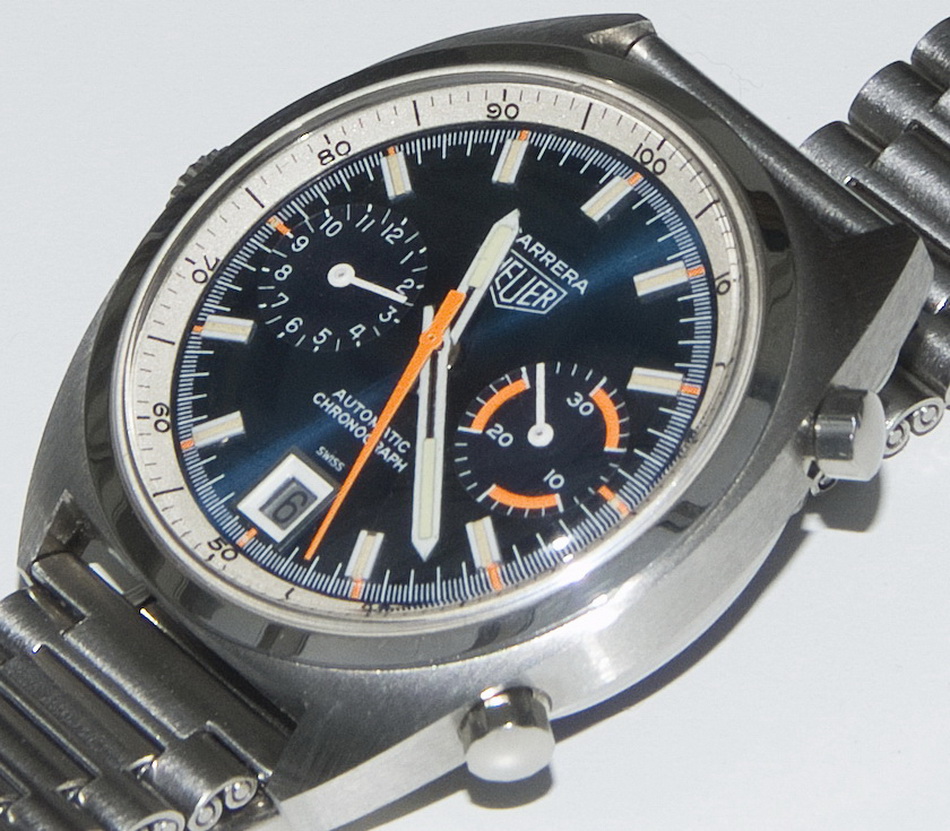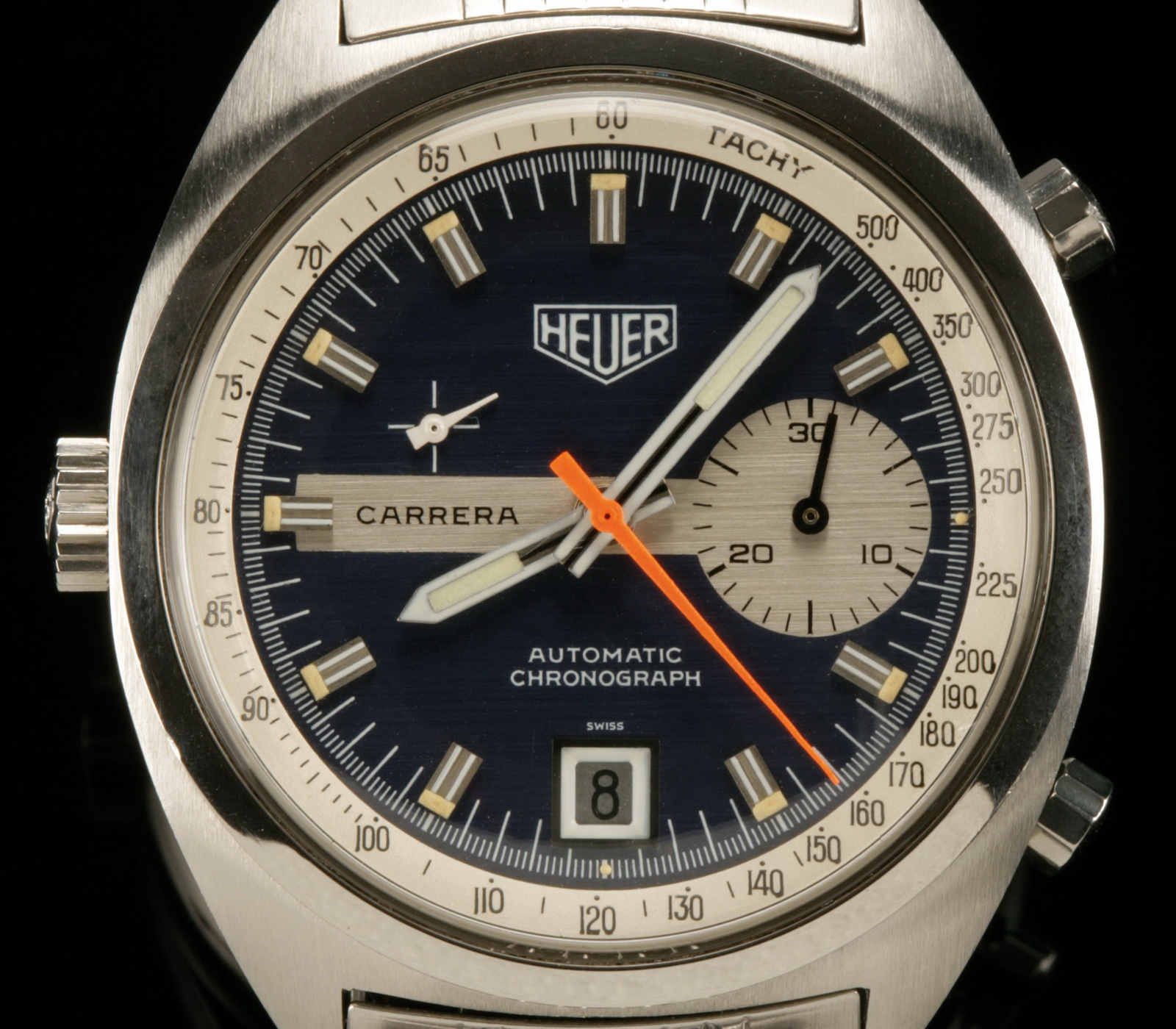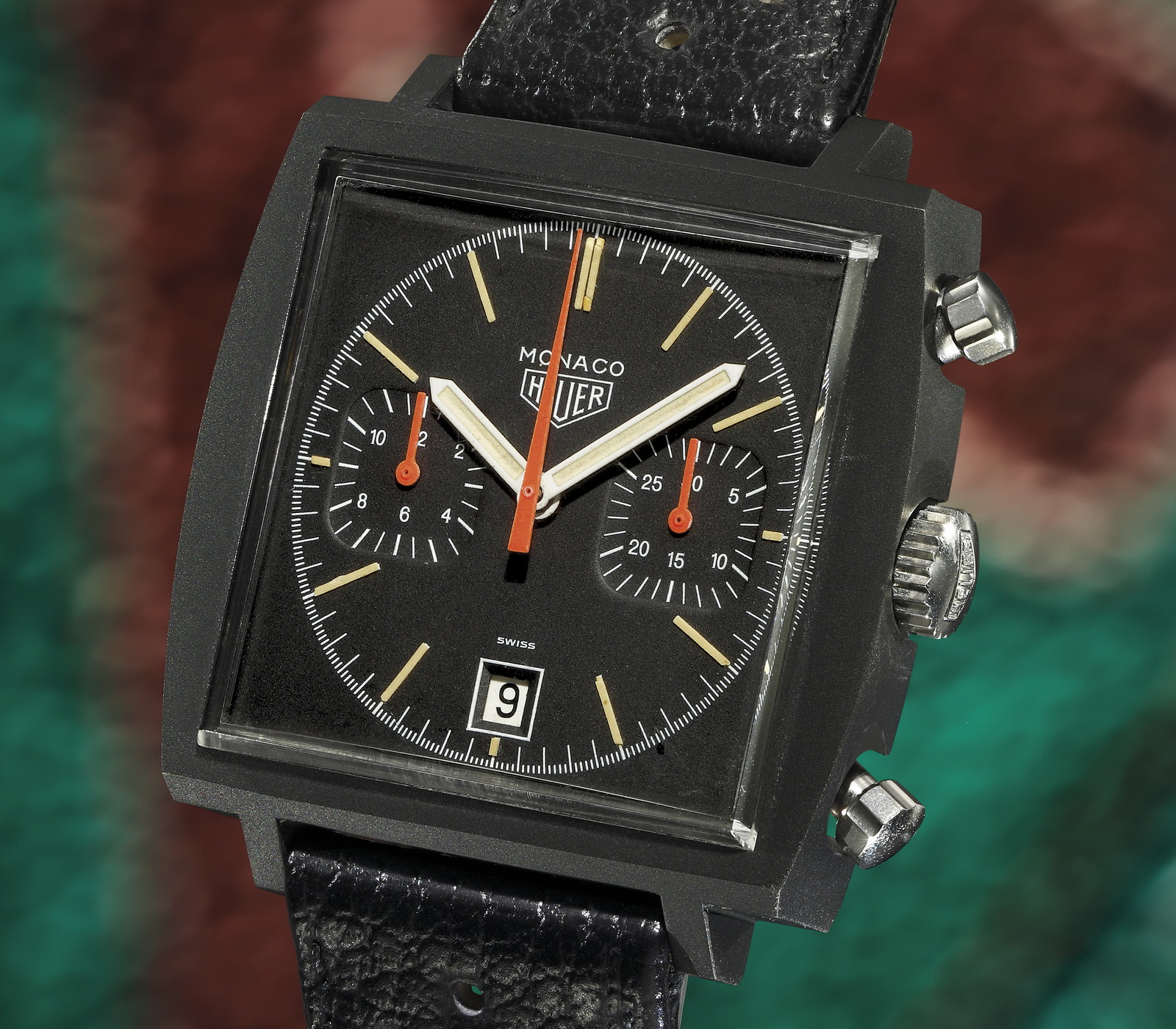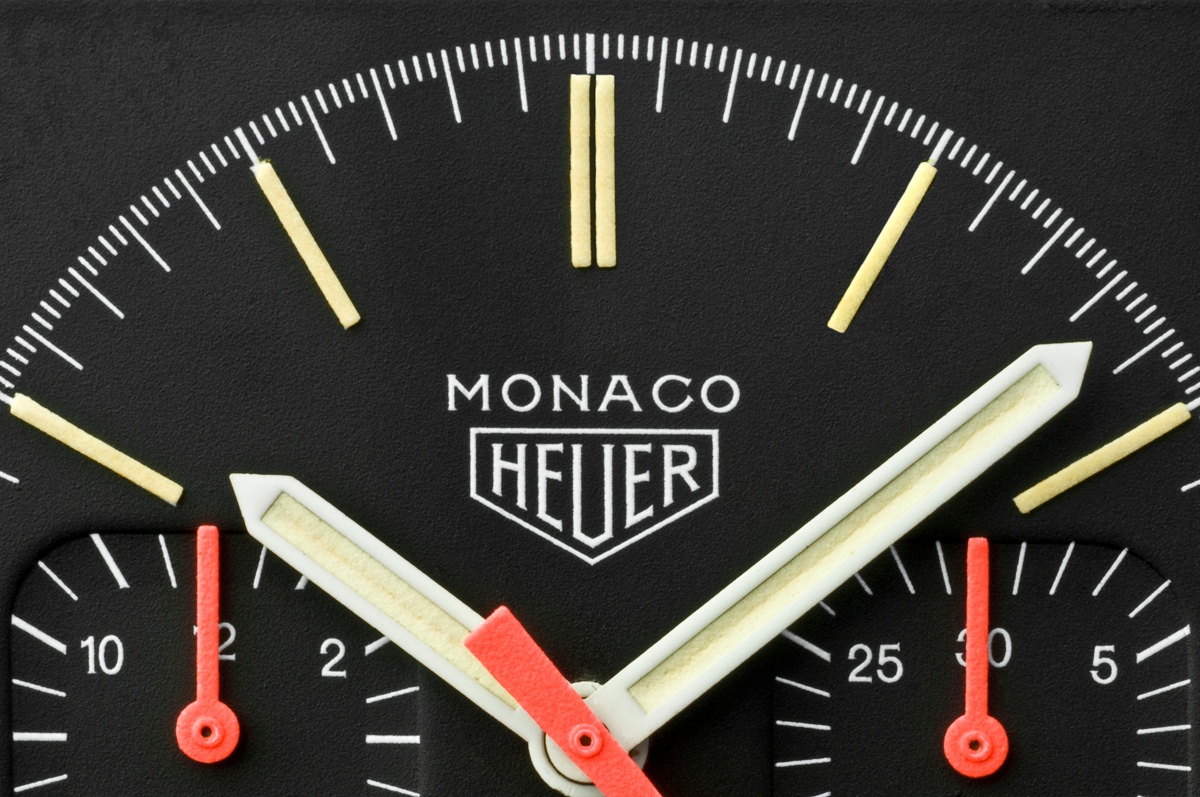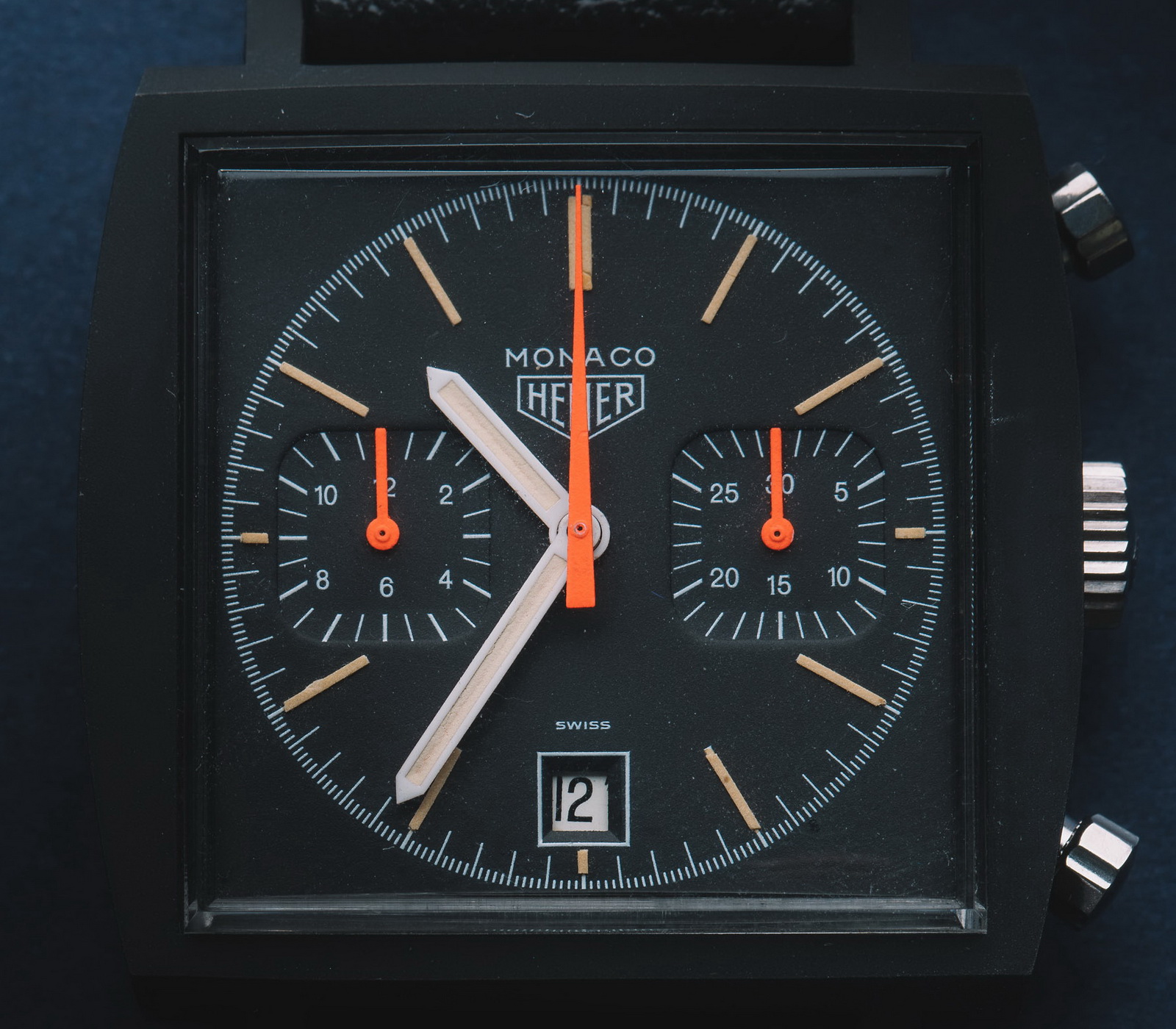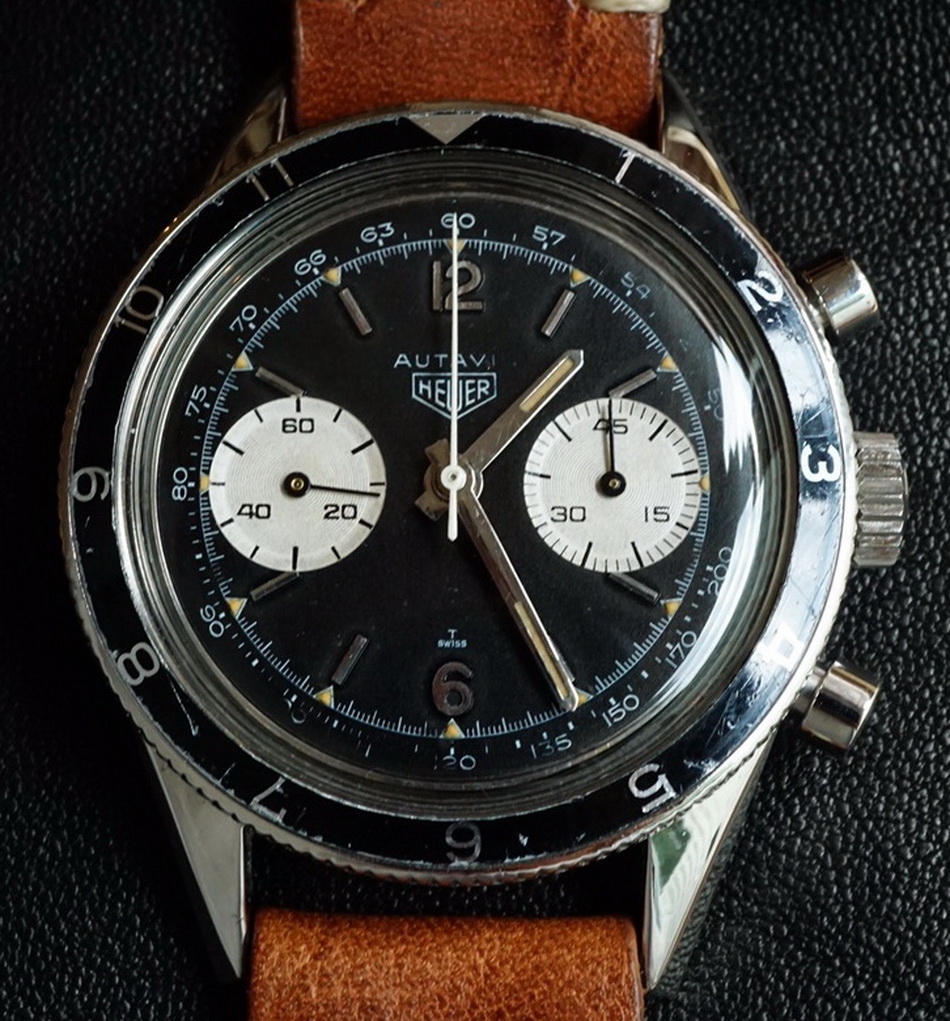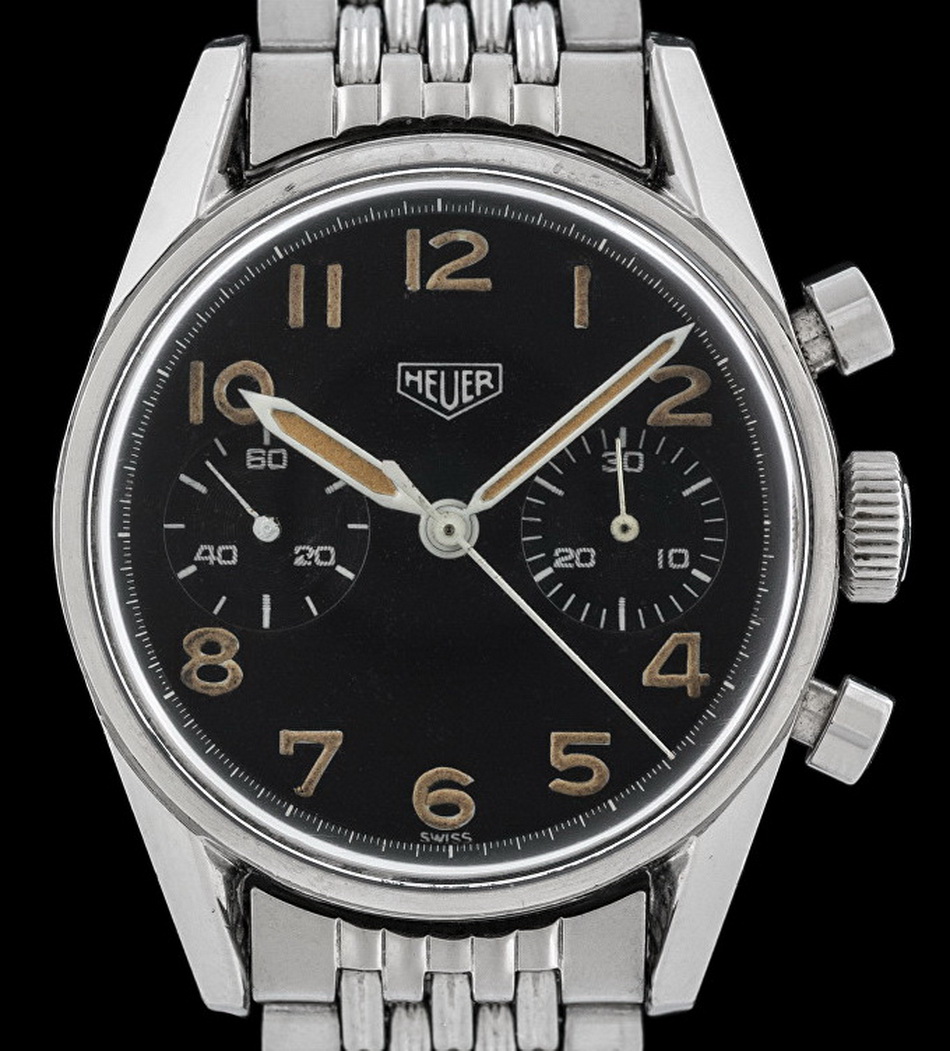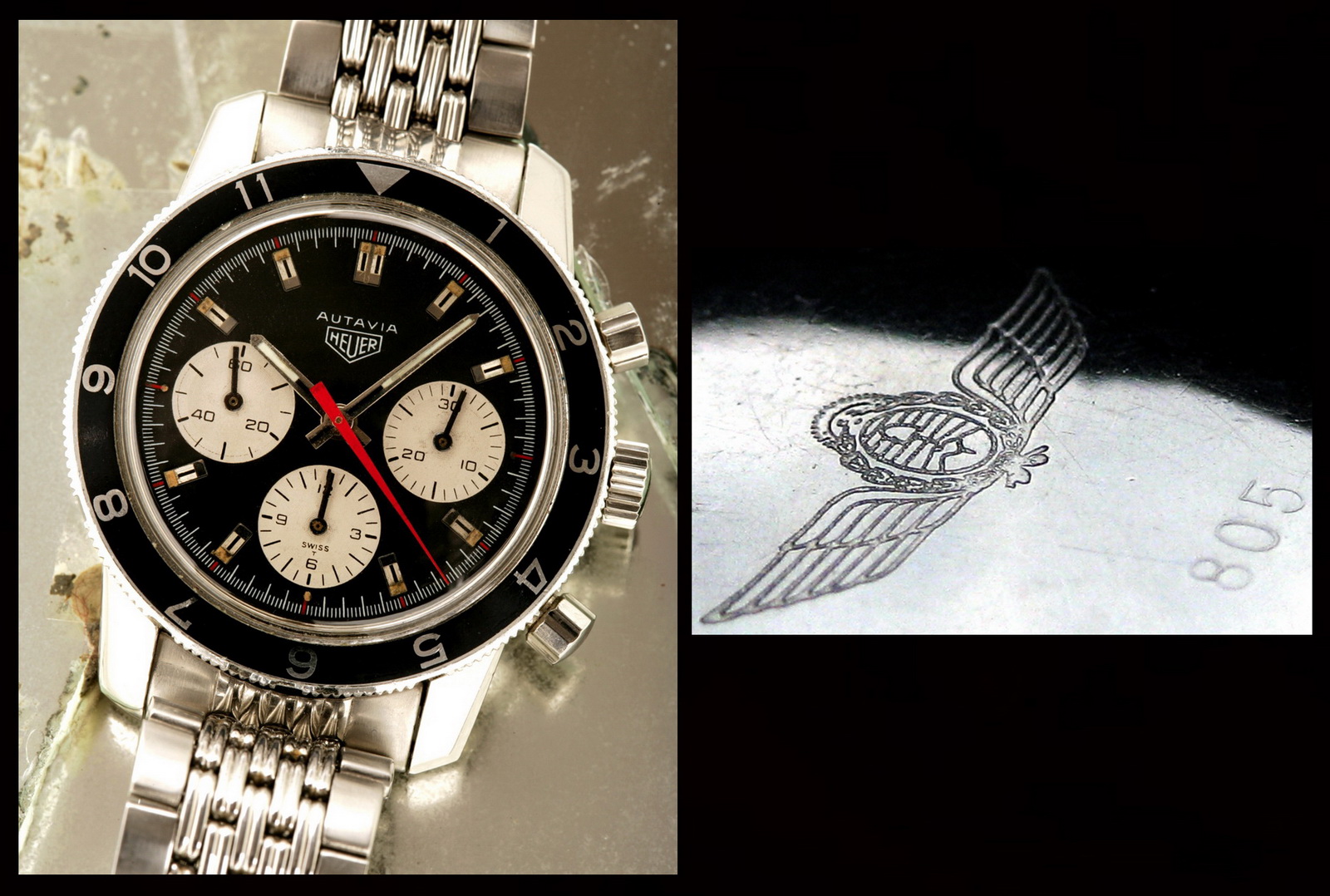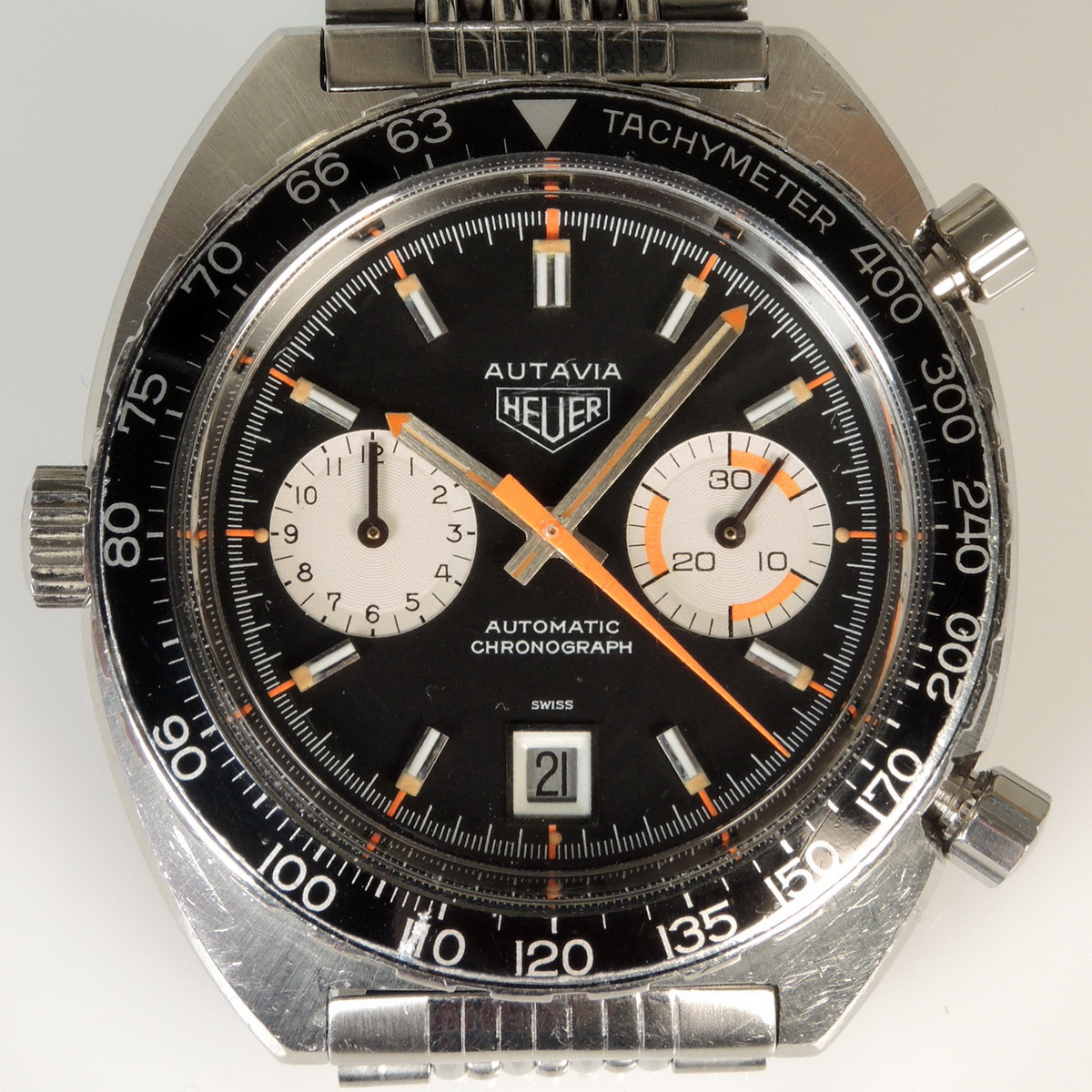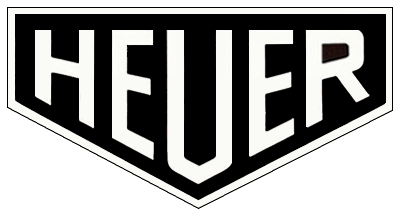I begin with a confession – I don’t really like referring to particular watches as “grails”. Different collectors seem to use the word “grail” in different ways, with some collectors having drawers full of them and others suggesting that a real grail is unattainable. Google the term “grail collecting”, and you will find yourself reading about the rarest and most precious baseball cards, video games and Star Wars memorabilia. For anything that can be collected, there seem to be “grails.” Add the term “watch” to the search and we find a simple definition from Tariq Malik, writing in Esquire — “a particular rare and high value vintage piece that is hugely coveted by collectors.” Others have described the grail watches as representing the pinnacles of collecting, or the ones that keep the collectors searching, day and night. Some describe them as being “unattainable”, so that we are left to admire them from afar.
In the world of collecting, the word “grail” is often used in a personal sense. Individual collectors talk about their personal grails, the watches (or Star Trek figures) that represent the ultimate dreams of their collecting passions. The definition becomes more important for purposes of this posting, however, as I am attempting to catalog the “grail” models, from the perspective of the community of vintage Heuer enthusiasts. After considerable thought and some conversations with other collectors, I come up with the following definition. For purposes of this posting, a vintage Heuer chronograph is considered a “grail” if it meets three criteria.
- First, the model must be extremely rare.
- Second, the watch must have a strong, broad following in the community.
- Third, the watch must be attainable by the enthusiastic collector.
Before turning to the watches, we’ll explore these three criteria.
A Rare Watch. The posting is about chasing the rarest and – in many instances — most valuable vintage Heuer chronographs. And when we say that these watches are “rare”, we really mean it. Of the 15 models that we cover, I estimate that there are only four models for which the diligent hunter is likely to find three or more samples on the market over the course of a year. For the other 11 models, you will do well to see one or two watches offered. I am not an expert in the markets for the grail watches of the other brands, but to me the vintage Heuer grails are really scarce. Granted that I am looking from a distance, and with apologies for a broad generalization, but it seems to me that there are a lot of the grail watches of other brands offered for sale each year. They may be very expensive, but they do seem to be more available on the market.
It’s this extreme scarcity that leads me to discuss alternatives for each of the “grails” that we cover. Yes, it’s the scarcity and certain unique features that endow these watches with their grail status, but if you don’t have the endurance (or budget) to persist in the search, in most instances there are reasonable substitutes that can be found, a lot sooner and a lot cheaper. Of course, you won’t be wearing the super rare watch that the collector covets, but at least on a physical level, you will have much of the experience of wearing the rare one. The standard “Siffert” Autavia Refernce 1163T may not have the word “Chronomatic” written across the top of the dial, but in almost all other respects it is physically identical to the rare model. Enjoy the more common model, and see whether there’s something good you can do with the $50,000 that you just saved. Who knows, you may be happier buying two or three additional watches, instead of the one grail.
That Has a Strong Following in the Community. The second criterion for “grail” status is that the watch must have a strong, broad following in the community of vintage Heuer collectors. Let’s take the example of the version of the Calculator chronograph, Reference 11633, that has the MH / pulsations bezels, rather than the slide rule bezels. Yes, these are very rare, but they are not the sort of watches that we would expect a large group of enthusiasts to bid on. They are rare and interesting, with some element of mystery, but they are not coveted by the broad community of collectors.
Looking at this criterion from another perspective, when a true “grail” watch is listed for sale, there will be a “buzz” in the vintage Heuer community. Facebook groups, discussion forums and text messages should “light up” quickly. We can expect the message, “Hey, did you see the Skipperrera listed on Chrono24?” as well as the question, “”Are the hands correct on that “Big Subs” Autavia?” This buzz or broad community interest is required for a watch to achieve grail status.
Attainable by the Enthusiastic Collector.
The third prong of my definition of a “grail” watch is that it must be “attainable”. My rule of thumb would be to include watches in this posting as “grails” if the diligent collector could reasonably expect to find one offered for sale, during a year or two of searching. Any vintage Heuer chronograph that does not meet this criteria is not included. Examples of the “unobtainable” might include the Autavia Reference 2446C with a silver / white dial, the Bundeswehr prototype chronograph, powered by the Calibre 12 movement, or the Autavia Reference 1163 with the orange dial. Of course, there are many more of these “unattainable” vintage Heuer chronographs.
For each of these models, over the last 15 years, we have seen fewer than five samples available for sale. If you want one of these, don’t wake up early or stay up late looking for the listing on eBay or Chrono24. Instead, contact one of the guys who owns the watch you want and begin offering “stupid money” for the watch. It probably won’t work, but that’s the best chance you’ll have of getting one of these.
Prices. Across this posting, we have not discussed the pricing of the grail models. The reason for this is simple – the market for these watches is extremely thin, and it is difficult to suggest “fair market values” for most of them. There just aren’t enough “comparable” sales in the market to be able to suggest a fair market value.
Take the Skipperrera for example. We have tracked sales or trades of eight of these watches over the last three years. In June 2018, two bidders battled for a nice one at a Bonhams auction, and we saw a sale at $107,000. Two years later, there are four of them available for sale, with the provenance and condition varying considerably, with asking prices from $55,000 to $110,000. So I am at a loss to suggest the current fair market value of a Skipperrera. It is not terribly helpful to say that the range is between $55,000 and $110,000, so we have avoided the discussion of prices in this posting.
The List — 16 Grails of the Vintage Heuer World
- Three Register, Black Chronograph, Waterproof — Ref 2447 N (1940s / 50s)
- Triple Calendar Chronograph, Waterproof – Ref 2547 (1940s / 50s)
- The “Big Subs” Autavias (1962)
- Abercrombie & Fitch Seafarer, in Carrera Case, Ref 2447 (1965)
- “Yachting” Carrera, Ref 2447 (1964)
- Black Tachymeter Carrera – Ref 2447 NT (1965)
- The Chronographs with Racing Logos
- The “Skipperrera” (1968)
- Autavia GMT – Screw-back Model (1968)
- Camaro 18 Karat Gold – Ref 7228
- Carrera, Three Register Panda – Ref 2447 SN (1968)
- The Chronomatics (1969)
- 18 Karat Gold Automatic Carrera – Ref 1158 (1969 to 1985)
- “Exotic” Autavia — Ref 1563 (1972)
- Yachting Carrera, Reference 1153 BN (1974)
- Monaco in Black-Coated Case (the “Dark Lord”) (1975)
Three Register, Black Chronograph, Waterproof — Ref 2447 N (1940s / 50s)
The Watch. Three register chronograph, Reference 2447, from the 1940s / 1950s, with black gilt dial.
Why It’s a Grail. Heuer added three-register chronographs to its line-up of two-register chronographs in around 1942. The three-register models included a variety of options — dials could be either white or black; cases could be either waterproof (screw-back) or non-waterproof (snap-back); dial and hands were either painted with radium or non-radioactive paint; and there were also choices of tachymeter and telemeter scales. Today, it’s the waterproof cases that attract the following, with the Reference 2447 series, powered by the Vajoux 72 movement, and the Reference 346 model, powered by the Valjoux 71 movement. Within this range of watches, the Reference 2447 with the black dial has become the grail. The Reference 2447 was the true “pre-Carrera”, with the case’s angular lugs foreshadowing those of the Carrera.
How Rare are They? You may see three or four of these offered per year, but the trick is finding one in “grail” condition. Black paint generally shows its ago more than white or silver, and the radium in the numerals and also on the hands can do real damage to the dial and hands.
The Next Best Thing. There are several ways to “step down” here. Switching from the black dial to the white dial will allow you more purchase opportunities, and the same goes from the move from waterproof (screw-back with round pushers) to non-waterproof (snap-back with square pushers). You can also look for two registers instead of three, although these also seem rare. Finally, most collectors will be happy having a nice black chronograph powered by the Valjoux 71, rather than the Valjoux 72. But the purist who wants to call it a “pre-Carrera” may want the Reference 2447, with the Valjoux 72.
Additional Photos. You can see more of these chronographs in our Galleries covering the Reference 2447 chronographs.
Triple Calendar Chronograph, Waterproof – Ref 2547 (1940s / 50s)
The Watch. Three register, triple calendar (day / date / month) chronograph from the 1940s, in a stainless steel waterproof case (screw-back with round pushers); Reference 2547.
Why It’s a Grail. Heuer began making the triple calendar chronographs in the early 1940s, with a broad variety of models in stainless steel, gold-plated and 14 or 18 karat gold cases. Almost all these chronographs have snap-back cases, with flat pushers (meaning that they are not waterproof). The “grail” among the triple calendar chronographs is the stainless steel model, in a waterproof case – screw-back with round pushers. Similar cases were used for the Reference 2447 chronographs, the predecessor of the Carrera. The Reference 2547 models were made with numerals and hands of either radium or gold-tone paint.
How Rare Are They? Expect to see one of these watches every two or three years.
The Next Best Thing. The frustrated enthusiast can go two directions here. If it’s the rock-solid waterproof case that you are after, sacrifice the triple calendar function and switch to a “simple” three register chronograph, with your choices being the Reference 346 (powered by the Valjoux 71) or the Reference 2447 (with the Valjoux 72 movement). If you are determined to find a Heuer triple calendar chronograph, you can move from a waterproof case to non-waterproof case, and have a good selection of cases (stainless steel to 18 karat gold) and colors.
A Word to the Wise. Several watch brands offered triple calendar chronographs in waterproof cases in the 1940s and 1950s. Beware of bad guys reprinting these dials with the Heuer name or using a genuine Heuer dial from a non-waterproof Heuer to “make” one of the waterproof Heuers.
Additional Photos. See our Galleries of the triple calendar chronographs from the 1940s HERE.
The “Big Subs” Autavias (1962)
The Watches. The very first Autavia chronographs had larger registers than all the later models, and the hands of these first models were also unique – dauphine hands, with the first execution being all lume and the second execution being metal-edged with lume in the center. Reference 2446 was the three register model and Reference 3646 was the two register model, giving us four choices of the “Big Subs” Autavias.
Why They are Grails. From 1962 to 1985, Heuer produced over 80 models and executions of the Autavia, but many collectors would say that they “got it right the first time”. There is something magical about the first Autavias, with the larger registers, dauphine hands, wider bezels and chamfered lugs. The lines and proportions are just right. These are screw-back cases, with round pushers, marked to indicate that they are guaranteed waterproof to 330 feet (100 meters). Add the fact that the Autavia was the first model introduced by Heuer that had a model name, rather than only a reference number, and the early Autavias become one of Heuer’s most collectible watches.
How Rare are They? Compared with most of the other watches that we cover in this posting, the diligent collector with a good bankroll will actually have a decent chance of landing one of these watches. Counting both the two and three register models, and the first and second execution hands, we probably see 10 to 15 of these over the course of a year. Condition varies significantly, however, as the lume hands can disintegrate and the bezels tend to catch a lot of scratches.
The Next Best Thing. The “Big Subs” Autavias are the ones that people are chasing, but some vintage Heuer fans believe that the second dials used on the Autavias were more beautiful than the first ones. The registers were smaller and balance nicely with the lume dots and applied markers that mark the hours. The good news – the second execution dial models may be less expensive than the first ones. The bad news – the second execution Autavis seem to be more scarce than the first execution models.
Additional Photos and Information. OnTheDash Galleries for the 1960s Autavias are HERE. Be sure to see our In-Depth Look at the Early Autavias and The Collector’s Guide to the Heuer Autavia.
Abercrombie & Fitch Seafarer, in Carrera Case, Ref 2447 (1965)
The Watch. Abercrombie & Fitch Seafarer in the same case as was used for the first execution Carrera Reference 2447.
Why It’s a Grail. In the 1940s and 1950s, Abercrombie & Fitch was a high-end outfitter for adventurers. The stores in New York and Chicago were destinations for well-heeled gentlemen being outfitted for adventures such as fishing, sports car rallies, mountain climbing or hunting. Heuer made watches for Abercrombie & Fitch, always the most rugged models in the Heuer catalog. Abercrombie collaborated with Heuer to develop innovative complications, for example the Solunar (to show the high and low tides) and the Auto-Graph (to show speed over a measured distance). In 1950, Heuer designed the Seafarer, a special chronograph for Abercrombie’s beach and fishing enthusiasts, featuring a dial to show the high and low tides each day, which could also be set to show the moon phase. The Seafarer never had a case of its own, but instead occupied the cases used for other Heuer chronographs, from the Reference 346 in the early 1950s through the Reference 2446C in the 1970s. Circa 1965, the Seafarer used the same case as the Carrera Reference 2447, and this is the one cherished by collectors. The tide dial and chronograph minute recorder feature vibrant blue segments and the dauphine hands have thin lume inserts, different from the stick hands on a standard Carrera.
How Rare are They? One average, we see one or two of these per year.
The Next Best Thing. The good news here is that there are several versions of the Seafarer that you can add to your search list. There were three cases used for the Seafarer before the Reference 2447 (including the Reference 346, the Reference 2443, and the Reference 2444), and the Seafarer moved to the Reference 2446C (compressor) case in the late 1960s. Around 1970, Heuer began making the Orvis Solunagraph, housed in the Autavia Reference 2446C case. Any of these models will offer the tide dial complication and be less expensive than the Seafarer in the Carrera case. If it’s the blue accents on the silver / white dial that you like on the Reference 2447 Seafarer, you might like the look of the predecessor Reference 2444 Seafarer (shown below). The dial and hands will be the same, with the case having more rounded lugs and smaller pushers.
Additional Photos and Information. OnTheDash Gallery is HERE. See our posting, The Definitive History of the Abercrombie & Fitch Seafarer Chronograph.
“Yachting” Carrera, Ref 2447 (1964)
The Watch. A special order version of the three-register Carrera Reference 2447, first execution, with alternating blue and white sectors on the minute recorder.
Why It’s a Grail. The first execution of the three register Carreras are considered one of the purest examples of chronograph design. The dial has no scales or extra markings, the minutes (and one fifth seconds) are marked only on the inner tension ring, and the hands and markers on the dial are simple and thin. The first Reference 2447 Carrera were offered with black or white dials, but there was a unique model, available only by special order, for the yachting crowd. This model featured alternating blue and white segments on the minute recorder, with each segment marking five minutes. The yacht racer would use these five minute segments to count down to the start of a race.
How Rare are They? The Yachting Carrera is another of the “one sample per year” club. If you want one, and you see one, grab it. It’s difficult to predict when you will see the next one.
The Next Best Thing. There was only one version of the Yachting Carrera, but we can find other vintage Heuer chronographs that offer the blue and white segments on the minute recorder. Your best bet – the Abercrombie & Fitch Seafarer, Reference 2444. If it’s the white Carrera that you are after, take your pick of early models with either egg shell or brushed silver dials.
Black Tachymeter Carrera – Ref 2447 NT (1965)
The Watch. A three-register Carrera Reference 2447 with a black dial, black registers and a tachymeter scale printed around the edge of the dial.
Why It’s a Grail. While the premise of the Carrera was that all decoration and “extra” scales had been removed, there is something special about the tachymeter scale. Just ask the folks who collect the Rolex Daytonas and Omega Speedmasters. While there were tachymeter scales on the Carreras almost from the start, Heuer got it right when it put the white scale around the edge of the all-black dial, circa 1965.
How Rare are They? Expect to see one of these for sale every year or two.
The Next Best Thing. The three register model is the grail, but Heuer also put the white tachymeter scale around the edge of the two-register Carrera (Reference 3647 NT). The two register model won’t be much easier to find, but it may be a bit less expensive than the three register model. Another option is the re-issue released by TAG Heuer in November 2018, designed by streetwear legend Hiroshi Fujiwara (Fragment Design). This is a three register model, powered the Heuer 02 movement, produced in a limited edition of 500 watches. The Limited Edition sold out, but you can find them in the after-market at around the original price.
The Chronographs with Racing Logos
The Watches. In the mid-to-late 1960s, Heuer produced chronographs with logos on the dials for brands connected to motorsports. Among these racing-related logos are ones for the Indianapolis Motor Speedway (Autavia and Carrera 45 Dato), Shelby Cobra (Carrera 45 Dato), Mercury Cougar (Carrera 45 Dato), and Sunray DX (Carrera 45).
Why They are Grails. The Heuer brand had a deep connection to motorsports in the 1960s and 1970s, with many of the leading racers, teams and event sponsors using Heuer chronographs and other timing equipment. While it sometimes takes some research to spot the racer or team member wearing the Heuer chronograph, the racing connection gets a lot easier when the name or logo is printed right on the dial. There are many different stories about how the team, event, venue or brand came to put the logo on the dial, but the most cherished of these logos will result in a chronograph selling at a big premium to the standard production models. The Indianapolis Motor Speedway and Shelby Cobra logos are at the top of the food chain, but there are probably 10 or 12 racing or auto-related logos to pursue. Racing teams include Sunray DX and Mercury Cougar; auto makers included Volvo and MG; parts supplier “Champion” appeared on several models; events include a variety of stock car and amateur racing championships; and don’t forget the “Prancing Horse” on dashboard timers. Aircraft enthusiasts will find Calculator chronographs with the Beechcraft logo.
How Rare are They? There are some of the logos that we have seen only in single samples (Sunray DX and Mercury Cougar), while others appear fairly frequently (Champion).
A Word to the Wise. The vintage Heuer community has seen numerous loose dials, left over from the original production, that have been made into watches, using other spare parts. You will be paying a real premium for a Heuer chronograph with a racing logo, and will do well to explore the provenance of the watch.
The Next Best Thing – The most coveted of the Heuer chronographs are the ones with connections to the racing teams, as shown above, but there are other interesting logos that appeared on the Heuer dials. Consider models showing the logos of Audi Sport, Volvo, MG and Champion.
Additional Photos and Information. See the OnTheDash page covering the chronographs with logos HERE.
The “Skipperrera” (1968)
The Watch. The first execution of the Skipper chronograph, Reference 7754, which is housed in the same case as the Carrera Reference 7753. This version of the Skipper is known to collectors as the “Skipperrera”.
Why It’s a Grail. Heuer had a long tradition in yacht timing, and in 1967 supplied the timing gear for the yacht Intrepid when it successfully defended the America’s Cup, off Newport, Rhode Island. The celebrate the victory, Heuer introduced an entirely new chronograph, the Skipper. With a 15-minute recorder to count-down to the start of a race, and bright blue, orange and green colors matching those of the Intrepid, the Skipper was built for yacht racing. This first Skipper was housed in the case used for the Reference 7753 Carrera and the Valjoux 7730 was modified to go from 30 minute capacity to 15 minute capacity. All subsequent versions of the Skipper would be housed in cases used for the Autavia. The America’s Cup connection, wild color scheme, and Carrera connection combine to make the “Skipperrera” one of the vintage Heuers most coveted by collectors.
How Rare are They? The diligent collector will be lucky to come across one or two of these Skipperreras offered for sale each year.
The Next Best Thing. There’s nothing else in the vintage Heuer catalog that has the crazy look of the Skipperrera. To get these colors, consider the limited edition re-issue from 2017, created in a collaboration with Hodinkee. The 125 pieces sold out quickly, but you can catch them for sale from time to time. Alternatively, if you like the size and fit of the manual-wind, two register Carreras, consider the Reference 7753 Carrera. You can have either solid white or solid black dials, or go with the contrasting registers (like Matt Damon, in Ford v Ferrari).
Additional Information / Photos. OnTheDash Gallery is HERE. See our article, The Voyage of the Skipper. There is also a posting on Hodinkee that covers both the vintage model and the Hodinkee re-issue. For a website dedicated to the yachting chronographs and stopwatches, visit HeuerChrono.com and see the posting there, The Story of the Heuer Skipper. This website also includes a Gallery showing various samples of the Skipperrera.
Autavia GMT – Screw-back Model (1968)
The Watch. Autavia GMT, in the Reference 2446 screw-back case.
Why It’s a Grail. Heuer introduced its first GMT chronograph circa 1968, adding a GMT hand and red / blue bezel to the Reference 2446 (“Rindt”) model of the Autavia. This first model used a screw-back case, but after a short run, the Autavia GMT moved to a compressor (snap-back) case. The Autavia GMT continued in production for almost two decades, with almost a dozen models along the way, but none of them captured the elegant style of this first screw-back case. Once again, Heuer got it right the first time.
How Rare are They? The diligent collector will be lucky to come across one of these offered for sale every couple of years.
The Next Best Thing. The Autavia GMTs with compressor cases (Reference 2446C) will offer the functions and color scheme of the screw-back models, at a fraction of the price. But if you are after the elegant shape of the Autavia screw-back case, then you will have to ditch the GMT function and be happy with a Rindt Autavia.
Additional Photos. OnTheDash Gallery is HERE.
Camaro 18 Karat Gold – Ref 7228
The Watch. Heuer offered two 18 karat gold versions of the Camaro Reference 7228, both three register models with champagne dials. The more common version has a champagne dial and registers, with no scale on the dial; the rare version has a tachymeter scale printed on the dial.
Why It’s a Grail. The Camaro has always been the red-headed stepchild of the vintage Heuer family. It was introduced in 1968, but was left at the alter when Heuer transitioned to automatic chronographs the following year (i.e., Heuer went with automatic versions of the “Big Three” (Autavia, Carrera and Monaco), while the Camaro slowly receded from view). It’s an unusual shape – not round, not square, not C-shape . . . maybe cushion-shaped, but maybe not. Still, the Camaros have a dedicated following of enthusiasts, with the “exotic” models being at the top of the usual Camaro pyramid. But I am going a different direction, because collectors who have seen the 18 karat gold Camaro “in the metal” will often come away believing that they have seen something special. The Camaro fits well on the wrist, and in gold it takes on the feel of a special medallion.
How Rare Are They? Over the last decade, I can recall five or six of these coming onto the market. If you want one, and see the right one for sale, grab it. It’s not smart to wait for the next one.
The Next Best Thing. If you like the size and shape of the Camaro, then the only watch you will want will be a Camaro. There are several great choices, if the 18 karat gold model doesn’t appeal to you. One of the most coveted Camaros is the three-register, charcoal gray model, with the red tachymeter scale on the dial (Reference 73643 NT, shown below). There are also several “exotic” models, with contrasting registers, that will give you the racing look (Reference 73443T is shown below). If you are committed to a gold Camaro, then there are several choices in gold-plated models. These will give you the look of the 18 KG model, even if not the feel of the 18 karat gold.
Additional Photos and Information. OnTheDash Gallery is HERE. See the new website dedicated to the Heuer Camaros, HeuerCamaro.com.
Carrera, Three Register Panda – Ref 2447 SN (1968)
The Watch. The second execution of the three-register Carrera (Reference 2447) was offered in a “Panda” style, with a white dial and black registers (giving it the SN designation).
Why It’s a Grail. For the first generation of Carreras (1963 to 1967), the ones with white dials had white registers and the models with black dials had black registers. With the second generation models, introduced around 1968, Heuer offered contrasting registers – black registers on the white dials and white registers on the black dials. As with the first generation Carreras, there were also executions with the tachymeter scale printed on the dial. On the Reference 2447 SN, the black registers are larger than on the other models, giving the model an especially dramatic style.
How Rare are They? This is getting a bit repetitious, but the facts are the facts – the vintage Heuer enthusiast can expect to find one or two of the Reference 2447 SN Carreras, in a year of diligent searching.
The Next Best Thing. I have included the Reference 2447 SN as one of the grails, but some would suggest that the Reference 2447 NS belongs on the list, as well as the versions with Tachymeter scales on the dials (Reference 2447 NST). Indeed, there is a good case that all these Reference 2447 Carreras with contrasting registers make the list of “grails”. Looking beyond this group of watches, another alternative to the Reference 2447 SN is the Reference 7753 SN, offering the same “Panda” look, in a two-register model. This was the watch worn by Matt Damon, as Carroll Shelby, in the movie Ford v Ferrari.
The Chronomatics (1969)
The Watches. Heuer used the name “Chronomatic” on five versions of the automatic chronographs that it introduced in 1969 – two Autavias (one with a black dial and one with a white dial); two Carreras (one in a stainless steel case and one in an 18 karat gold case); and one Monaco (midnight blue).
Why They are Grails. Heuer led the joint venture — with Breitling, Hamilton-Buren and Dubois Depraz – that developed the first automatic chronographs to be offered in retail channels around the world. Introduced in Summer 1969, the very first samples made by Heuer had the name “Chronomatic” printed with the Heuer shield across the top of the dial, with the model name written below (Autavia, Carrera or Monaco). Heuer quickly discontinued the use of the “Chronomatic” name, as customers in the large U.S. market did not see the name “Chronomatic” as indicating that the watch was an automatic chronograph. Accordingly, the later, standard production models had the model name with the Heuer shield across the top of the dial, with “Automatic Chronograph” printed across the bottom.
How Rare are They? Over my years of collecting vintage Heuer chronographs, we have probably seen approximately 25 “Chronomatic” chronographs. Most common are the white-dialed Autavia Chronomatic and the midnight blue Monaco Chronomatic, with eight to ten samples of each being seen. Rarest are the Carreras, either a stainless steel model with a dark gray dial or an 18 karat gold with a silver / white dial, and the Autavia with a black dial.
The Next Best Thing – Even the most diligent collector can’t expect to find a Heuer “Chronomatic” during a year or two of searching. The best alternatives will include the earliest models that were produced immediately after the “Chronomatics” – Autavias with either black or white dials and Carreras with charcoal gray dials and white registers. The “Transitional” Monaco features the same midnight blue dial and square-ended hands as the Chronomatic Monaco; with any luck, you might find three or four of these offered during the course of a year.
Additional Photos and Information. For the history of the Chronomatics and a bibliography, see The Chronomatic Reader — An Overview of the Watches and a Bibliography. For the story of the first Chronomatic watches introduced by Heuer and Breitling, see the Hodinkee posting, How Heuer, Breitling, And Hamilton Brought The Automatic Chronograph To The World 50 Years Ago
18 Karat Gold Automatic Carrera — Ref 1158 (1969 to 1985)
The Watches. From around 1970 into the early 1980s, Heuer offered the automatic Carrera in an 18 karat gold case (Reference 1158). Over the years, there were eight different models, with dials in silver or champagne, and contrasting black registers on some versions of the champagne dial.
Why They are Grails. As part of the sponsorship arrangement between Heuer and the Ferrari formula one racing team, Jack Heuer presented each Ferrari driver with one of these 18 karat gold Carreras. So we see them on the wrists of Andretti, Reggazoni, Lauda and Villeneuve, as well as various team owners and managers. And don’t forget the “friends” of Jack who also wore them – Siffert, Peterson and Fittipaldi. These were the only 18 karat gold chronographs offered by Heuer in the 1970s, and these C-shape cases were huge lumps of gold. The case of the watch weighed 48 grams and the Milanese mesh bracelet added another 73 grams, for a total weight of 121 grams. The Reference 1158 Carreras have the feel of being a “club watch” among vintage Heuer collectors. If you own one, you are a member of the club. If not, then you’re not.
How Rare are They? The ones with the silver/white or champagne dials are easiest to find, with several being offered each year. The models with a champagne dial and black registers are more rare, especially the earlier version, which has a black date disc. This is the grail of all the Reference 1158 grails.
The Next Best Thing. Heuer made gold-plated Carreras in the 1970s, with the same style C-shape cases as the Reference 1158 models, but these are not a good substitute for the 18 karat gold watches. A better choice might be the 18 karat gold Carrera from the 1960s (Reference 2456). These are manual-wind Carreras powered by the Valjoux 72 movement. They are more scarce than the automatic models, but sell at a discount compared with most of the 18 karat gold automatic models.
“Exotic” Autavia, Ref 1563 (1972)
The Watch. Autavia, Reference 1563, with the “exotic”dial.
Why It’s a Grail. From the introduction of its automatic chronographs in 1969, Heuer struggled with the fact that these watches were relatively expensive, compared with other chronographs in the market. In order to offer lower-priced models, Heuer had the Calibre 12 movement (with its 12 hour capacity) modified to become the Calibre 15 movement (which deleted the hour recorder and included other modifications that would reduce the price of the watch. The Calibre 15 chronographs were introduced in 1972, with new models of the Autavia, Carrera and Monaco. While the Monaco had been the most daring of the automatic chronographs, a new model of the Calibre 15 Autavia gave the Monaco a run for its money, perhaps being the most “different” model ever made by Heuer. The case was standard fare for the Autavia, but the dial departed radically from all the previous models. The markers are painted lume rectangles, the minute recorder has a bright orange stripe around the left side, and the running seconds recorder uses crosshairs. The hashmarks for the 1/5 seconds incorporate an alternating grid design, adding a racing theme to the watch.
How Rare are They? The diligent collector trying to find an “Exotic” Autavia can hope to find a couple of samples, over the course of a year.
The Next Best Thing. One thing for sure — there is no other Autavia that will give you the vibe of the Exotic, Reference 1563. It this is the look you are after, but have grown weary of the search, have a look at some of the other models that Heuer added to its catalog in this period. The Temporada, from 1971, offers funky-shaped registers, with some interesting dial colors, in a monocoque fiberglass case. For a different type of walk on the wild side, have a look at the Calibre 12 Montreals (introduced in 1972), which offer an outrageous lump of metal for the case and some bright colors for the dials and hands.
Additional Photos. The OnTheDash Gallery for the “Exotic” Autavia is HERE.
Automatic Carrera “Yachting”, Ref 1153 BN (1974)
The Watch. Carrera Reference 1153 BN, known to collectors as the “Yachting” Carrera.
Why It’s a Grail. The Reference 1153 automatic Carreras, and their companion manual-winding models, are generally a tame group. They use the C-shape cases, silver or gray dials in the stainless steel cases, and champagne dials in the gold-plated cases. All fairly conventional stuff. But the same way that Heuer cut loose with the “Exotic” Autavia, the style of the Reference 1153 BN breaks with the quiet tradition of the automatic Carreras. Fat pencil hands, deep blue dial, black registers with orange accents. Compare this “Yachting” Carrera from the mid-1970s with the “Yachting” Carrera from the mid-1960s, and you will see just how far the design of chronographs had moved. You can also watch the progression of Heuers with deep blue dials, from the Skipperrera (1968), to the Monaco (1969), to the Yachting (1974). One observation — getting the blue dials to stay blue remained a challenge.
How Rare are They? The diligent collector could expect to see two or three of these offered for sale each year. The challenge will be finding one of these with a dial that you like. We see these dials range from near mint condition, with brilliant colors, to heavily distressed / tropical.
The Next Best Thing. As with the “Exotic” Autavia, we have moved into the funky style of the 1970s. Consider the Carrera Reference 1553 N (shown bel0w); the style of the blue paint is very different from the Yachting Carrera, but you will get the “fat pencil” hands and may enjoy the asymmetry and metallic gray paint of the minute recorder.
Additional Photos. The OnTheDash Gallery for these Yachting Carreras is HERE.
Monaco in Black-Coated Case (the “Dark Lord”) (1975)
The Watch. The Monaco Reference 74033 N chronograph has a black-coated case, with a black dial and registers, painted white hands for the time of day (hours and minutes), and bright orange hands for the chronograph (hours, minutes and seconds).
Why It’s a Grail. The vintage Monacos are popular now, but when they were first being sold in the early 1970s, the watches didn’t attract much of a following. In the mid-1970s, with time running out on the model, Heuer tried to develop a Monaco with a black-coated case as a “Hail Mary” for the Monaco. The black-coated case was on trend with the “military look” that was emerging in the period, but this model would not be the savior that the company was hoping for. The model never went into full production, the usual explanation being that Heuer was unsuccessful in getting the black coating to adhere to the sharp-edges of the case. The Reference 74033 N was never included in a Heuer catalog, and there are mysterious stories of parts and partially-assembled watches appearing in remote corners of the world. To add to the mystery, there is even a typo in the reference number marked on the case, with “740303” appearing on what should be the 74033. Notwithstanding this tortured history, put a nice Monaco 74033 N on your wrist, and you will see a unique combination of vintage mystique and a look that remains modern, 45 years later.
How Rare are They? Search every day and in a good year you might see two or three of them offered for sale. Condition varies significantly, as the black coating proved to be fragile and the lume markers painted on the dial often disintegrated.
The Next Best Thing. There’s really nothing quite like the Dark Lord, but have a look at the stainless steel Monaco with the dark gray dial (Reference 73633) if you get tired of the search.
Additional Photos. The OnTheDash Gallery for the Monaco Reference 74033N (“Dark Lord”) is HERE.
Honorable Mention — Maybe Grails or Maybe Not
Triple Calendar, Moon Phase Chronograph (1940s)— These are great watches, but they don’t seem to have the broad following that we expect for a “grail” watch. If a nice one was listed for sale, how many members of the community would be bidding on it? See them HERE.
Autavia with Tachymeter Scale on the Dial, Ref 2446 or 3646 (mid-1960s) — Once upon a time, this might have been counted among the grails. In the last few years, however, we have seen too many of these offered for sale, with too many whispers that the watches have been made from supplies of loose dials. Great looking watches, but explore the provenance to be certain that the watch had the special dial when it left the factory. All the ones made over the last few years have hurt the market. Have a look at the three register model or the two register model.
Carrera for Belgian Air Force, Ref 7753 (1970) — This great looking watch is right on the border line of being a “grail”, but it may not have a wide enough following to have that status. It’s got a distinctive look and a military connection, so some would call it a “grail”. See them HERE.
Autavias for the Argentine Air Force (1970) — There were several models of the Heuer Autavia issued to members of the Argentine Air Force (Fuerza Aérea Argentina or simply “FAA”). Most common are the Autavia Reference 2446C, as well as several of the later automatic Autavias.
“Orange Boy” Autavia, Ref 1163 (1972) — These are identical to the “Viceroy” Autavias, except that the red accents of the “Viceroy” are deep orange on the “Orange Boy”. Definitely borderline of being a “grail”, but it feels as though recently there has been some lack of enthusiasm for the watches. See the Orange Boys HERE.
“McQueen” Monaco, Ref 1133B (1970) — Yes, we see plenty of these offered for sale, but it’s difficult to find a really nice one. Many of them have damage to the dial or the case. When you do find a nice one, it can be expensive. Still, the McQueen Monaco just didn’t feel rare enough to earn the “grail” designation. Being one of the ultimate “icons” does not make it a “grail”. See the McQueen Monacos HERE.
Thanks / Comments / Suggestions
Thanks to all the members of the collecting community who contributed ideas about the vintage Heuer “grails”, as well as their amazing photographs of these chronographs. We will be interested to hear other collectors’ views as to the watches they consider to be the “grails”. Of course, we each have our own personal “grails”, and it will be interested to hear about our members’ “Most Wanted” watches.
According to the legends, the Holy Grail had the power heal all wounds, deliver eternal youth and grant everlasting happiness. Whatever your grail watch may be, we hope that both the search and the acquisition will bring you these blessings.
Jeff Stein
May 14, 2020
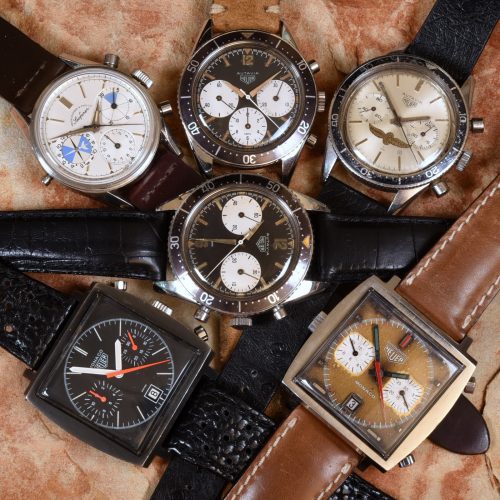
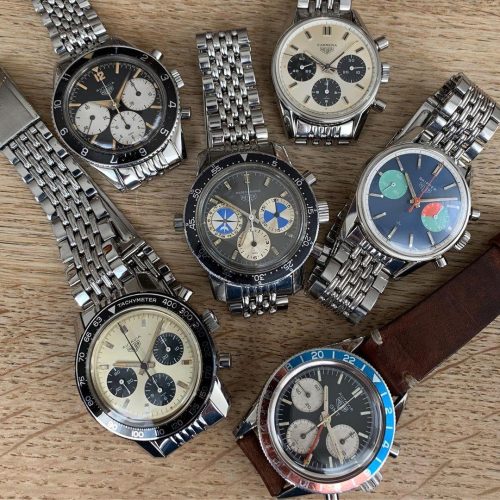
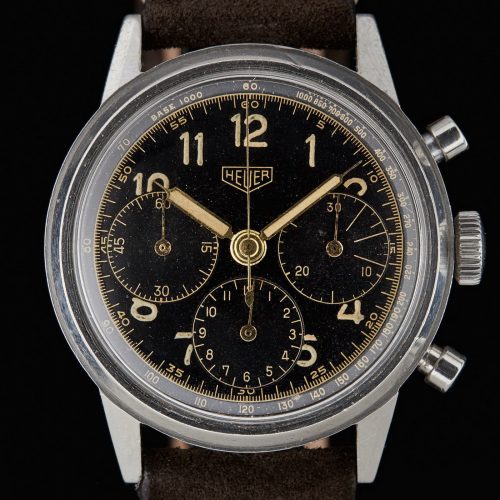
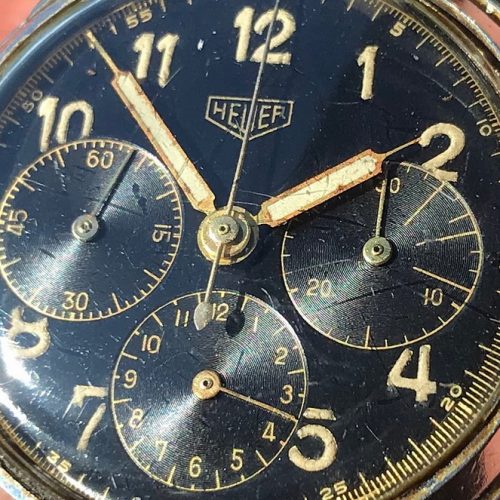
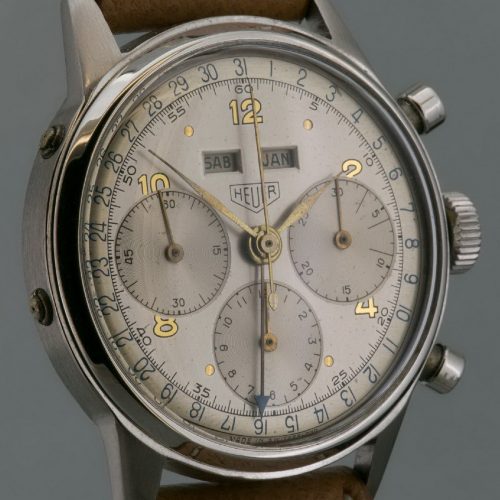
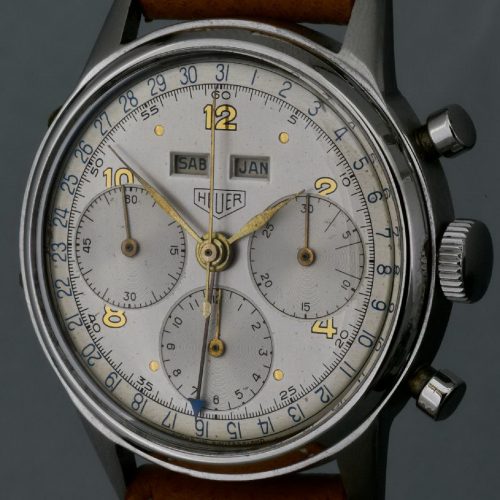
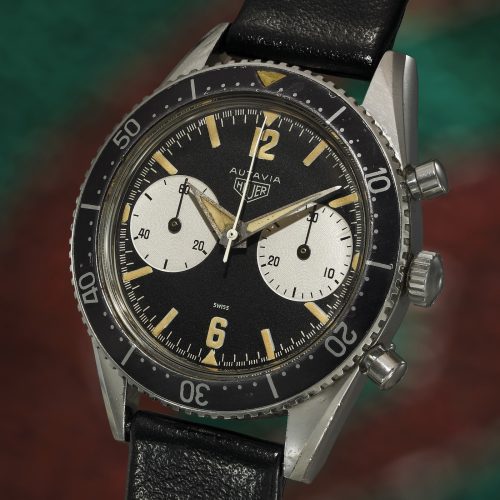
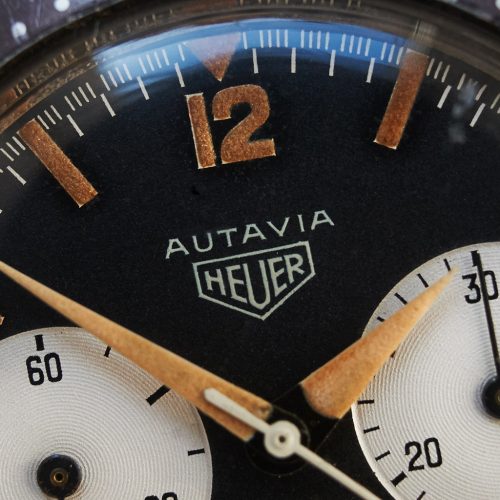
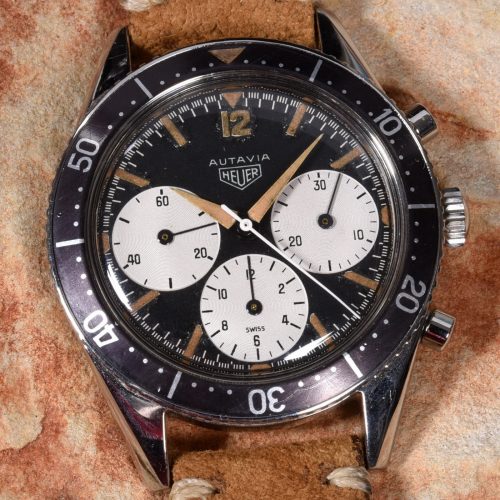
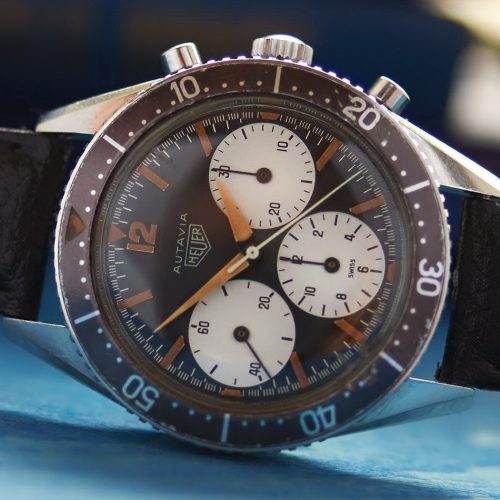
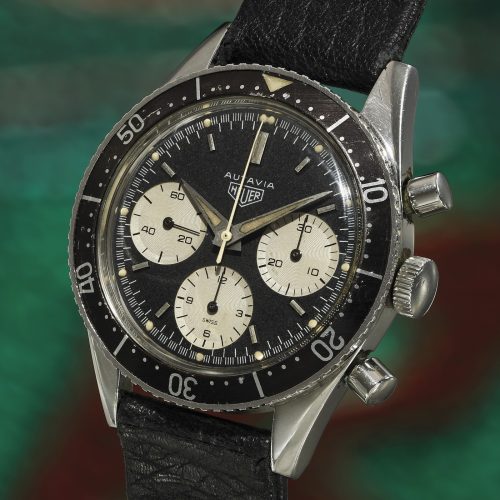
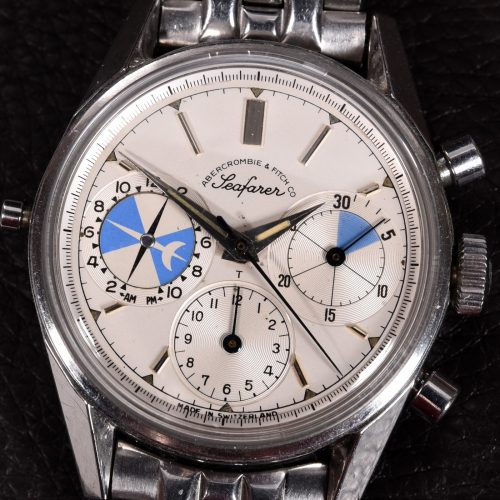
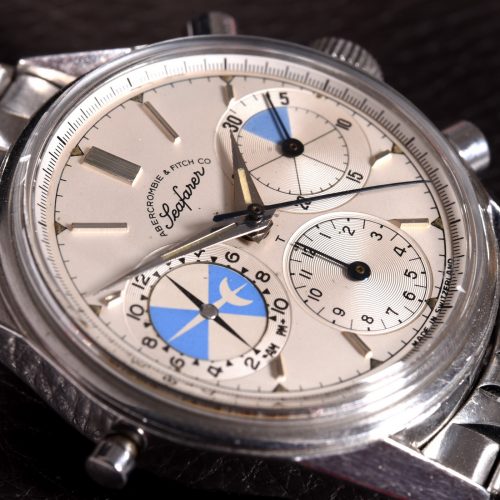
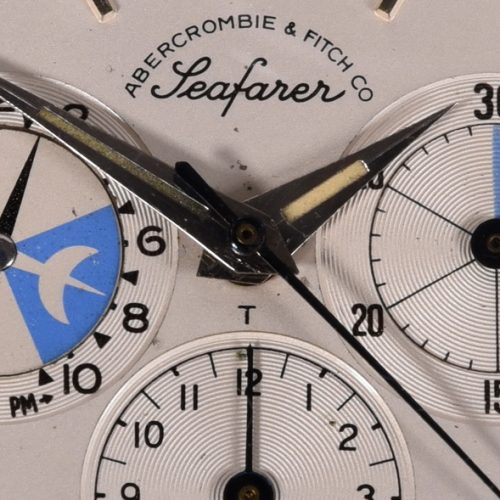
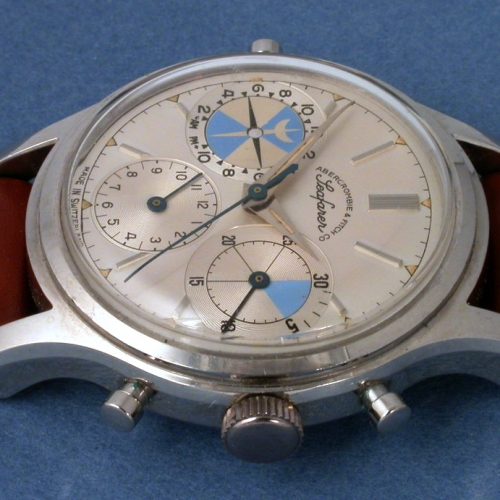
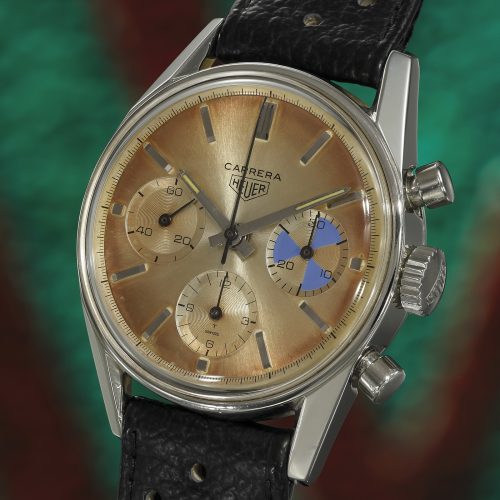
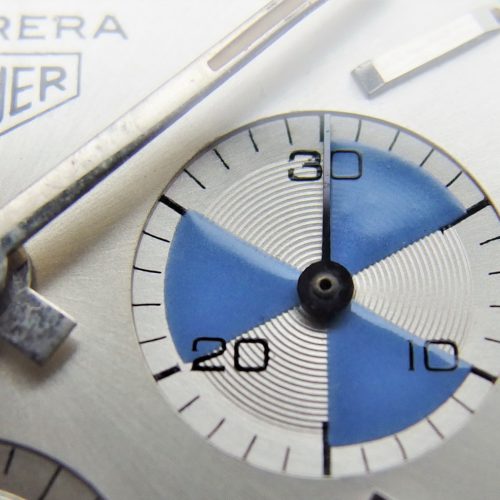
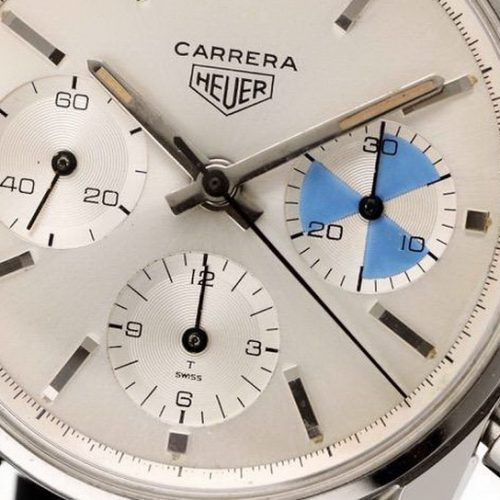
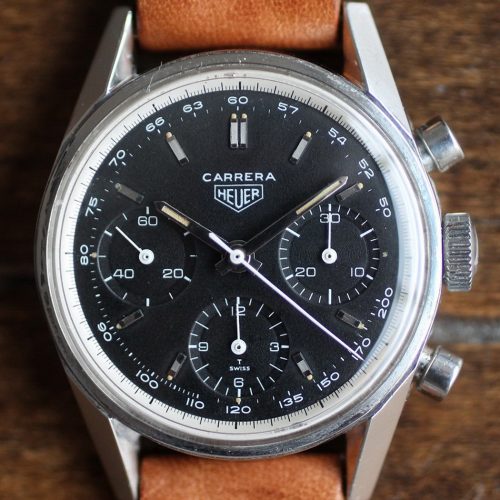
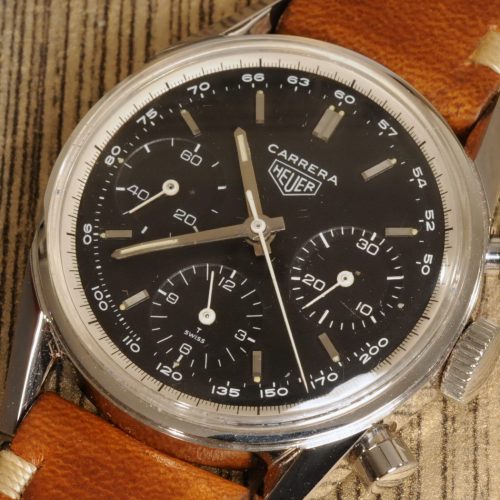
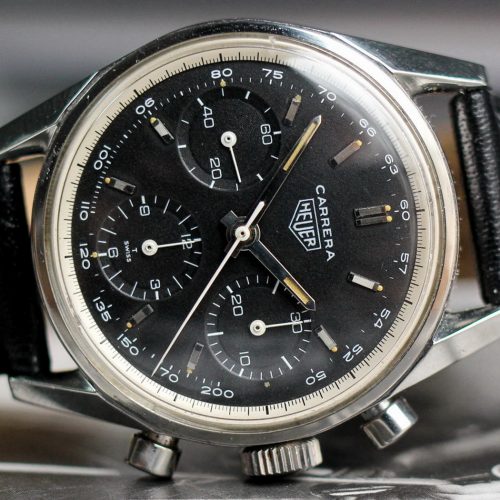
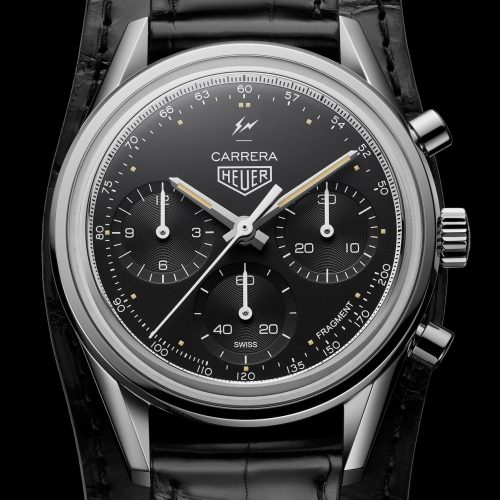
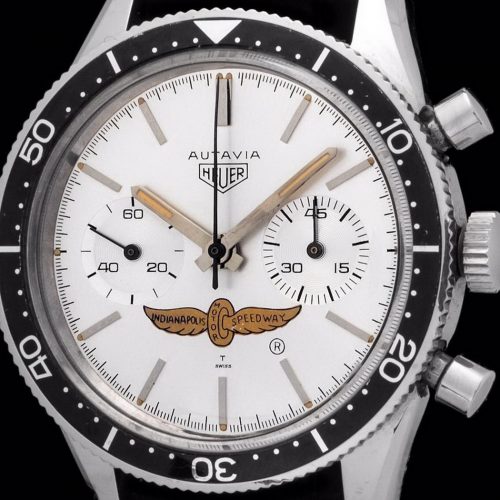
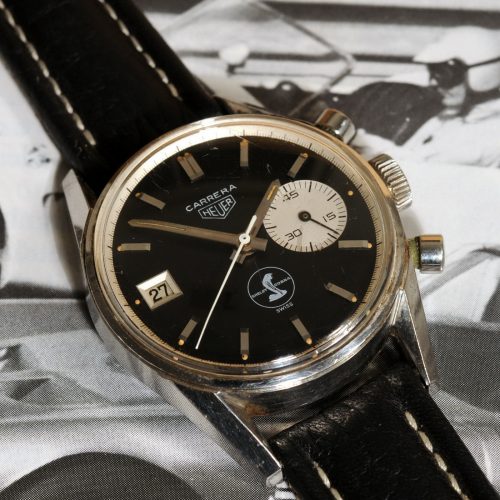
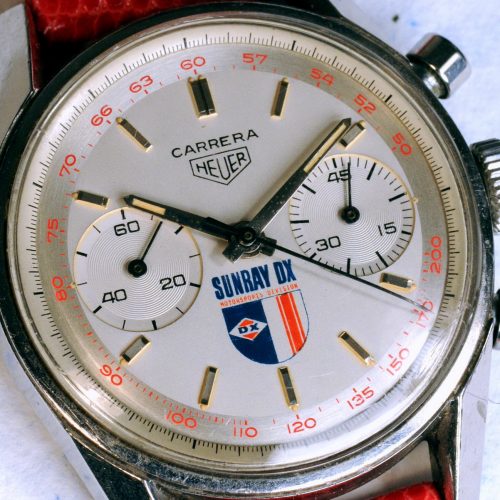
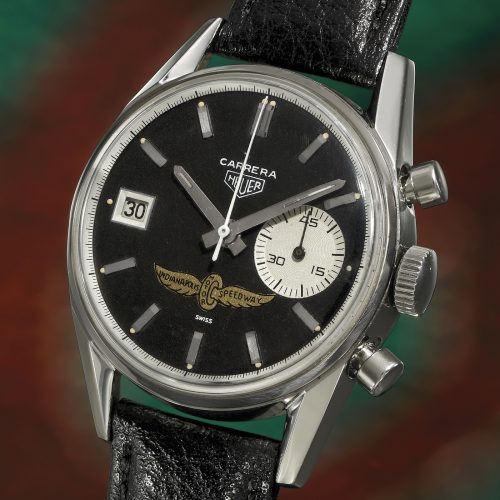
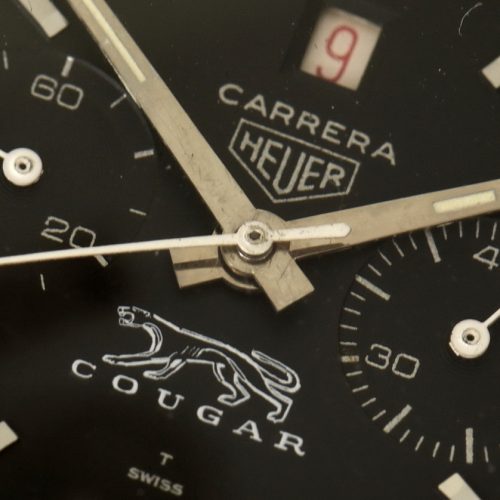
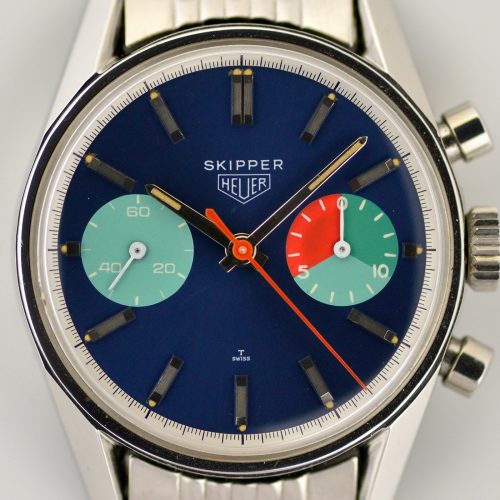
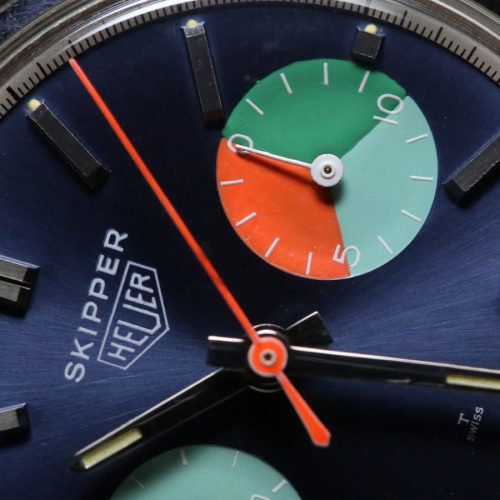
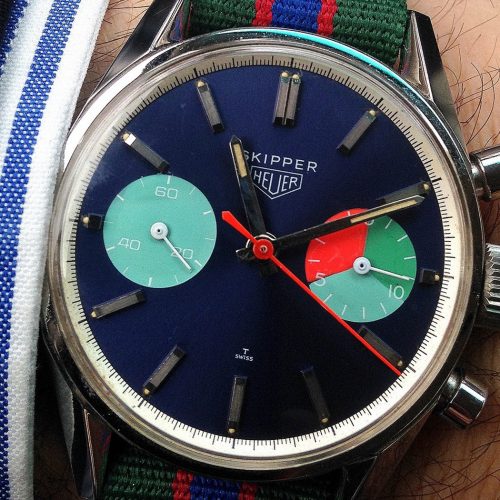
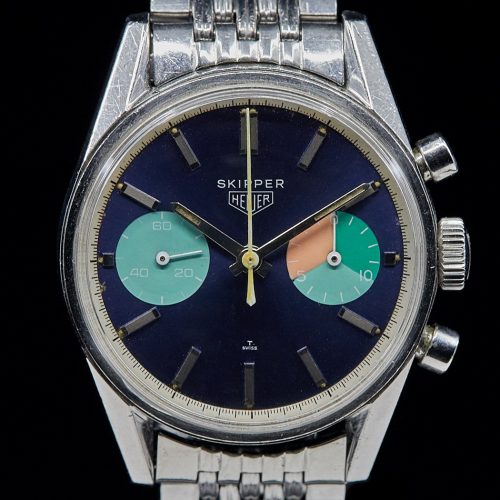
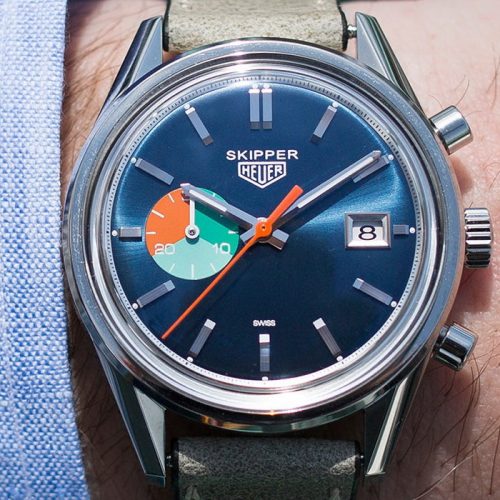
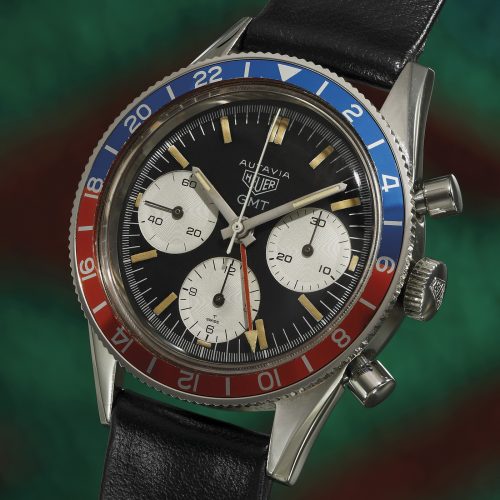
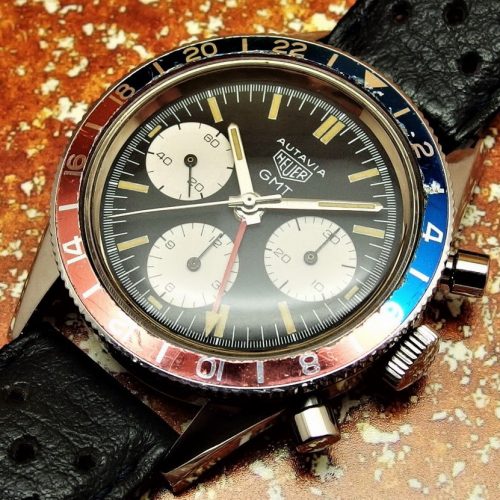
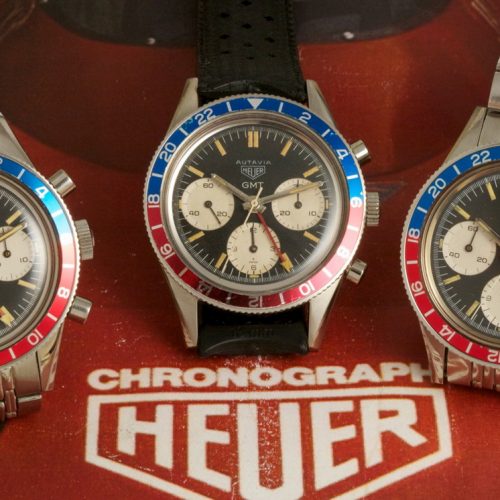
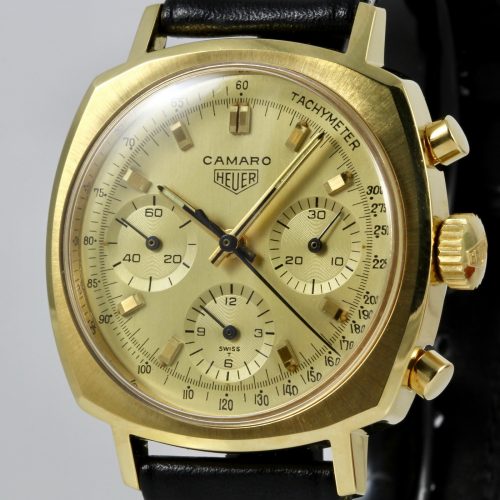
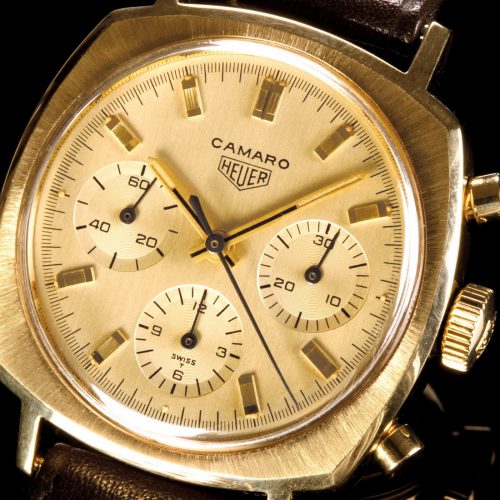
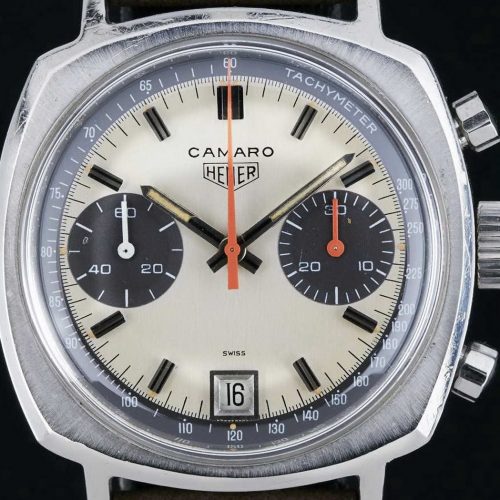
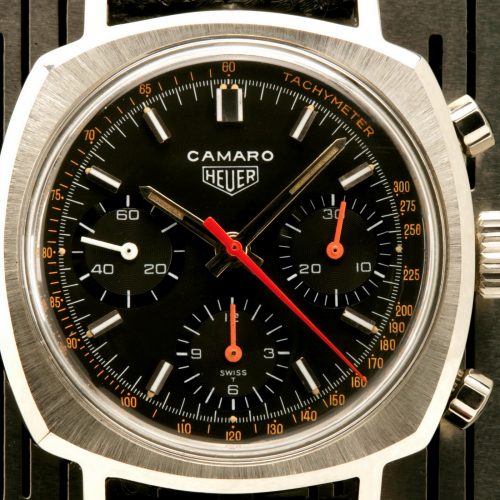
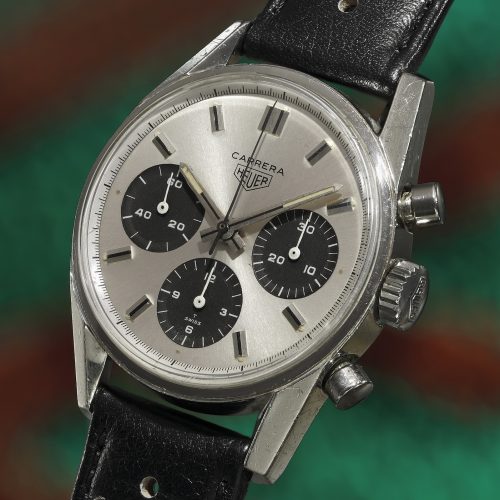
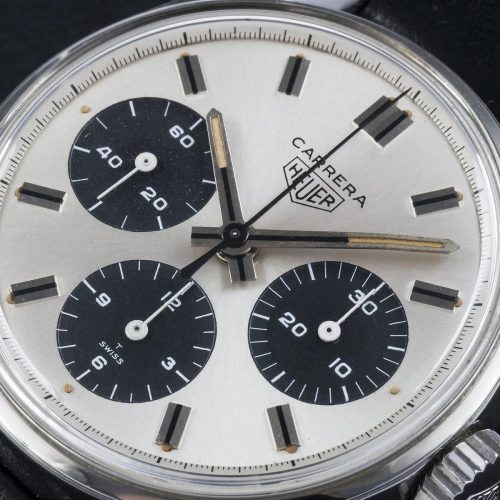
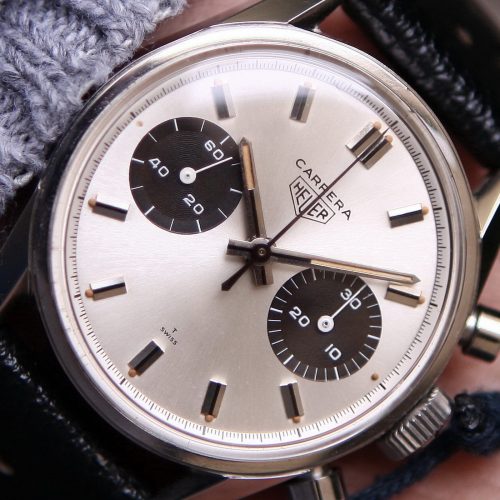
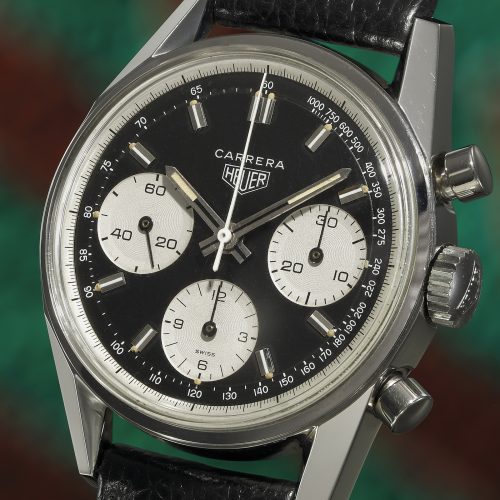
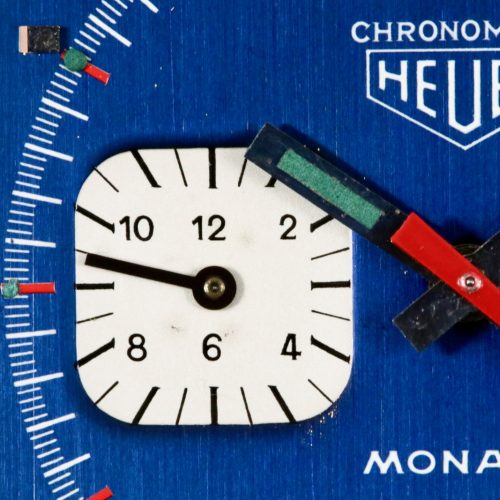
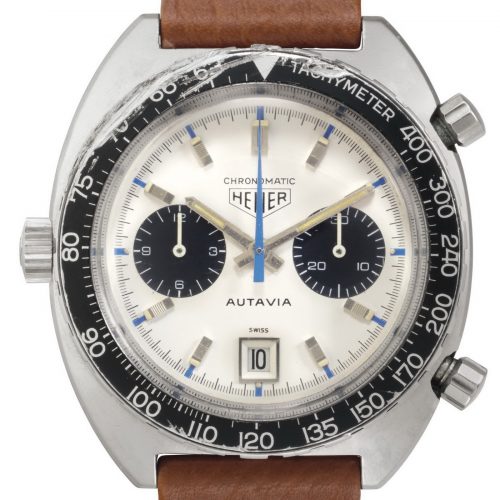
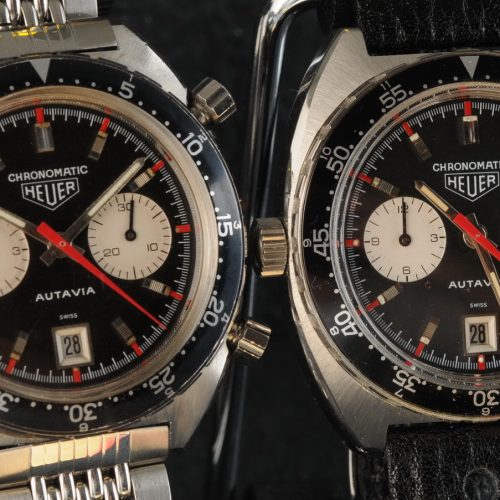
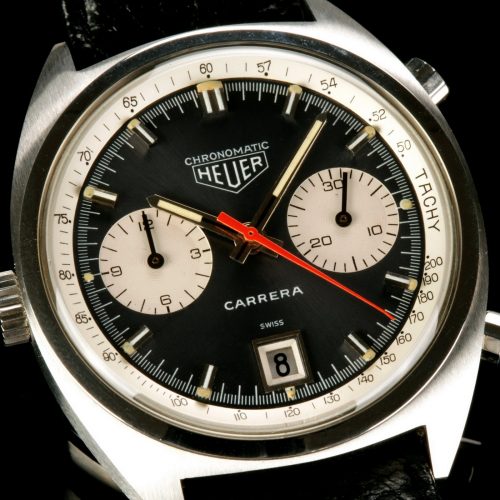
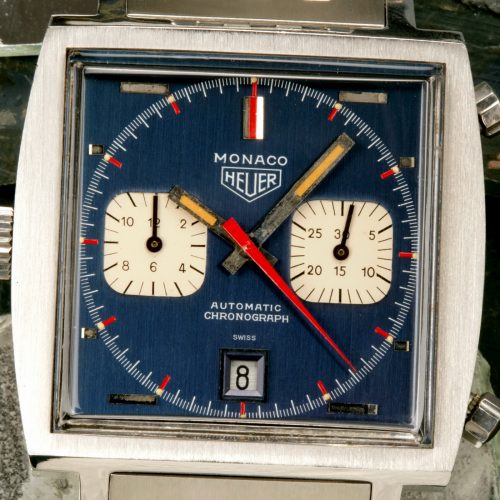
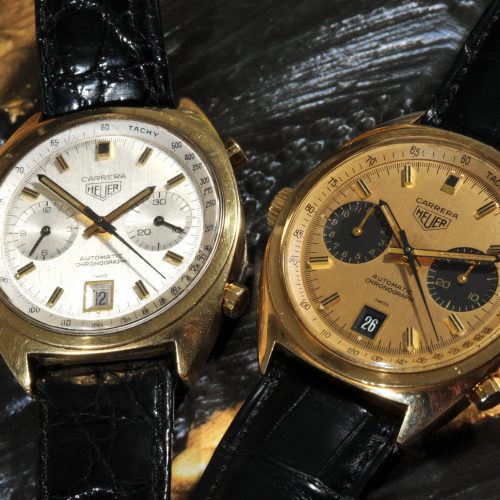
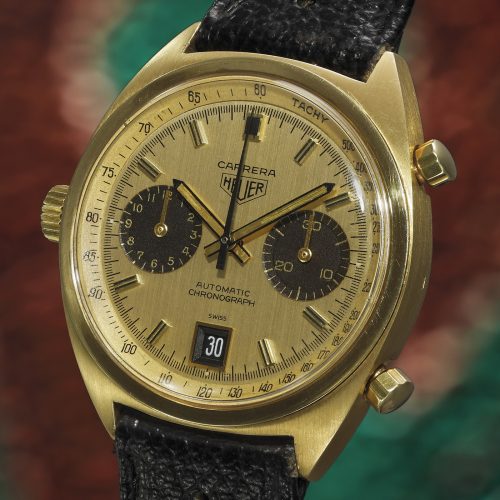
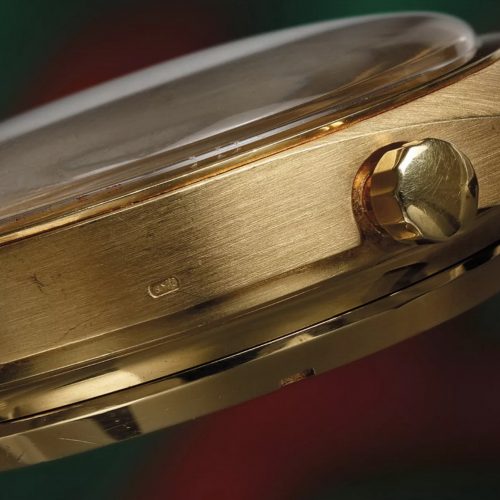
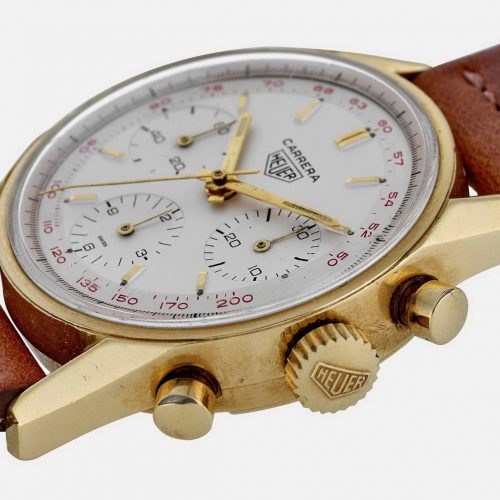
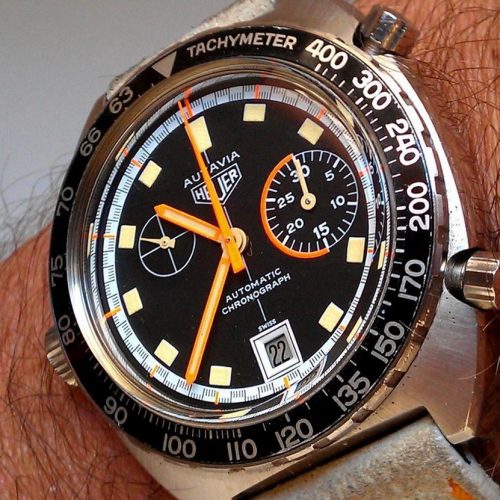
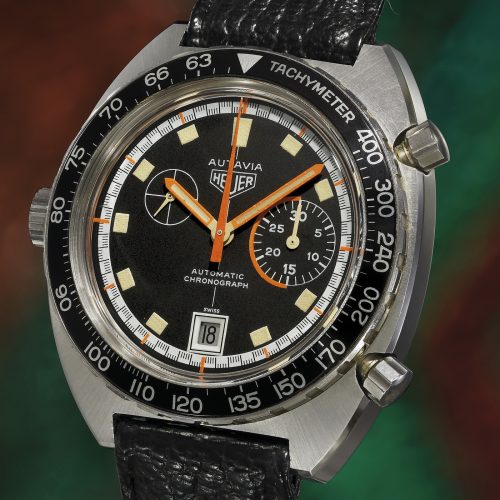
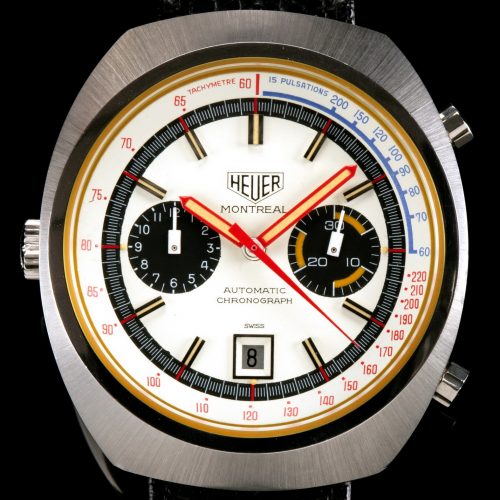
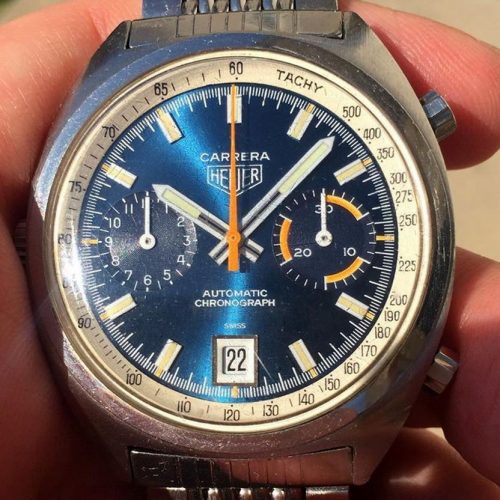
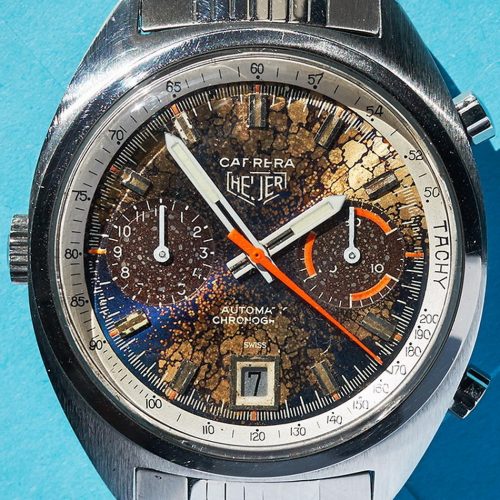
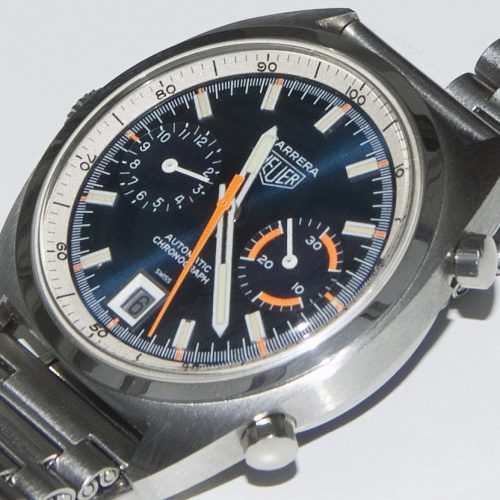
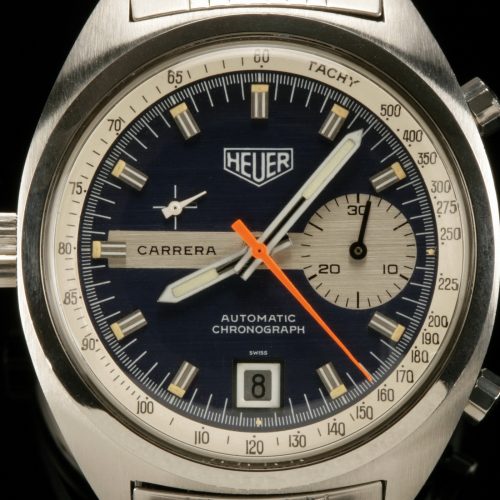
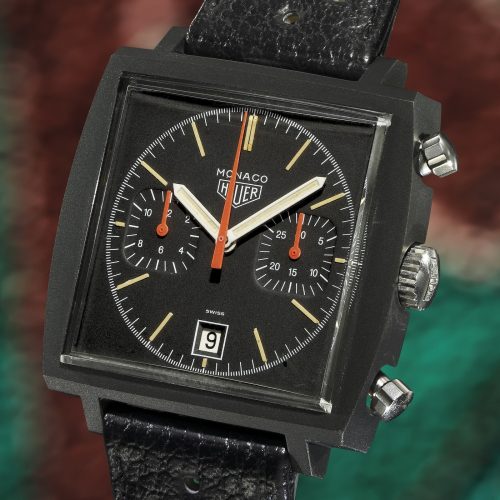
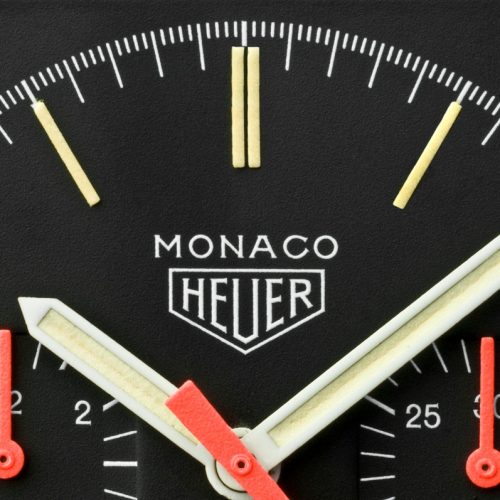
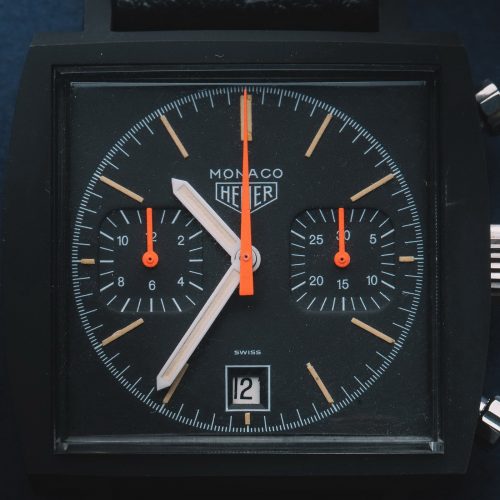
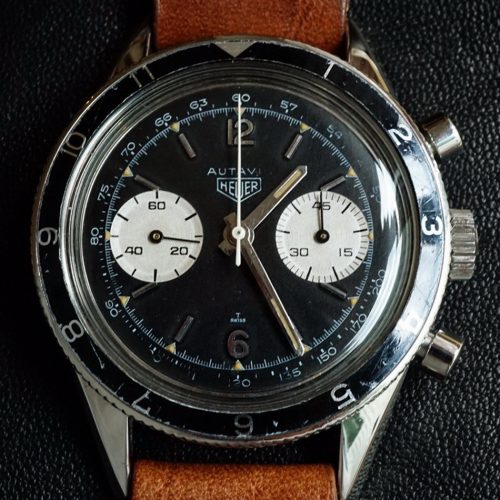
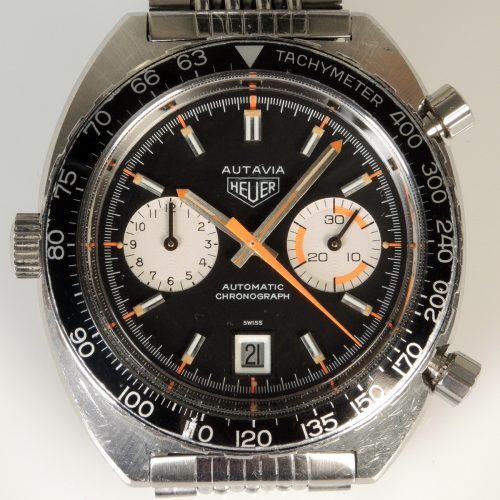
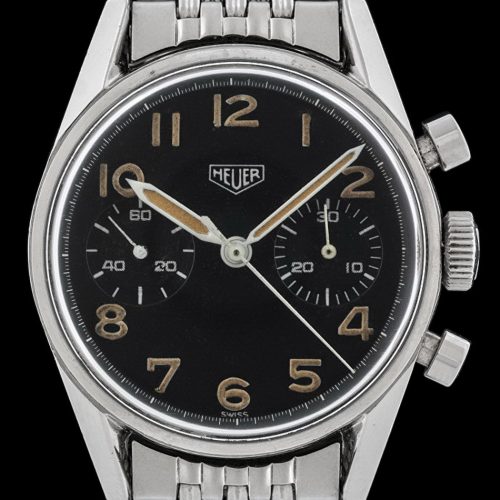
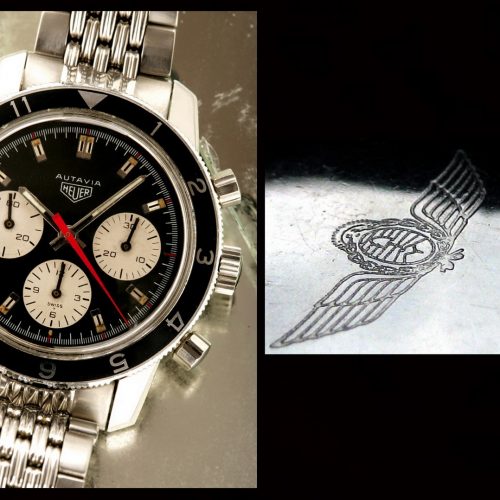
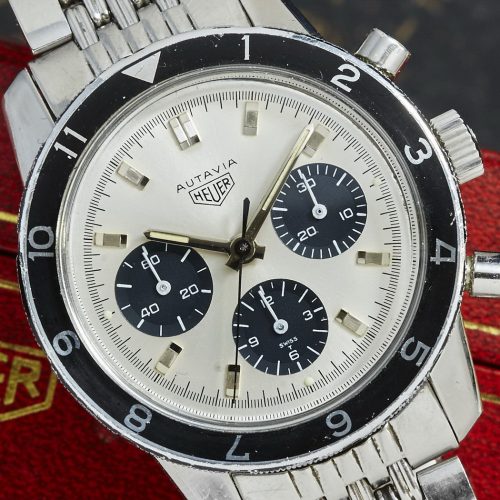
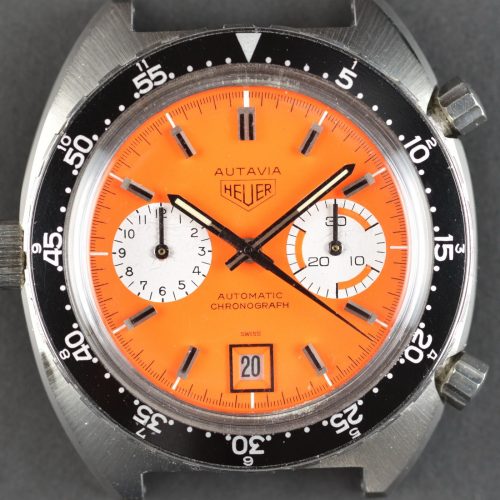
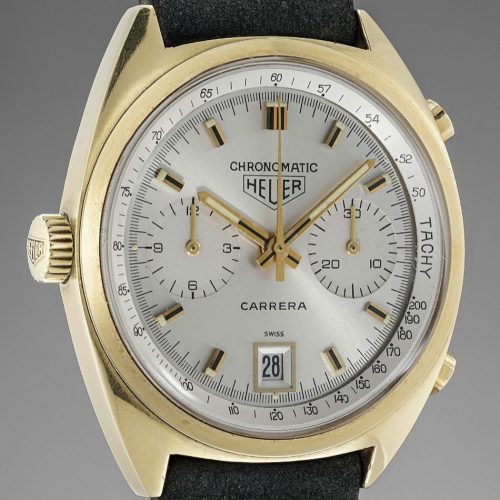
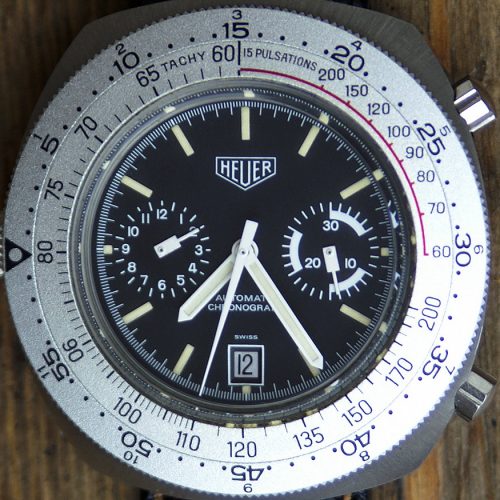
Photo Credits
Special thanks to Phillips Auction House for allowing me to use multiple images from the “Heuer Parade” auction, held in November 2017, including the beautiful hero image for this posting that shows five of the “grails”. Other images from Phillips include the following – Autavia, Ref 3646; Autavia, Ref 2446, second execution dial; Carrera, Ref 2447 Yachting; Autavia, Ref 2446 GMT; Carrera, Ref 2447 SN; Carrera, Ref 2447 NST; Carrera 45 Dato, with Indianapolis Motor Speedway logo; Carrera, Ref 1158 CHN; Autavia, Ref 1563 “Exotic”; and Monaco, Ref 74033 N (two photos). Be sure to follow @PhillipsWatches on Instagram.
Many members of our community have allowed us to use their fantastic photos OnTheDash and in this posting. Sincere thanks to the following contributors:
- @Analog Shift — Autavia 2446C SN; Ref 2447 NT; Skipperrera
- Bachmann & Scher – Carrera, Ref 2447 Yachting
- @bazamu — Carrera, Ref 2447 NT
- Christie’s Watches – Autavia with Indianapolis Motor Speedway logo; Chronomatic Autavia, Ref 1163T
- Abel Court / @heuertime_Abel_Court – Camaro, Ref 7228T
- @DiveTimer – Reference 2447 N, gilt dial
- Arno Haslinger / @HeuerChronos – Camaro Ref 7228; Chronomatic Carrera, Ref 1153N; Monaco, Ref 1133B, Transitional; Montreal, Ref 110.503; Carrera, Ref 1553 N
- Henrik / @HeuerChrono – Skipperrera
- Hodinkee.com – Skipper LE re-issue; 18 KG Carrera, Ref 2456 T
- @Johnswatches – Carrera, Ref 1153 BN
- Laurent / @NoodiaWatch – Autavia, Ref 1563 “Exotic”
- Peter / @petermmdk — Orange Autavia, Ref 1163
- @Rarebirds – Autavia, Ref 2446, First Execution; Carrera, Ref 1153 BN;
- @therustywatchguy – Autavia, Ref 2446 GMT
- Shaun / @Neutrino14 – Carrera, Ref 1153 BN (decimal bezel)
- @WatchFred – Skipperrera
- @Watchonista – Skipperrera
